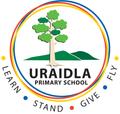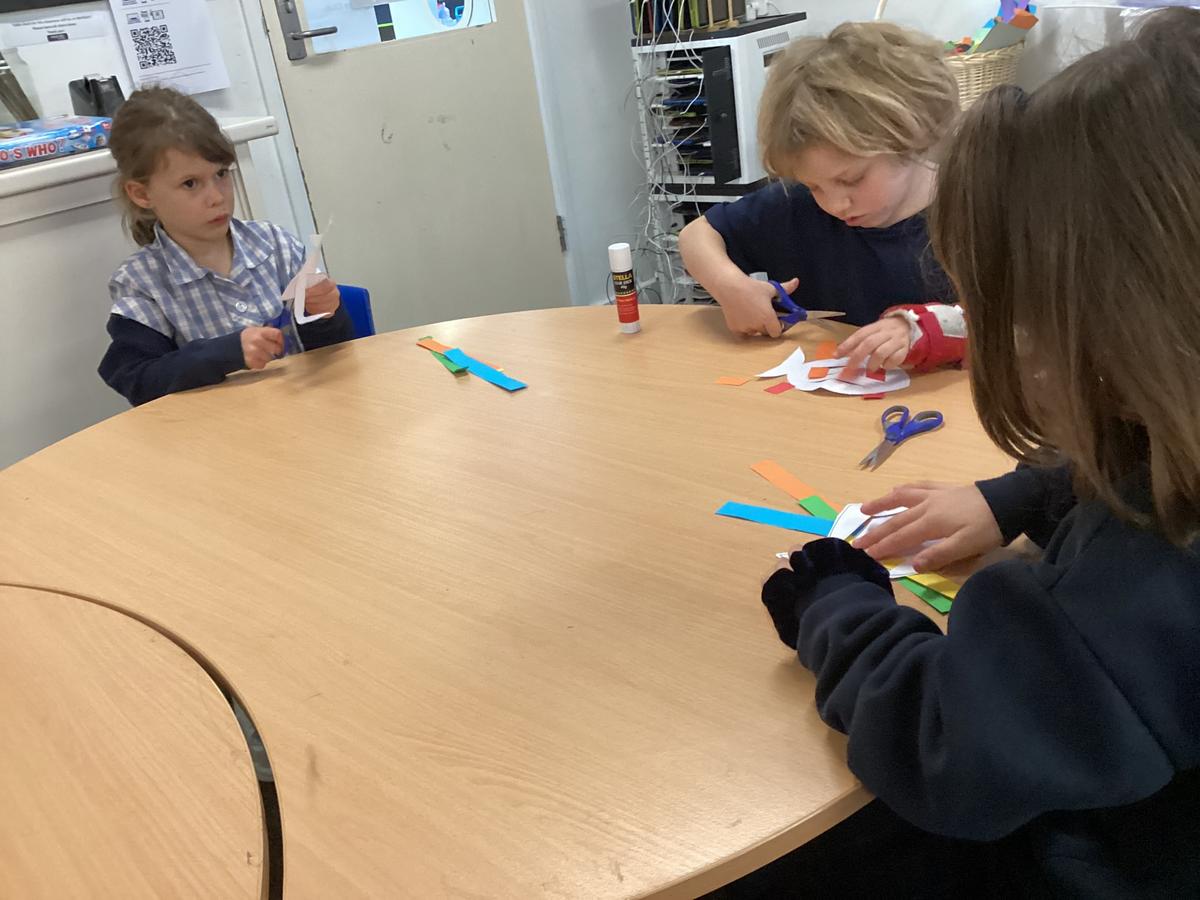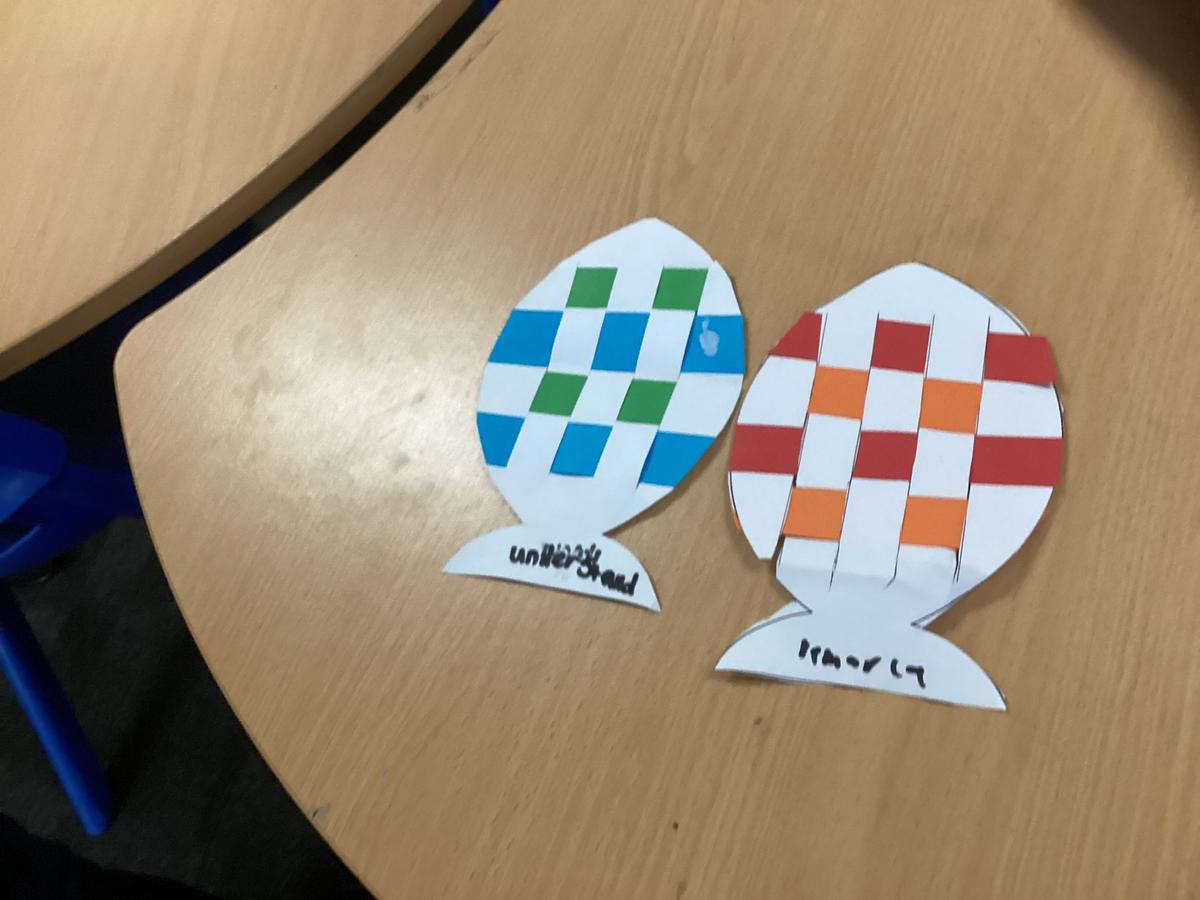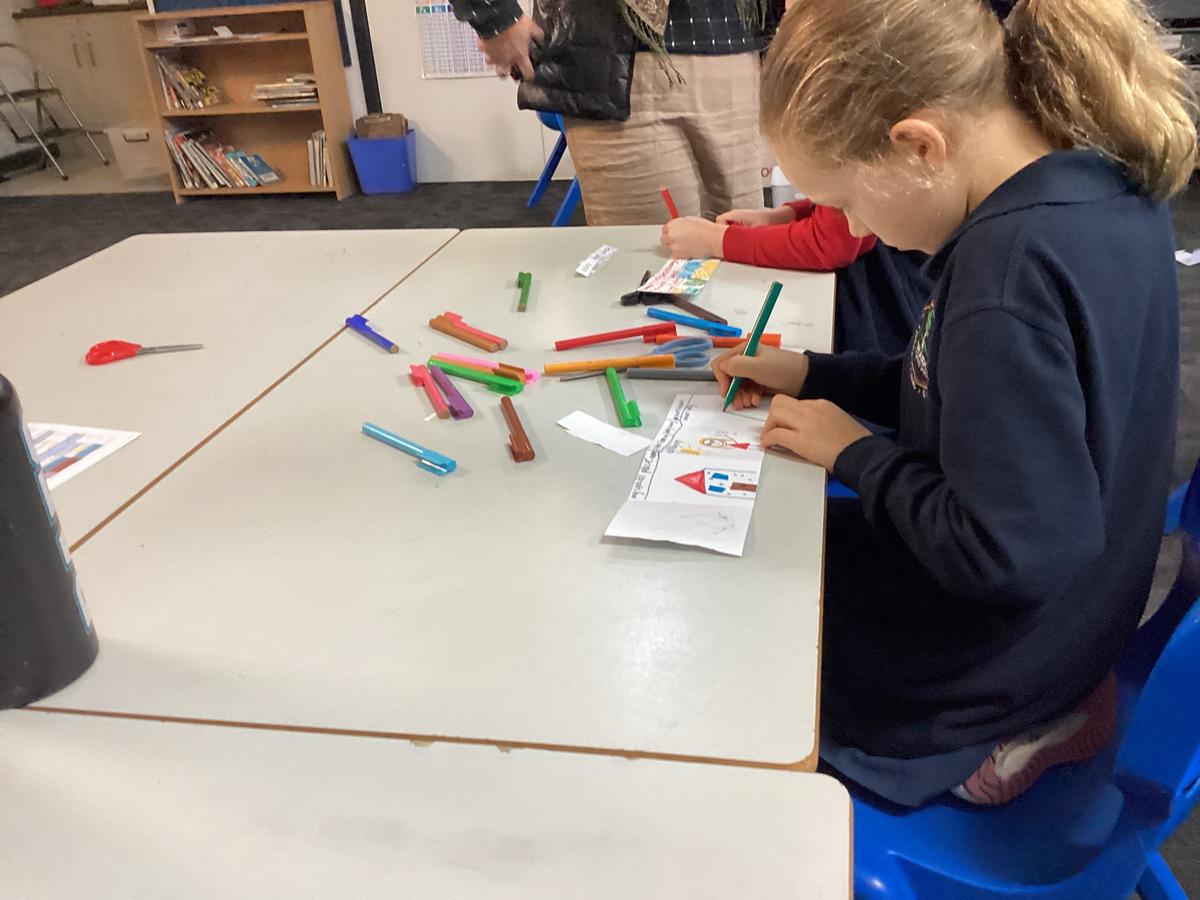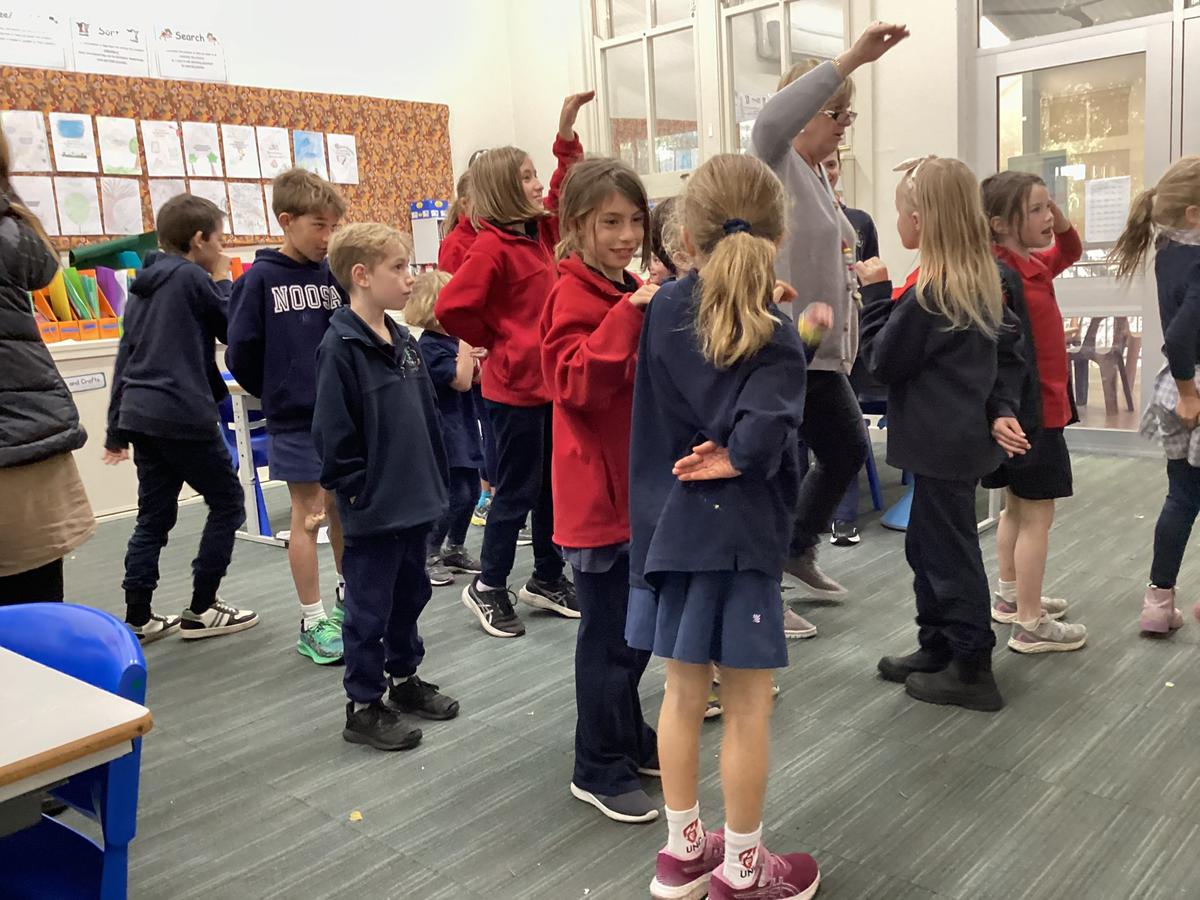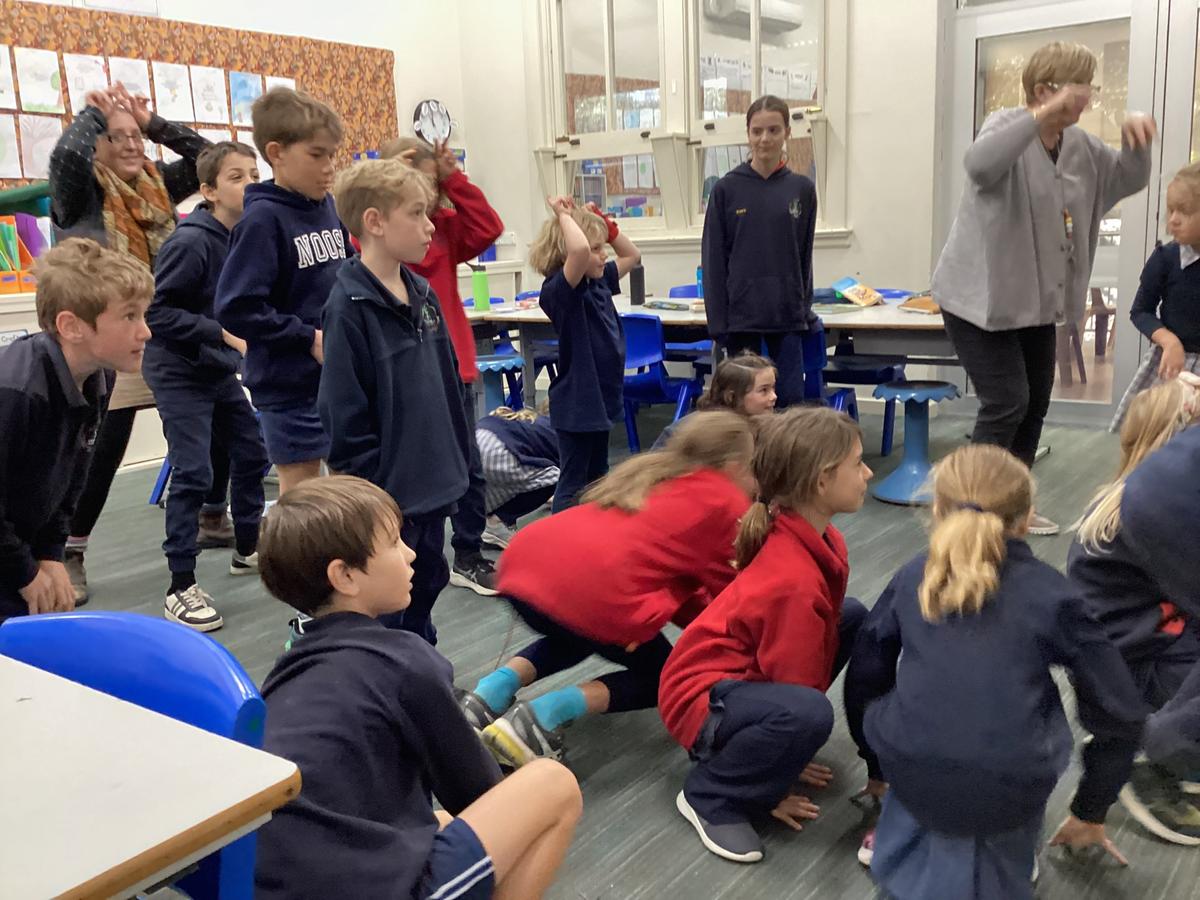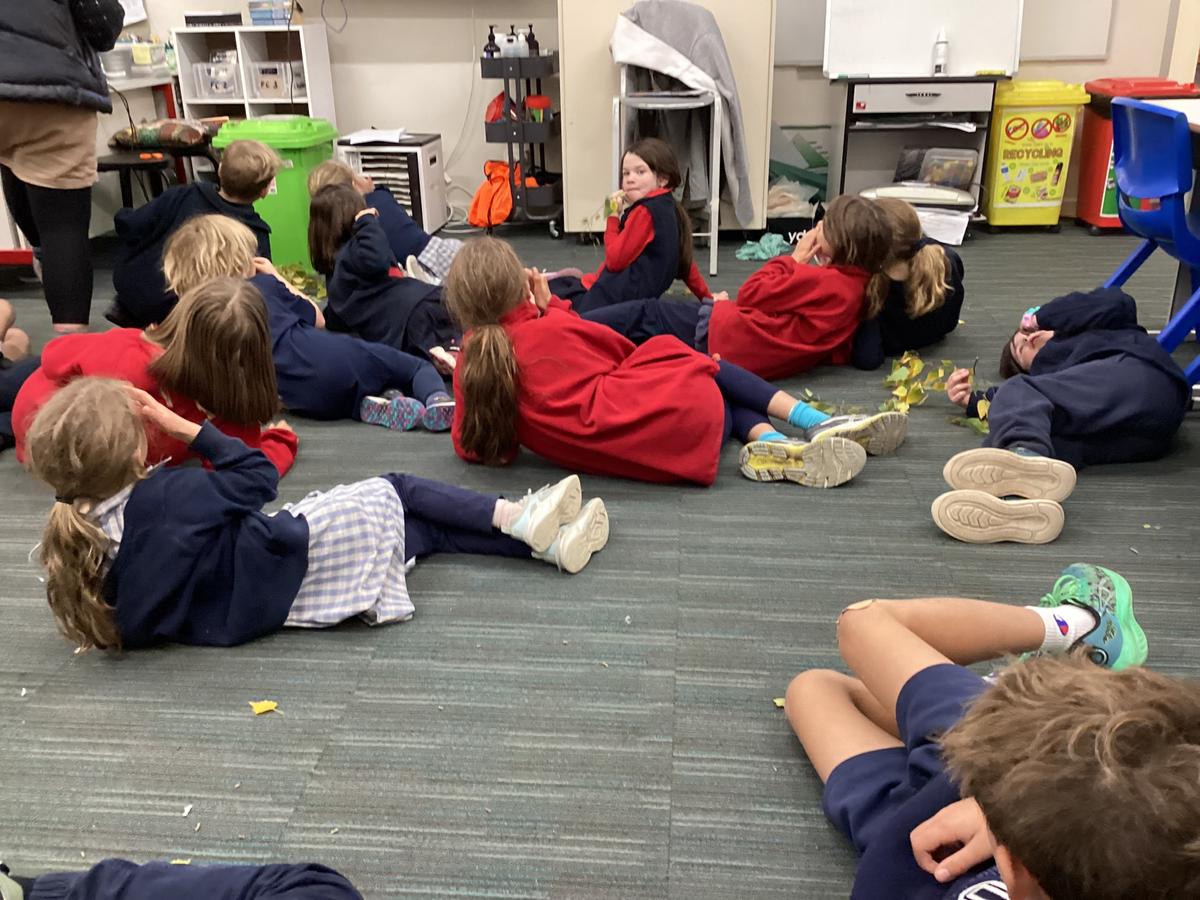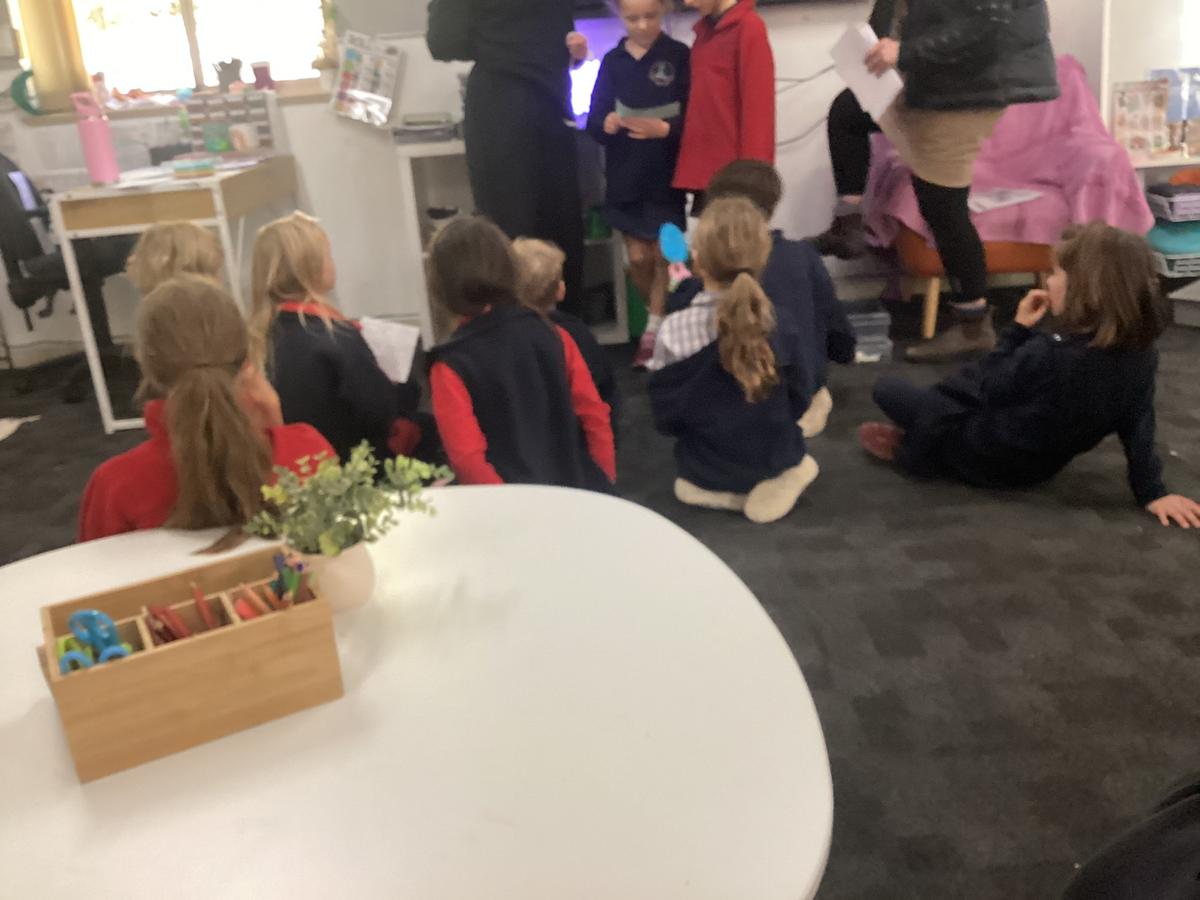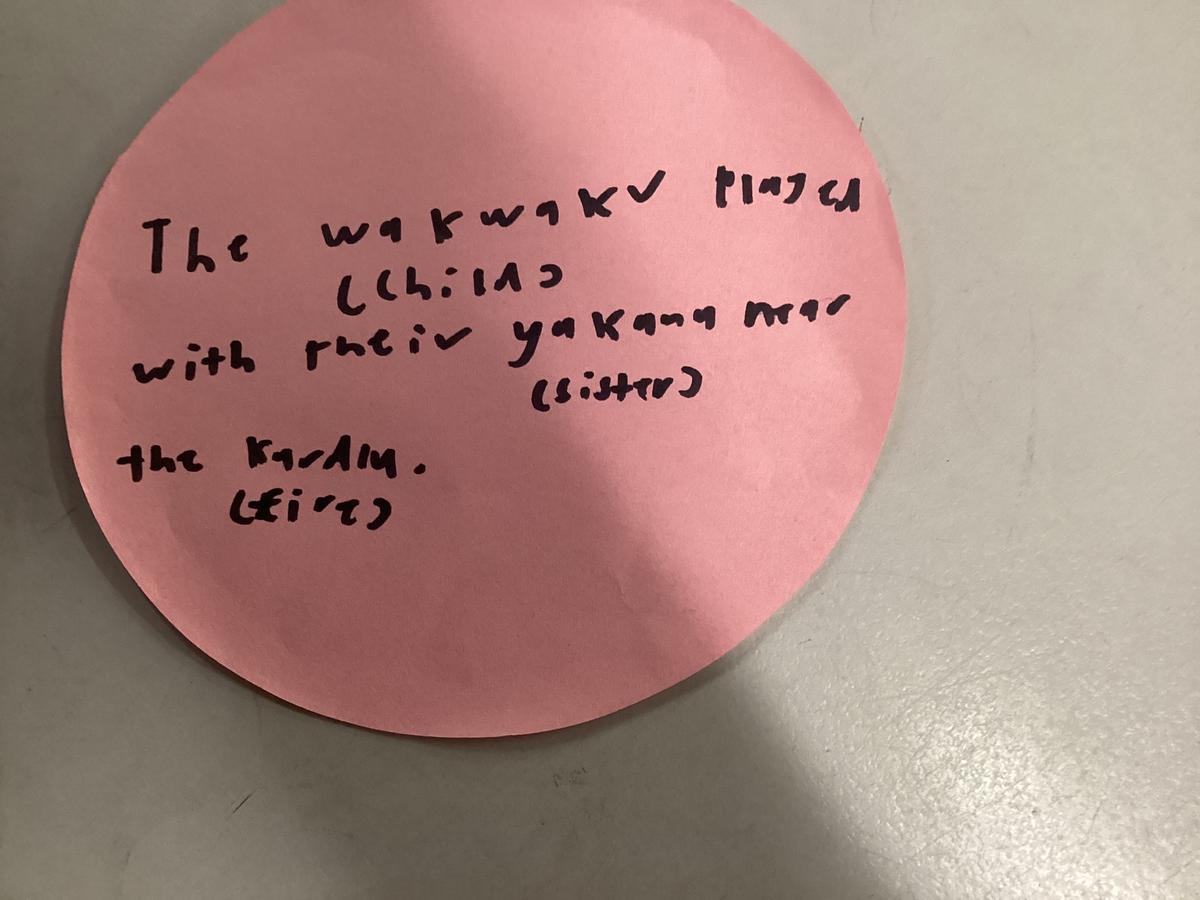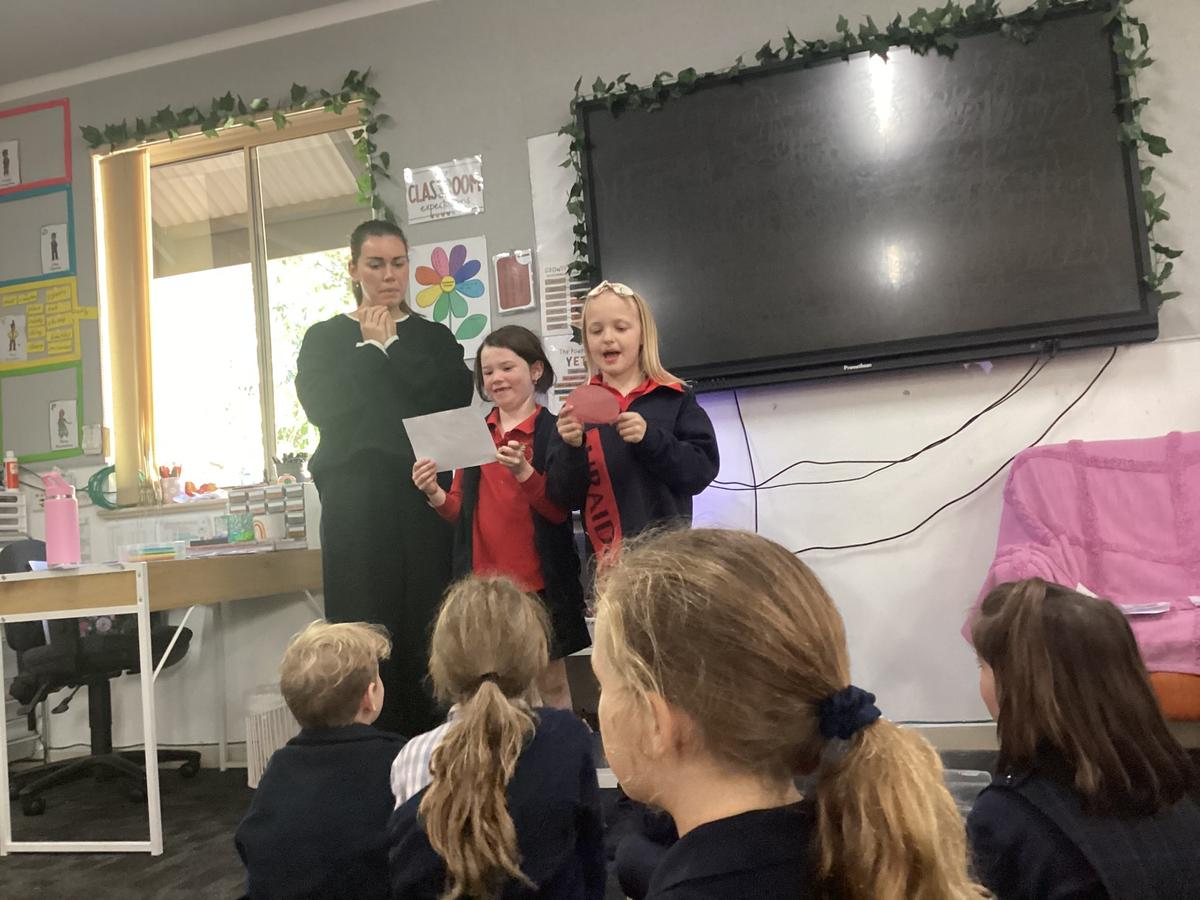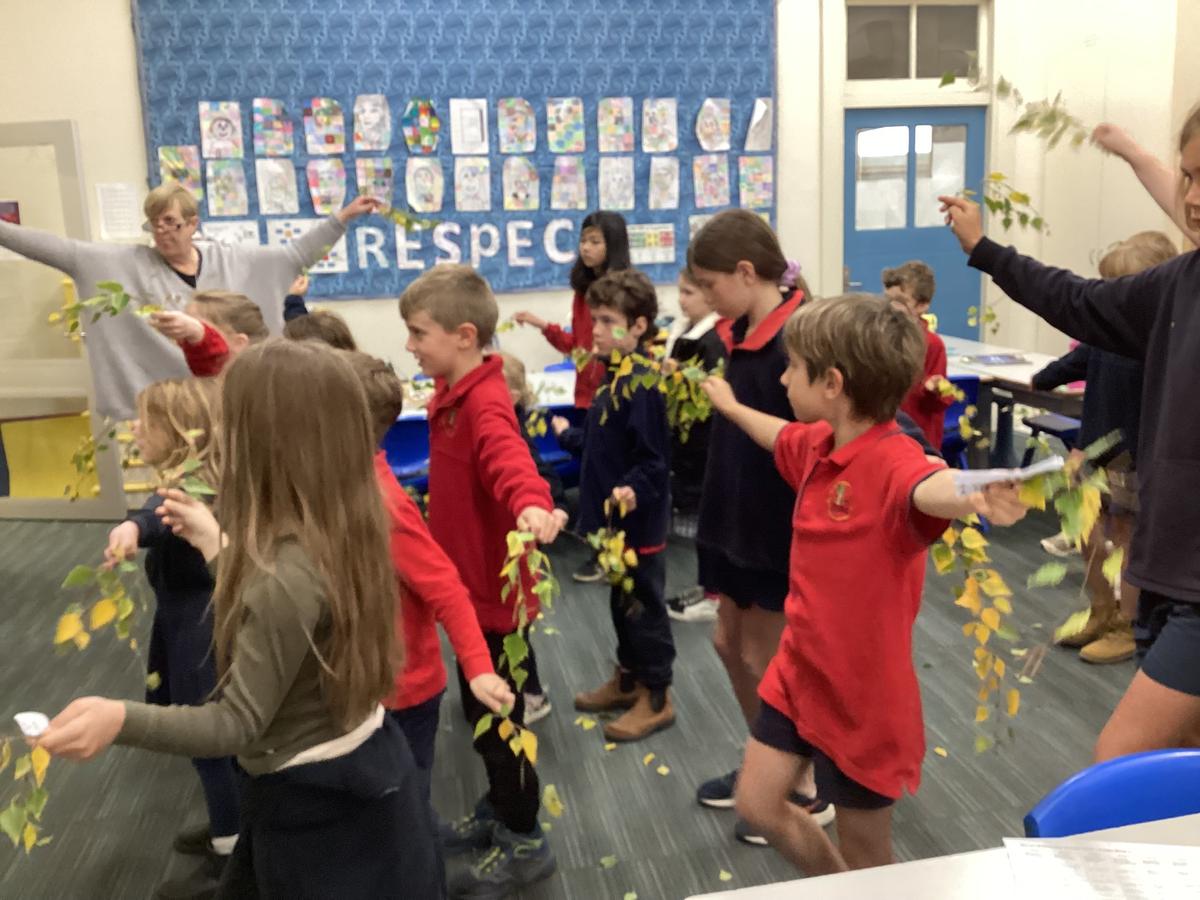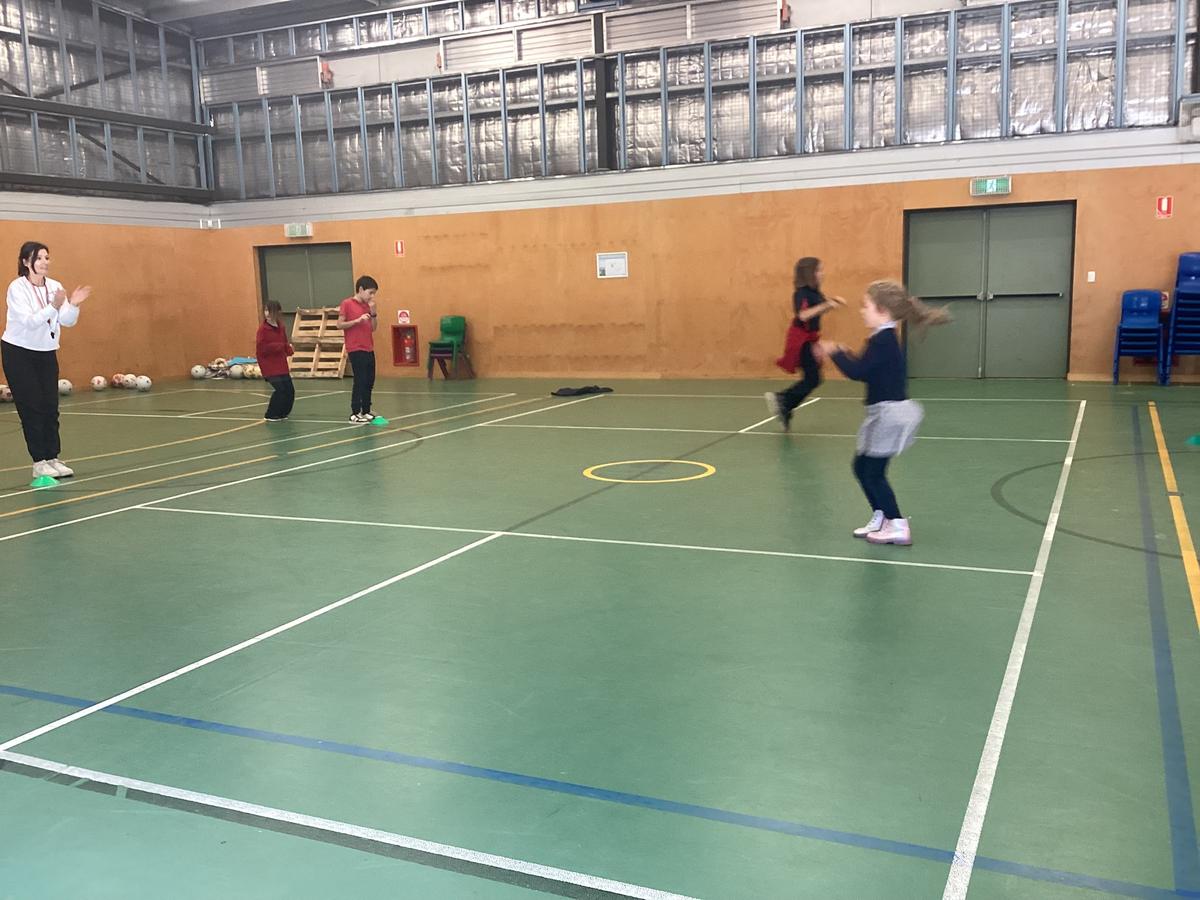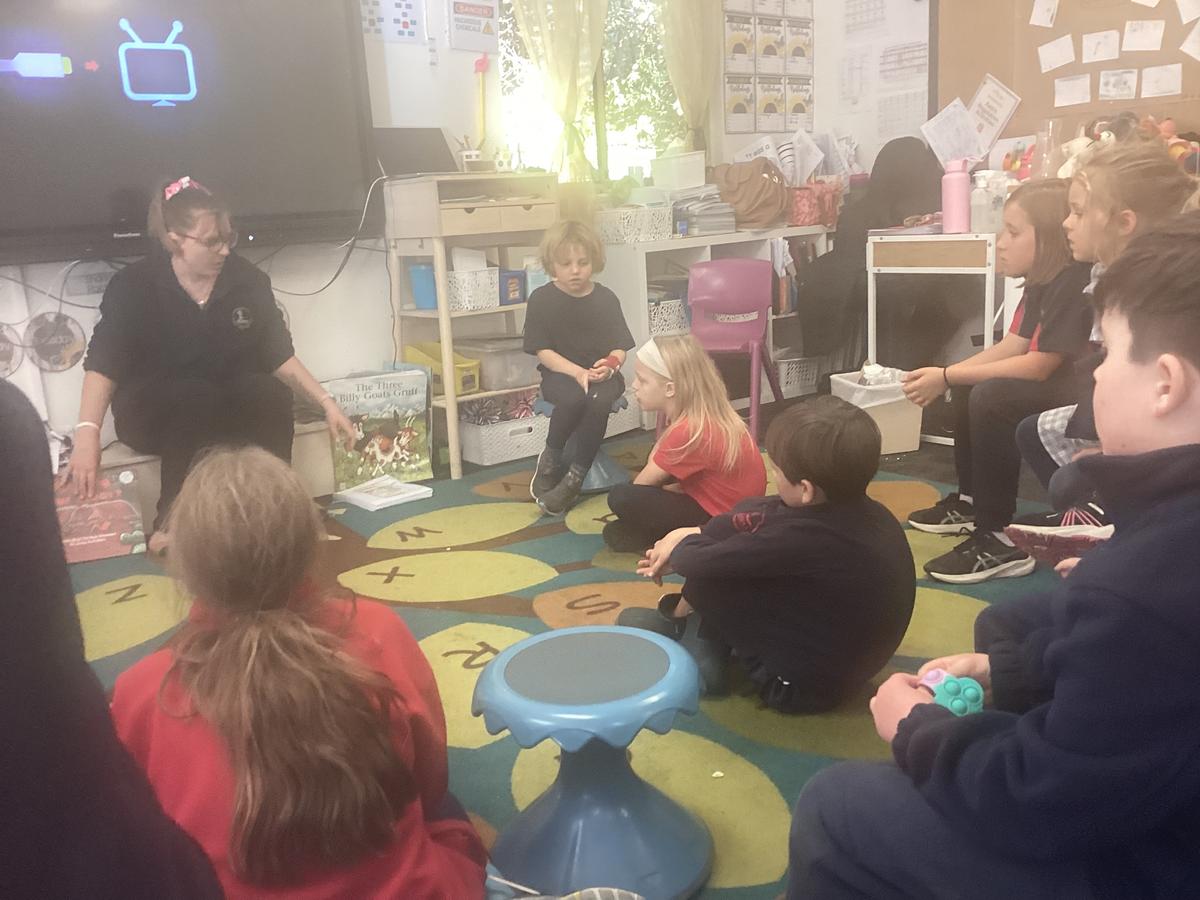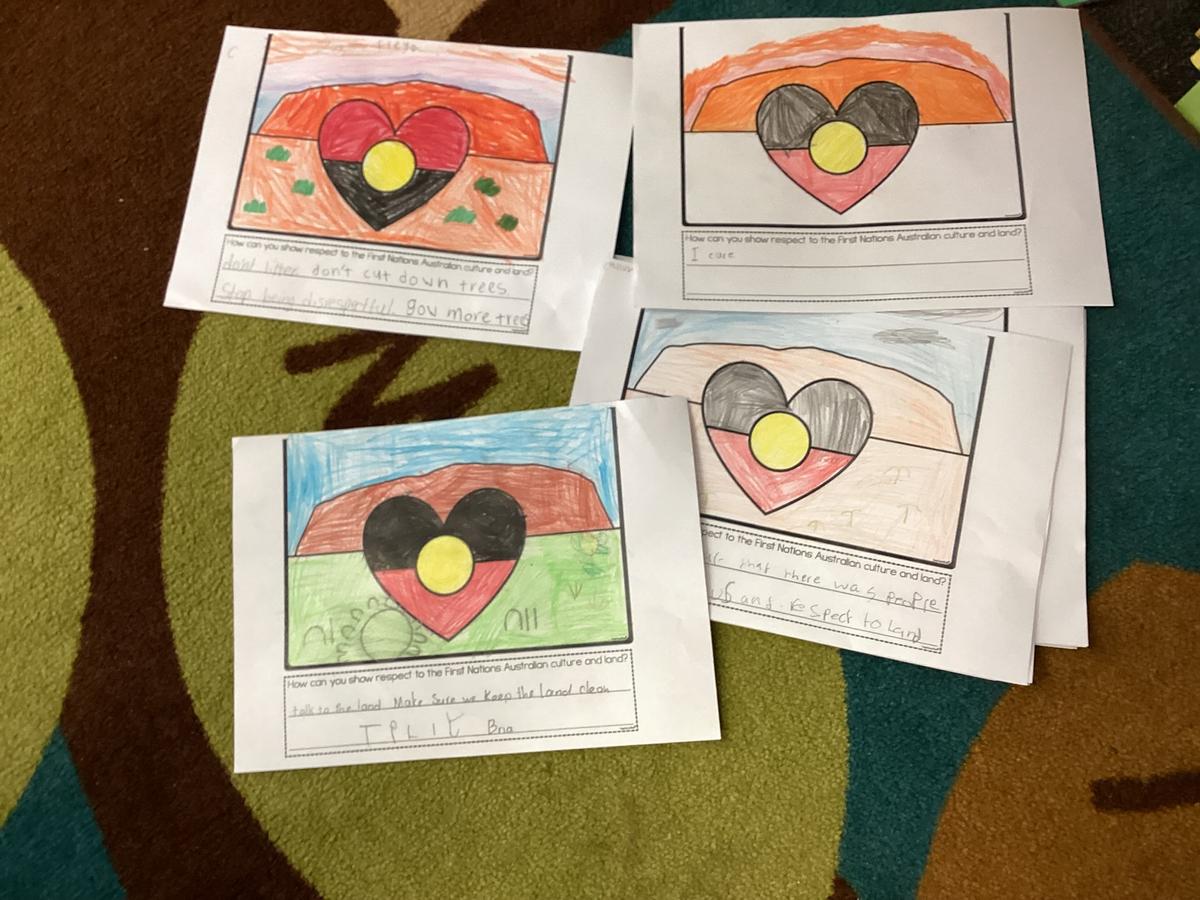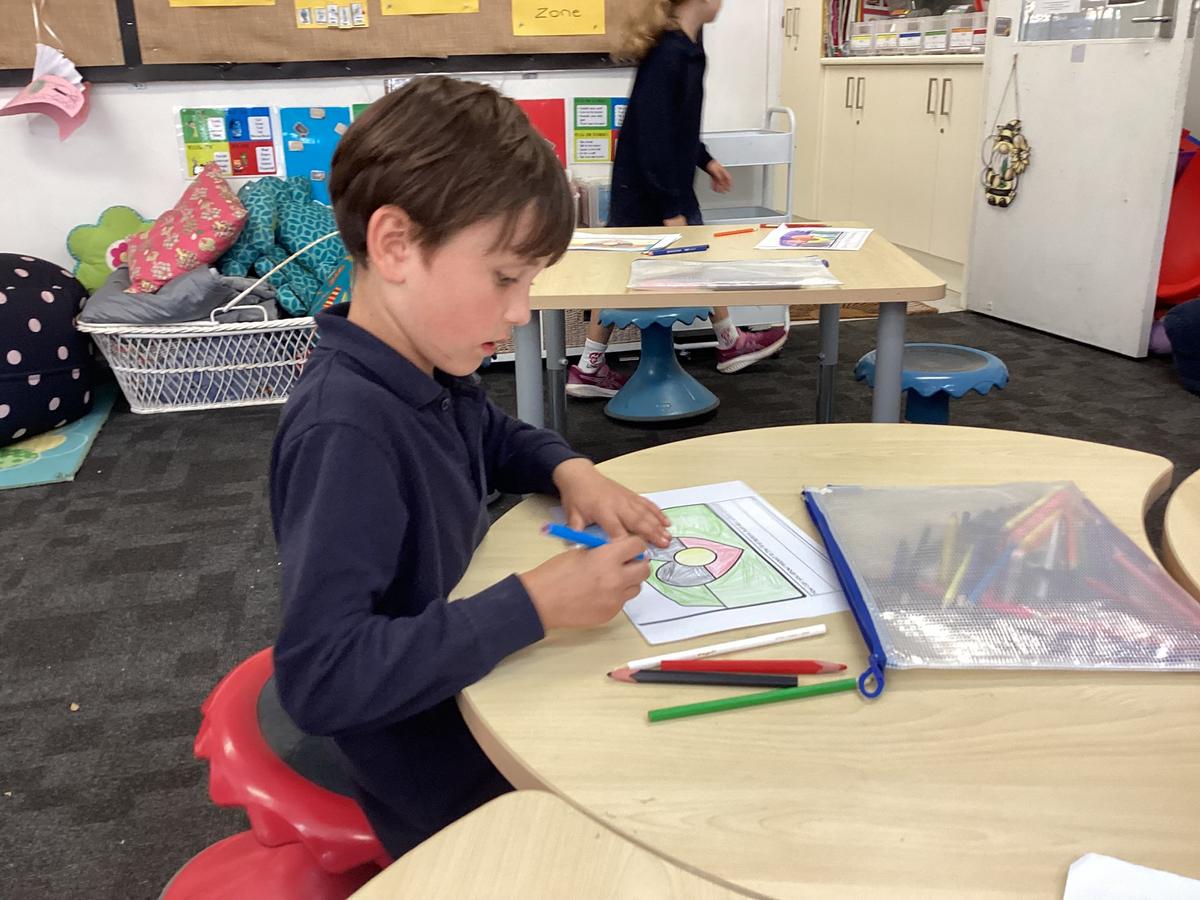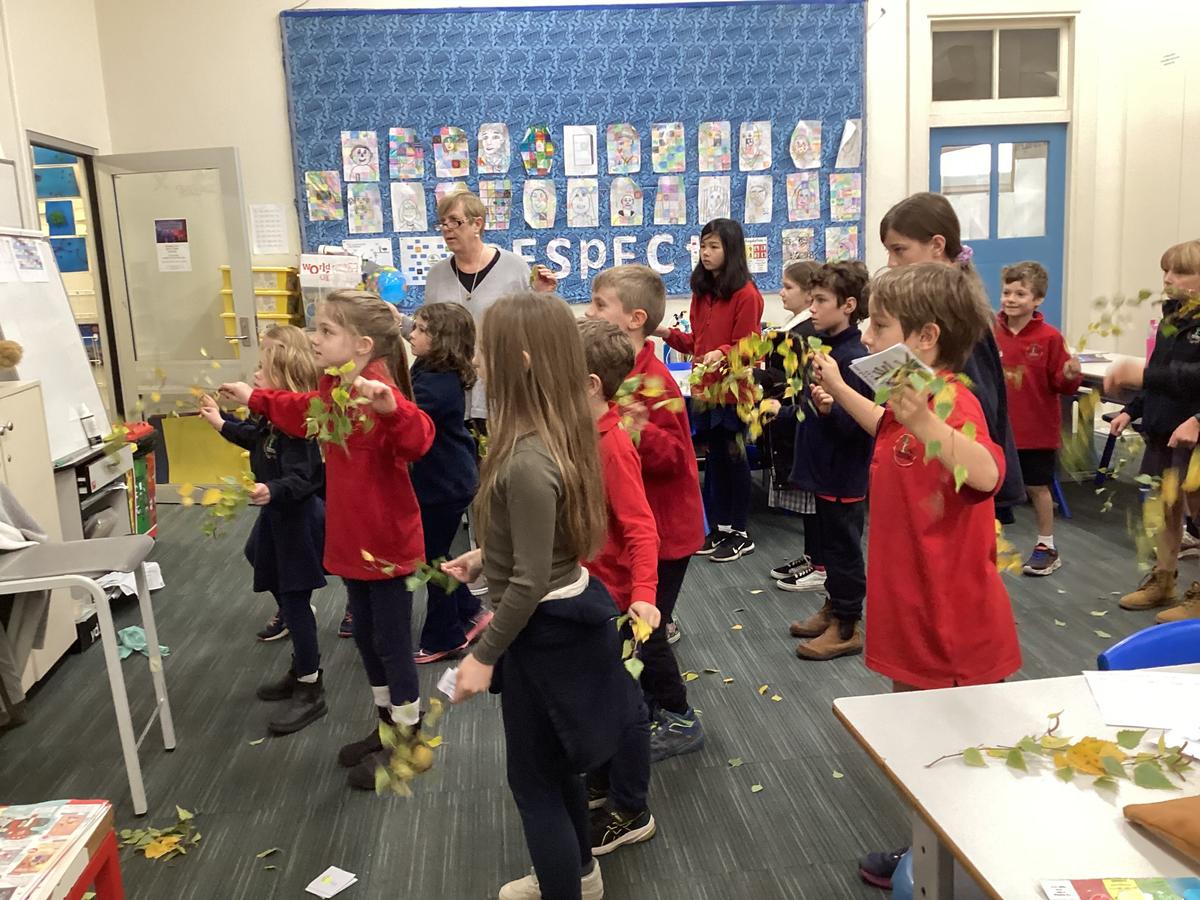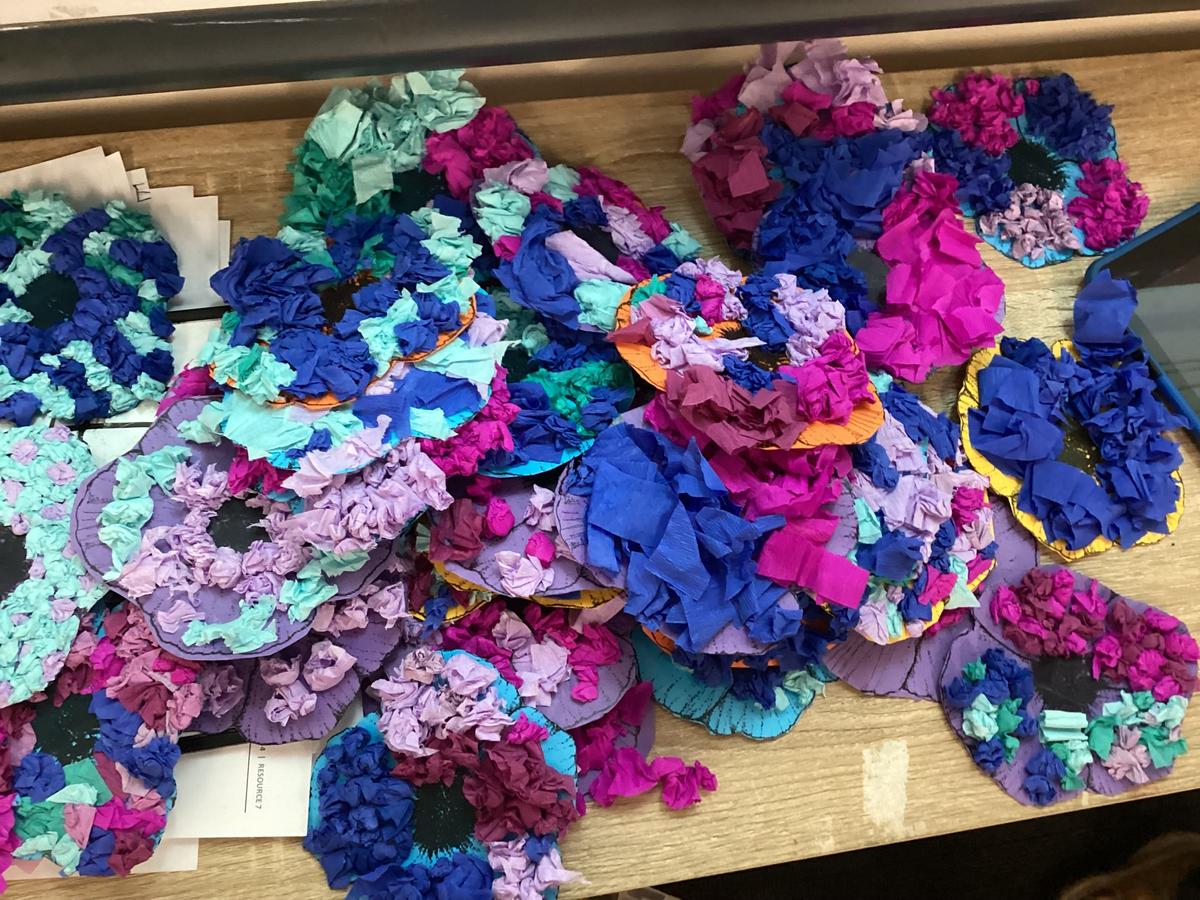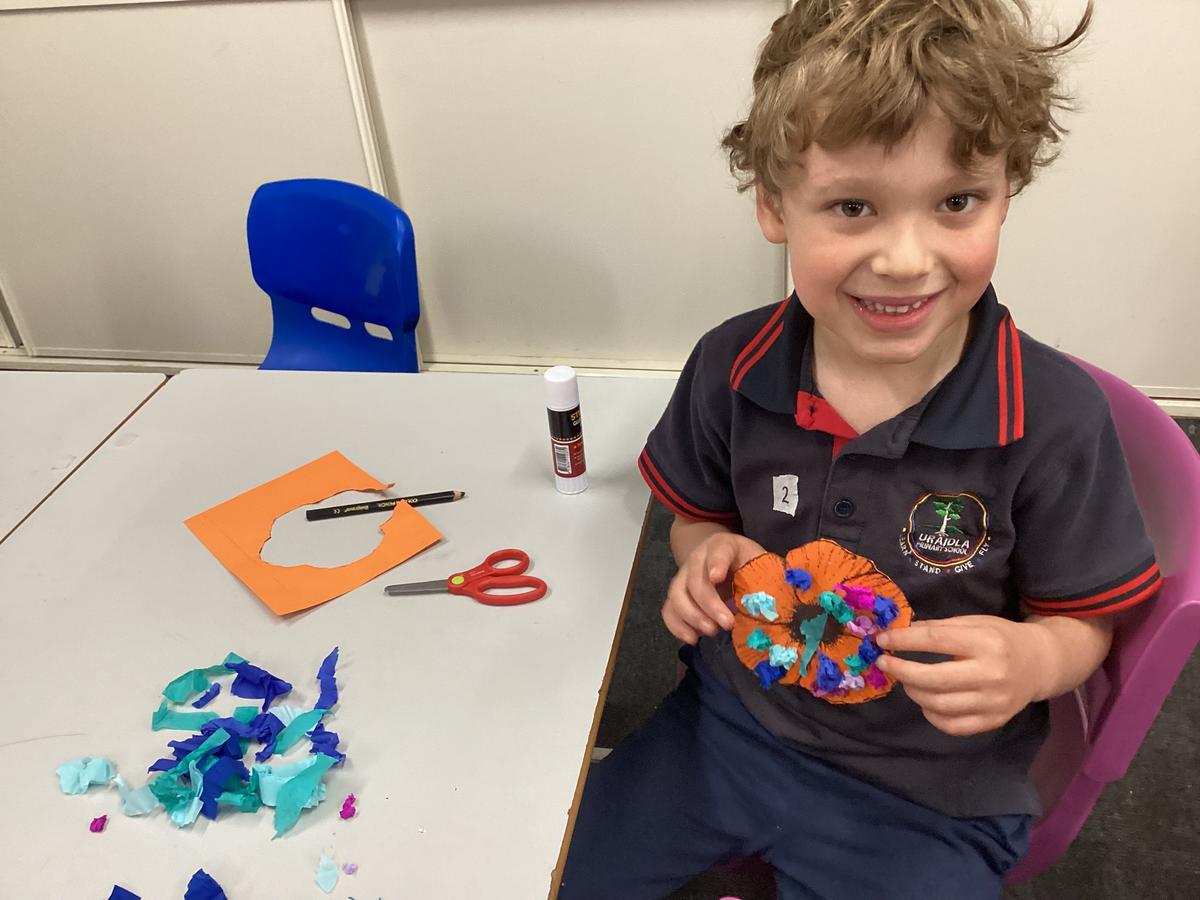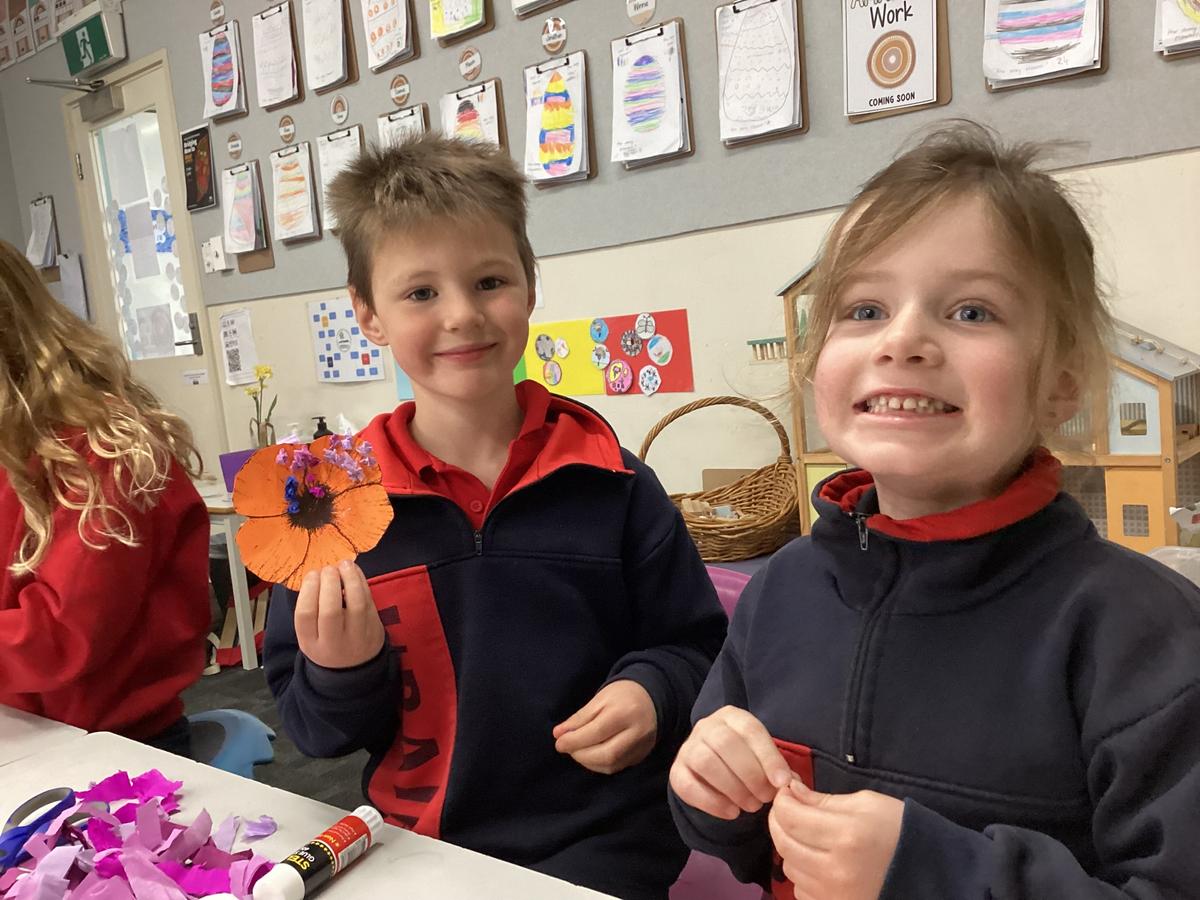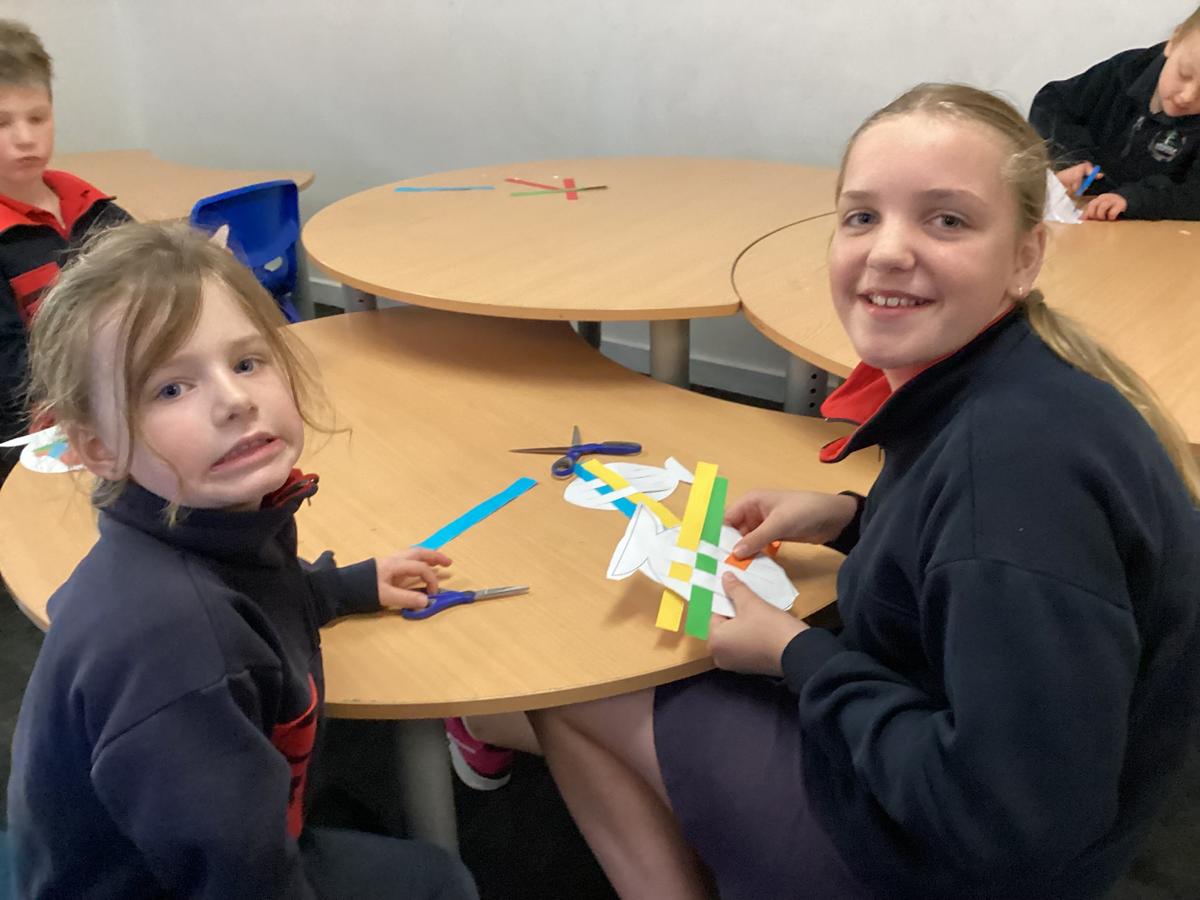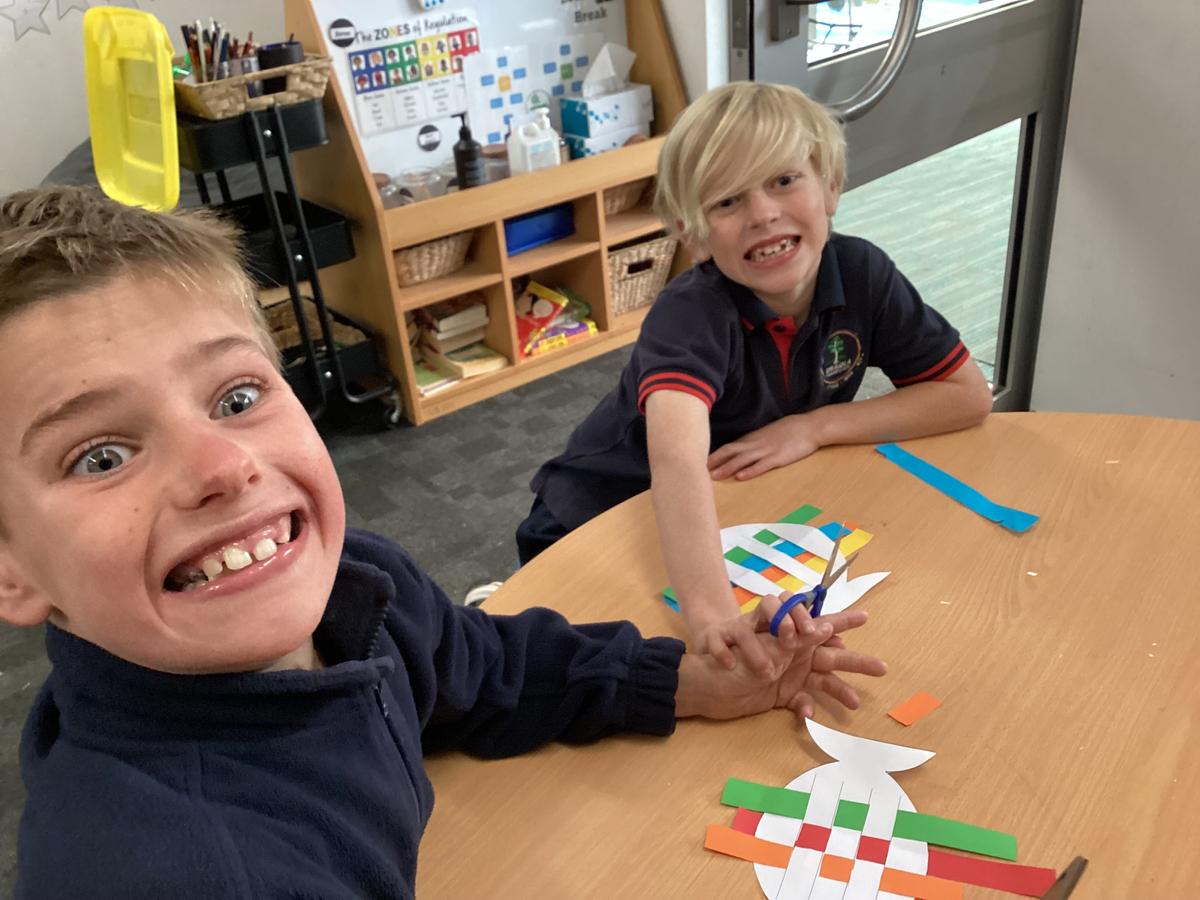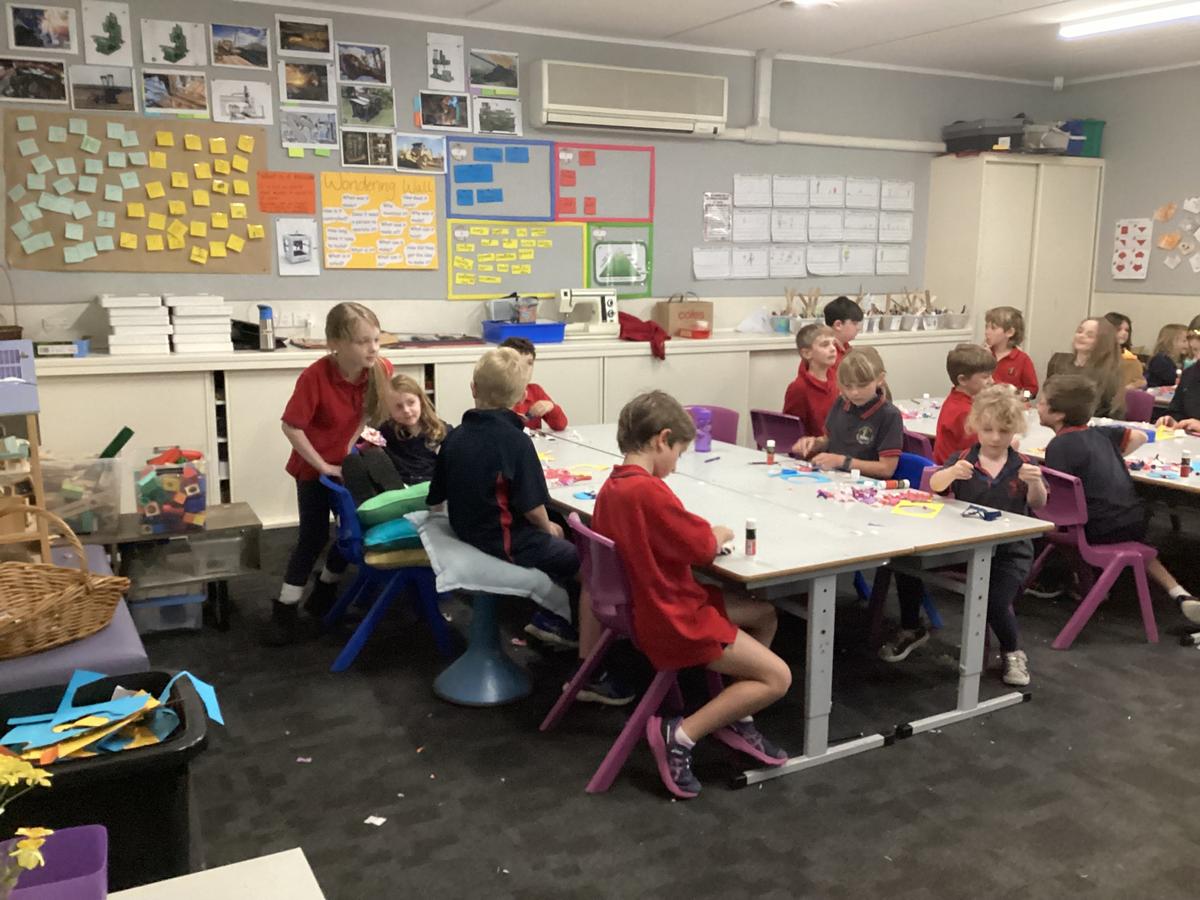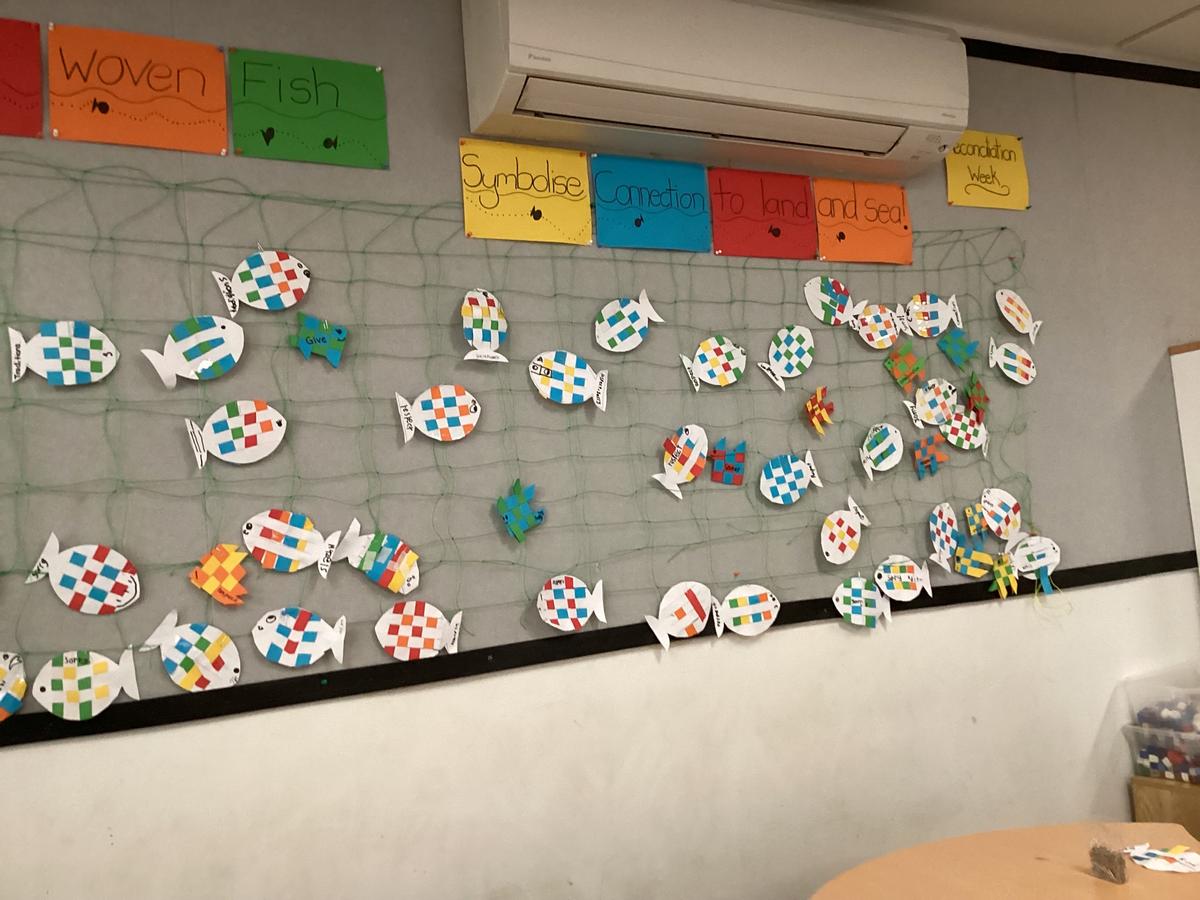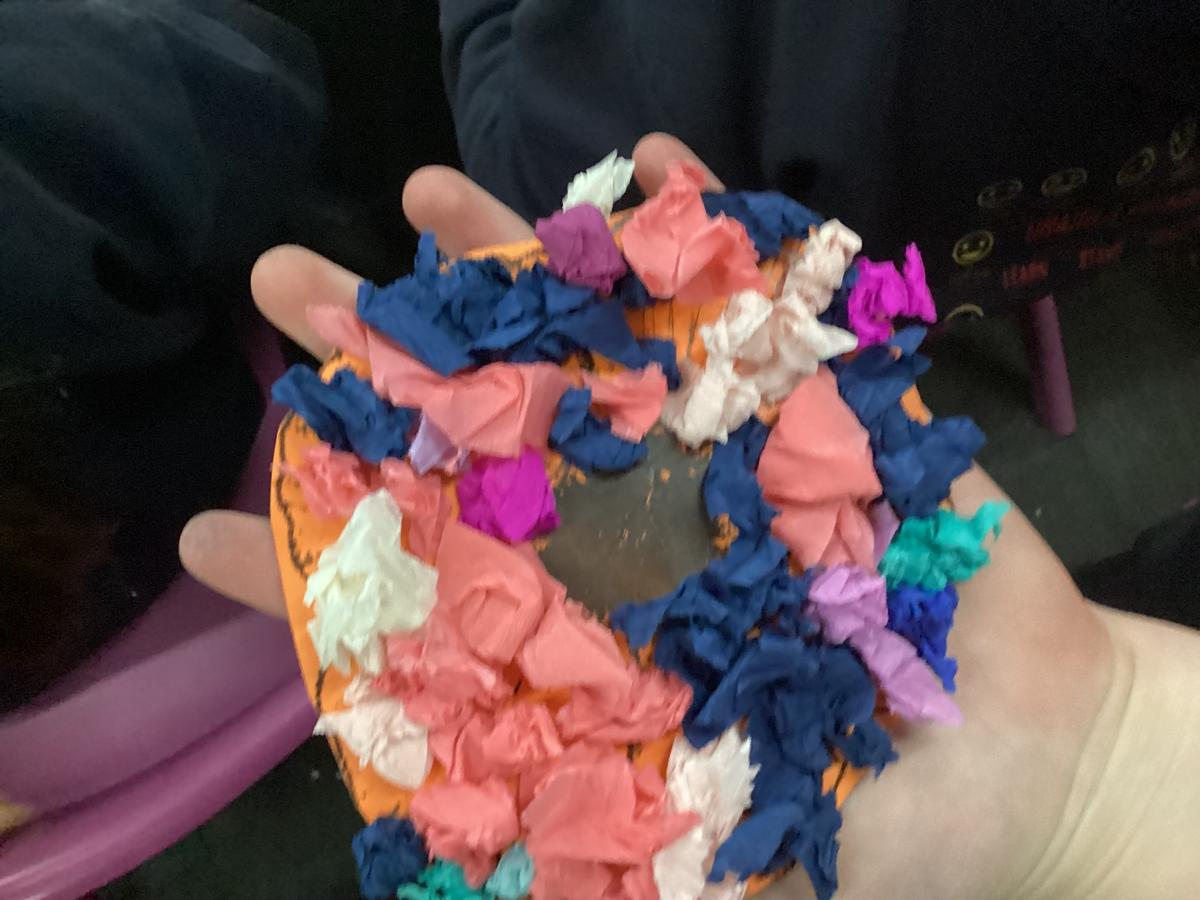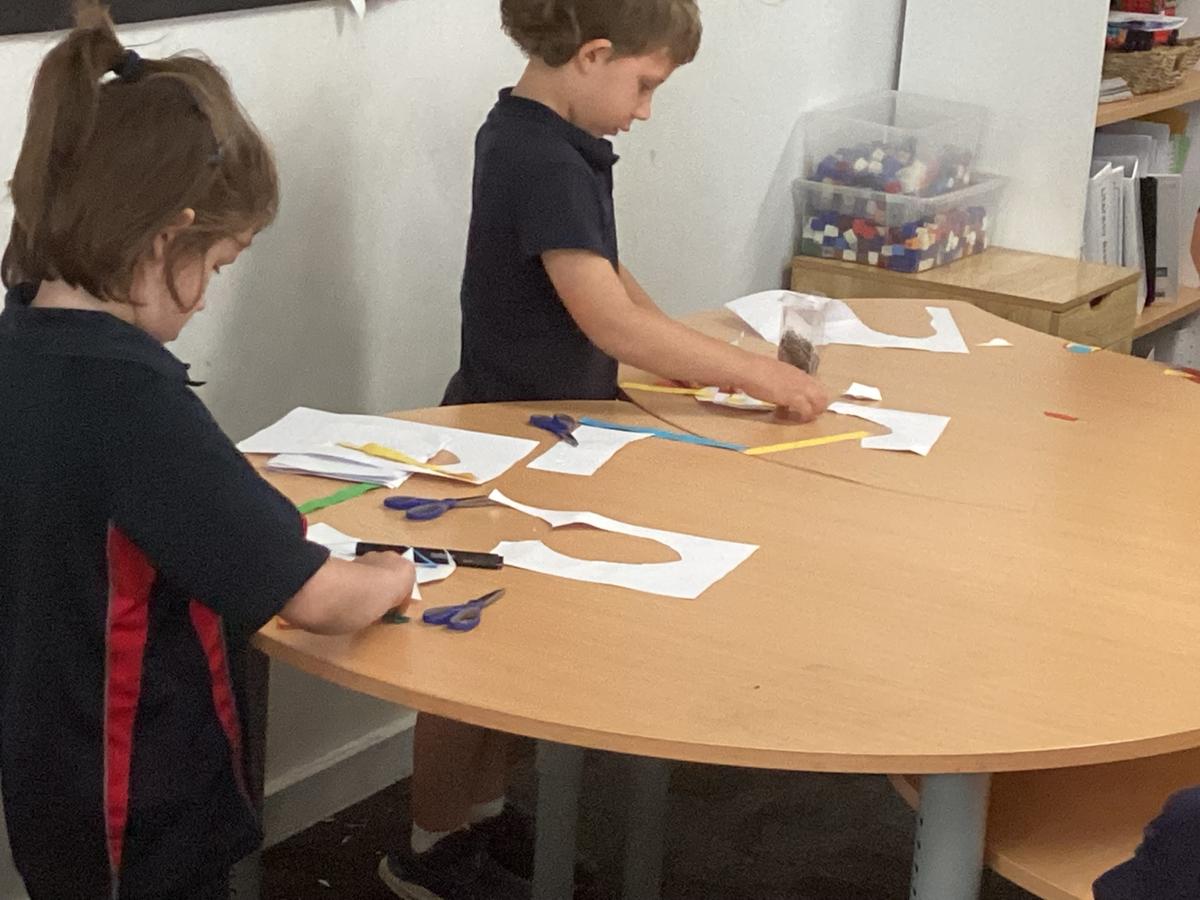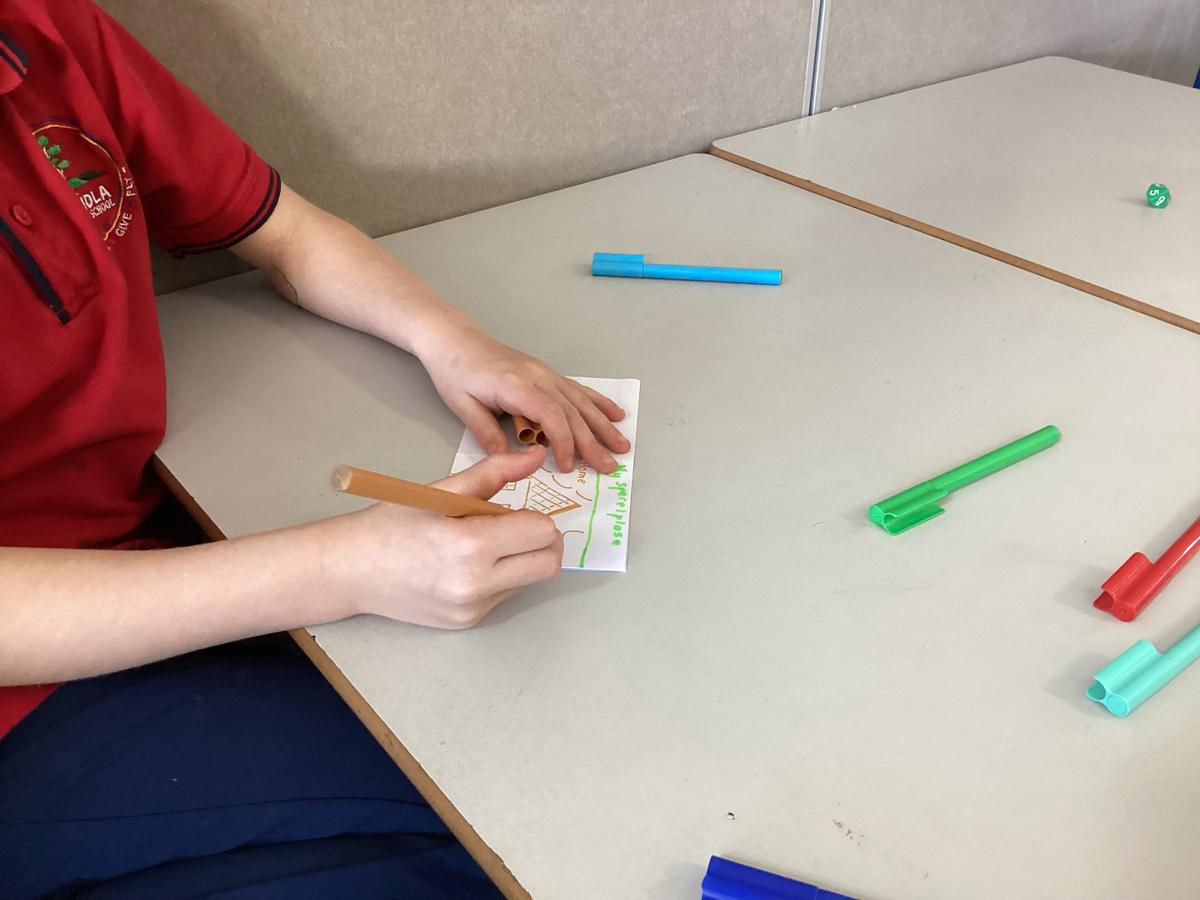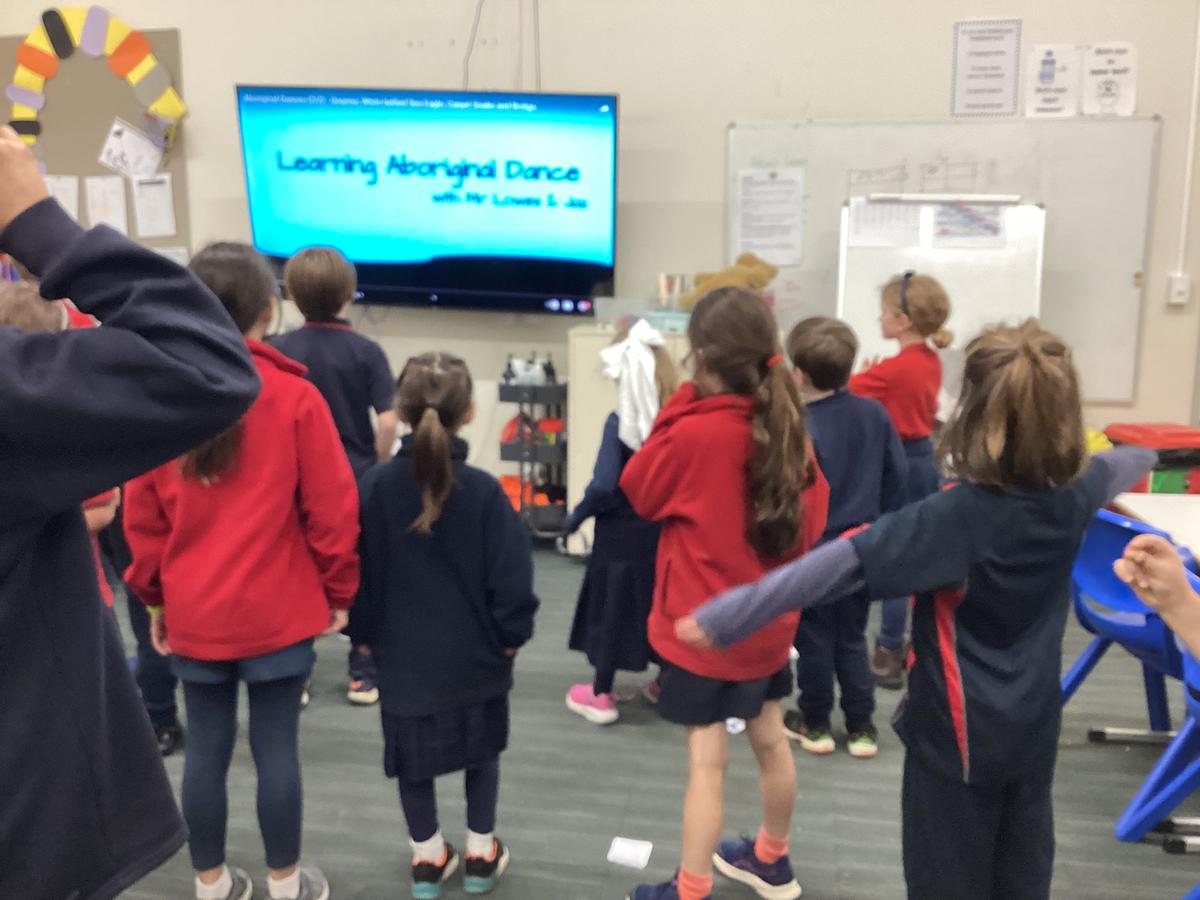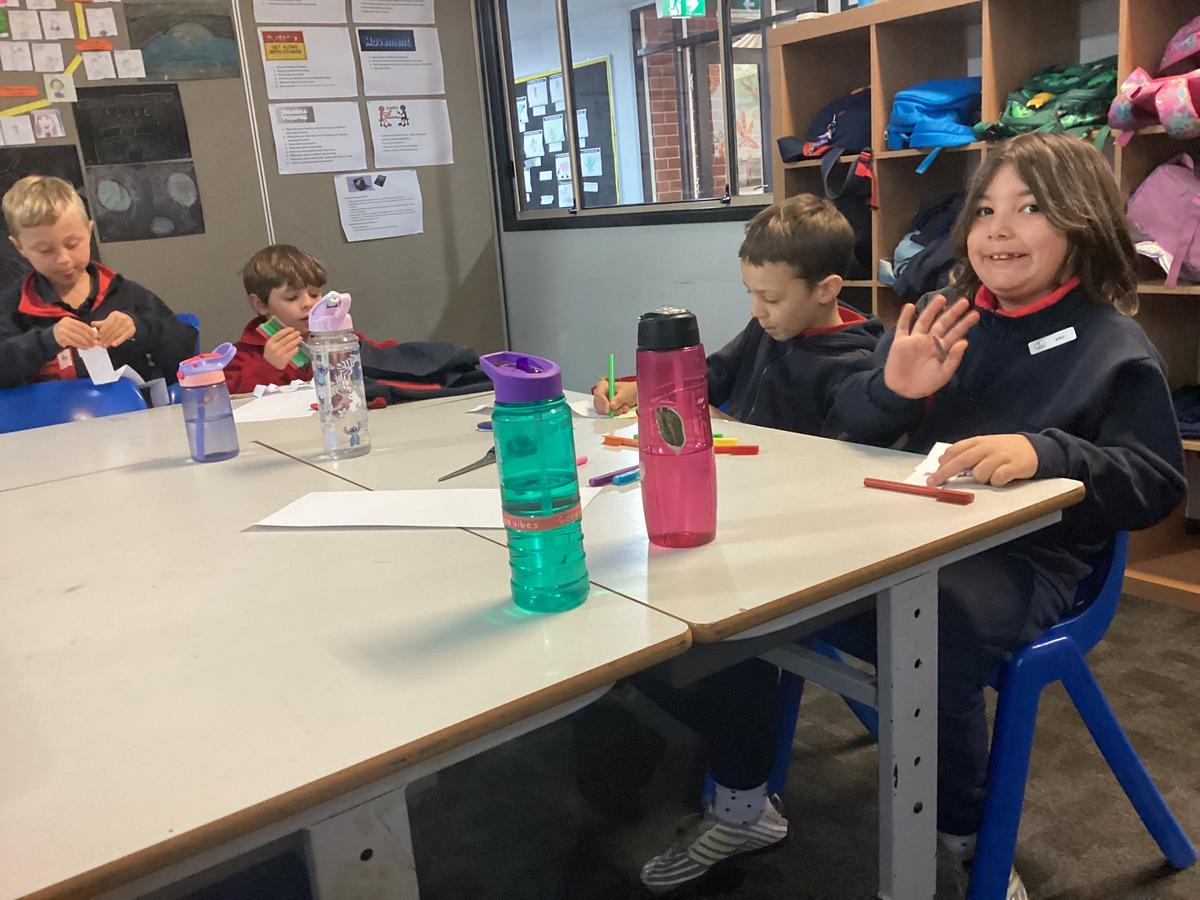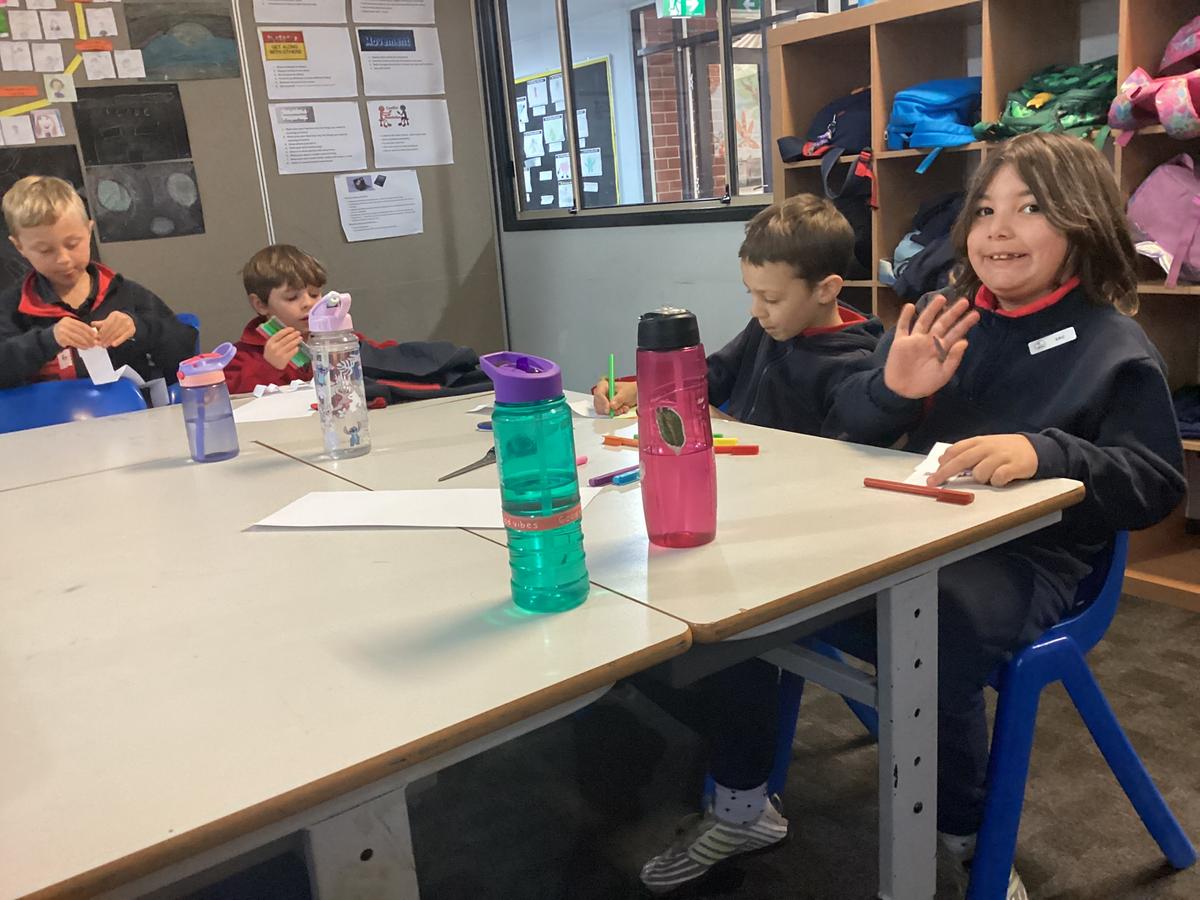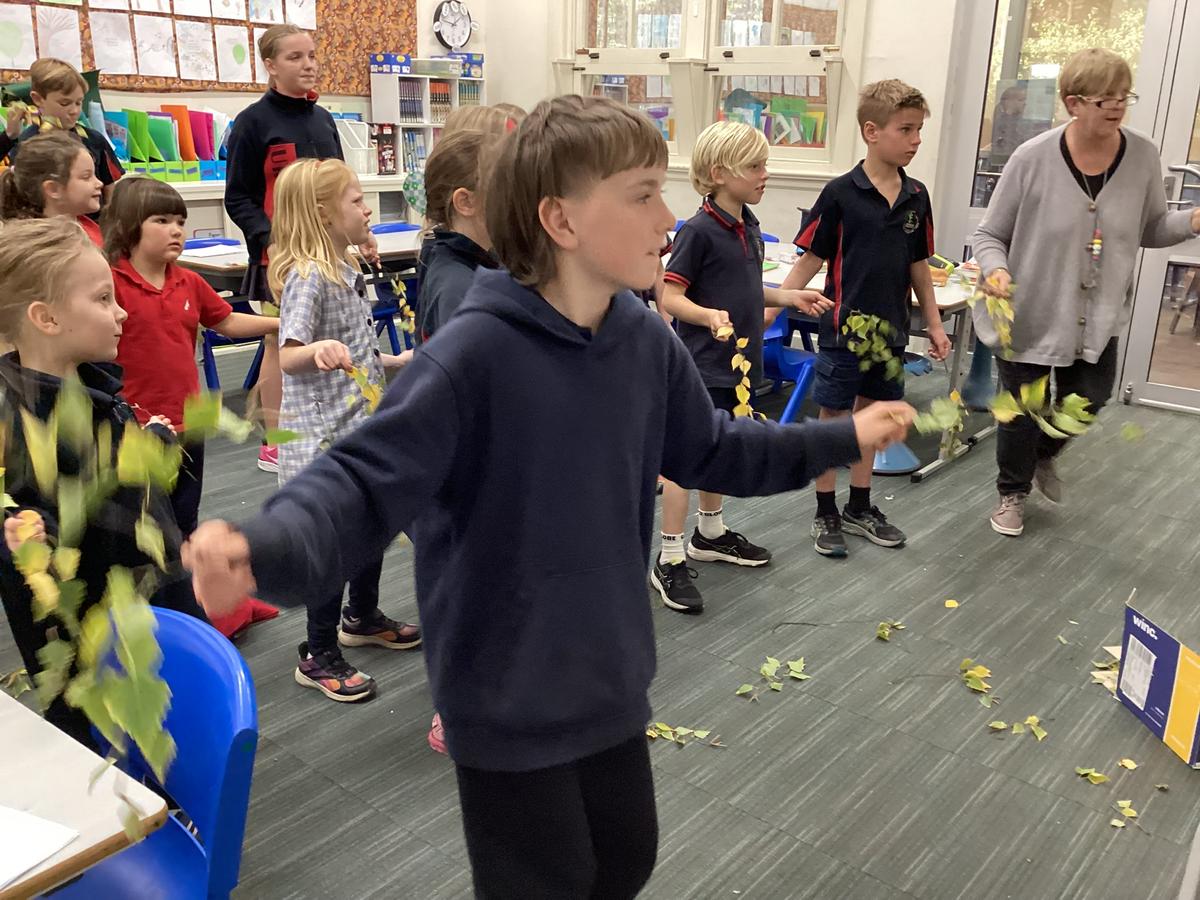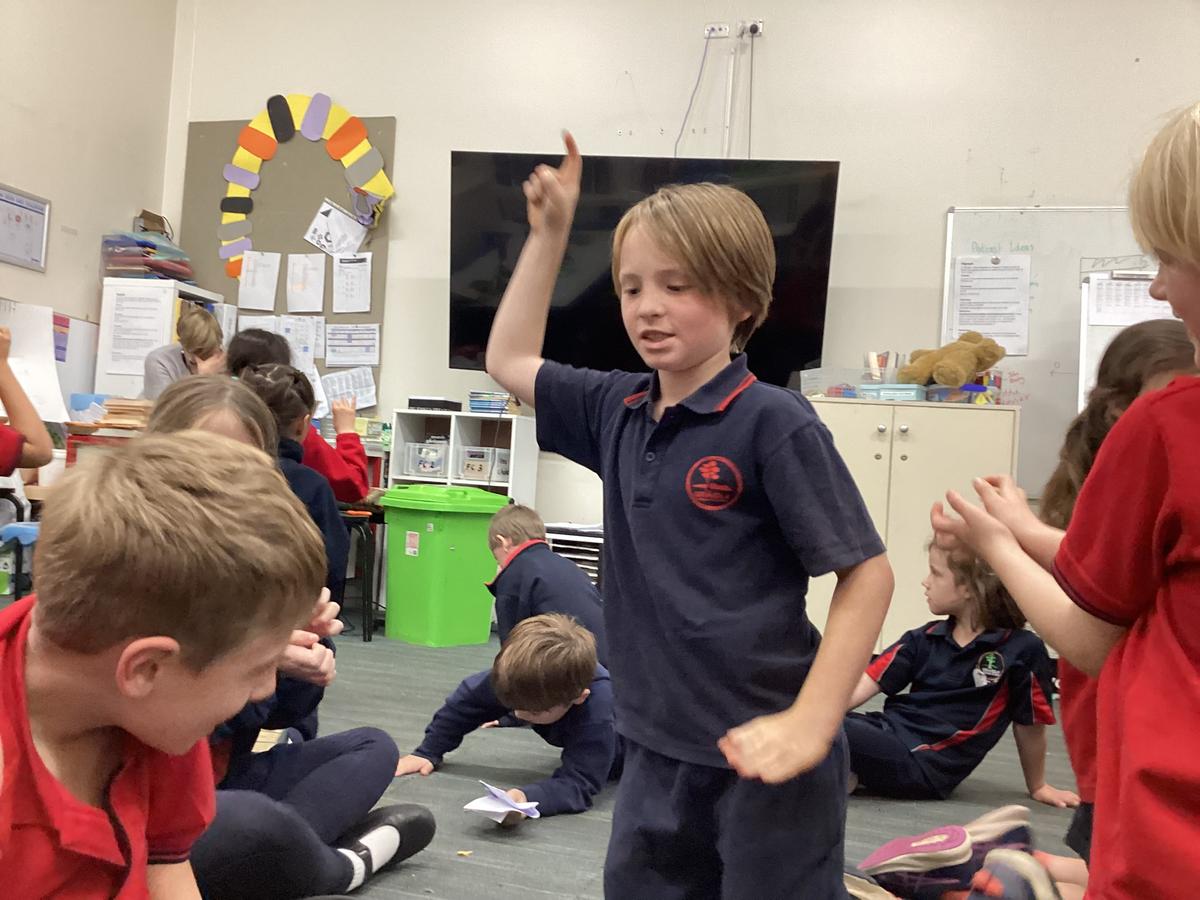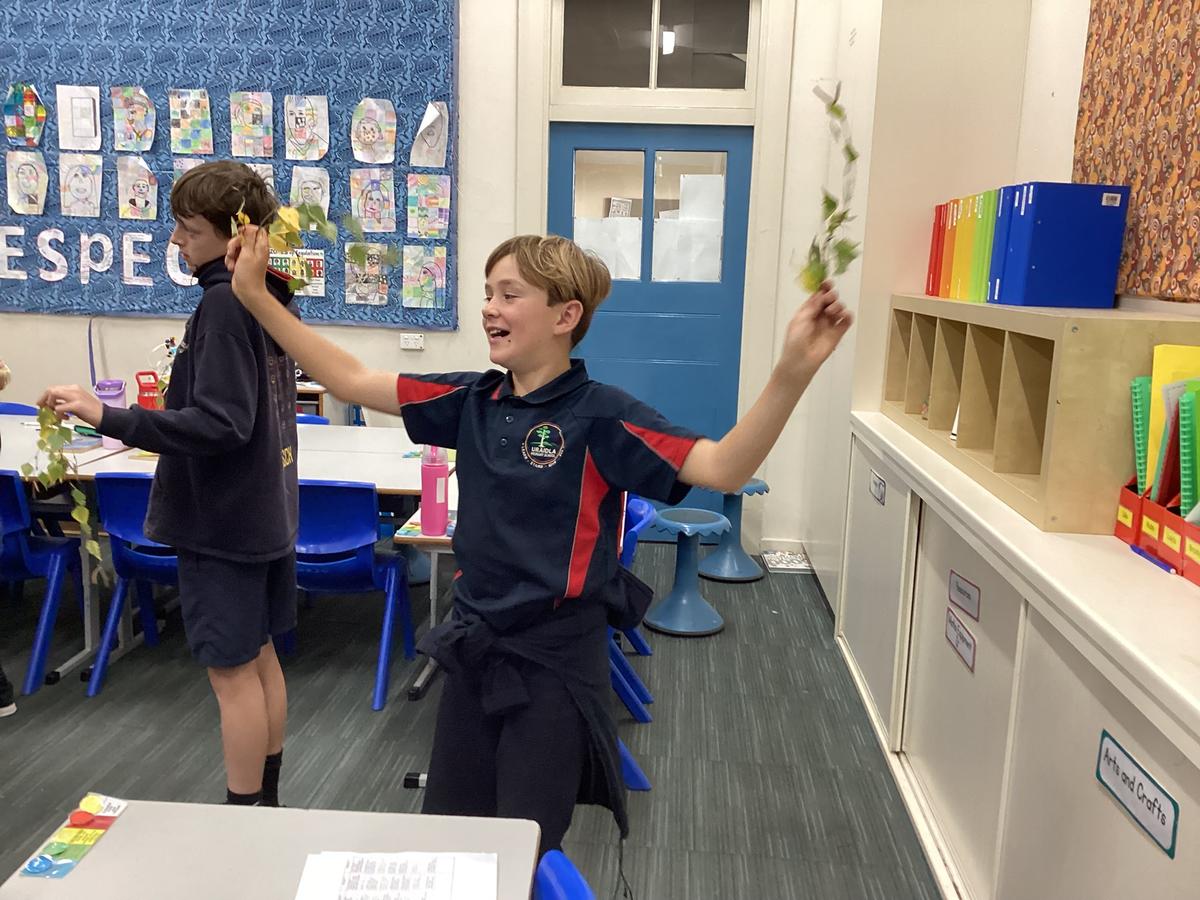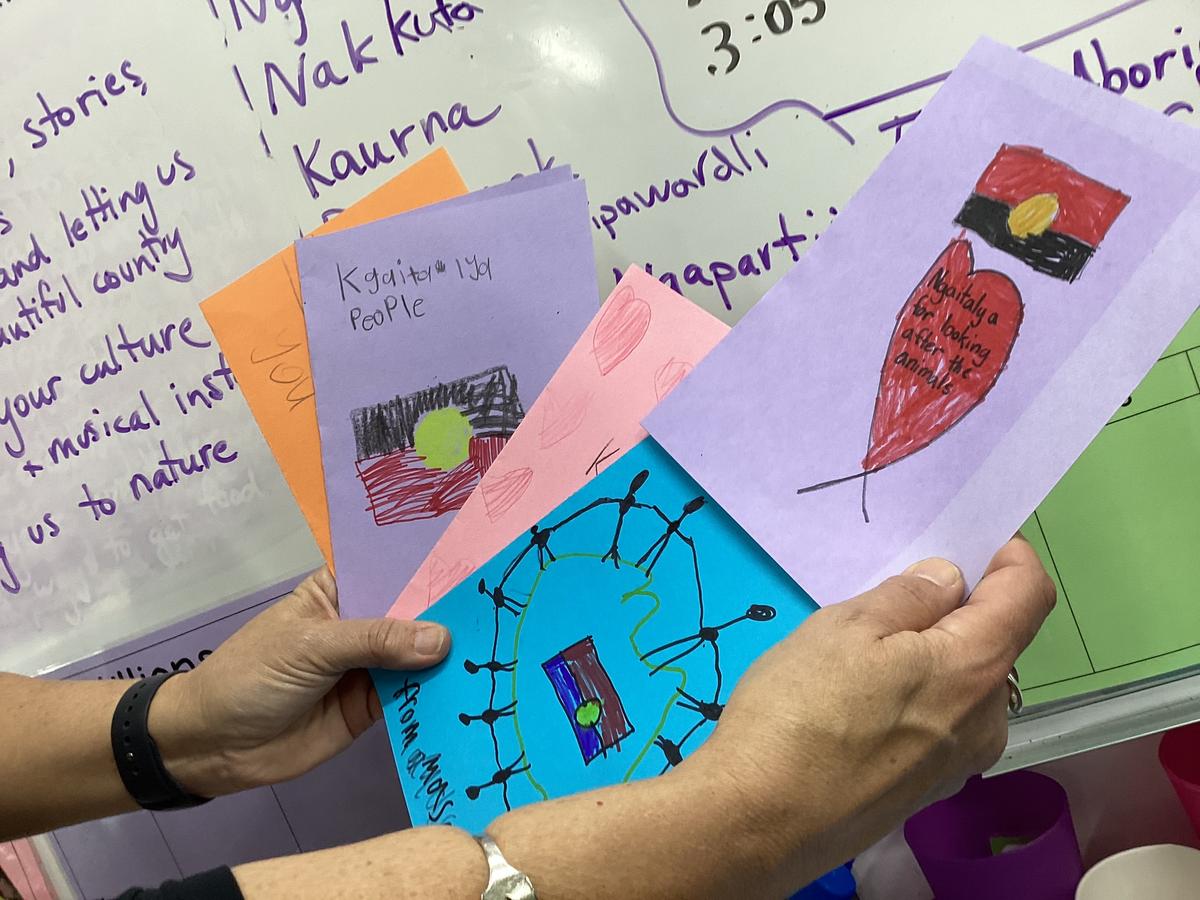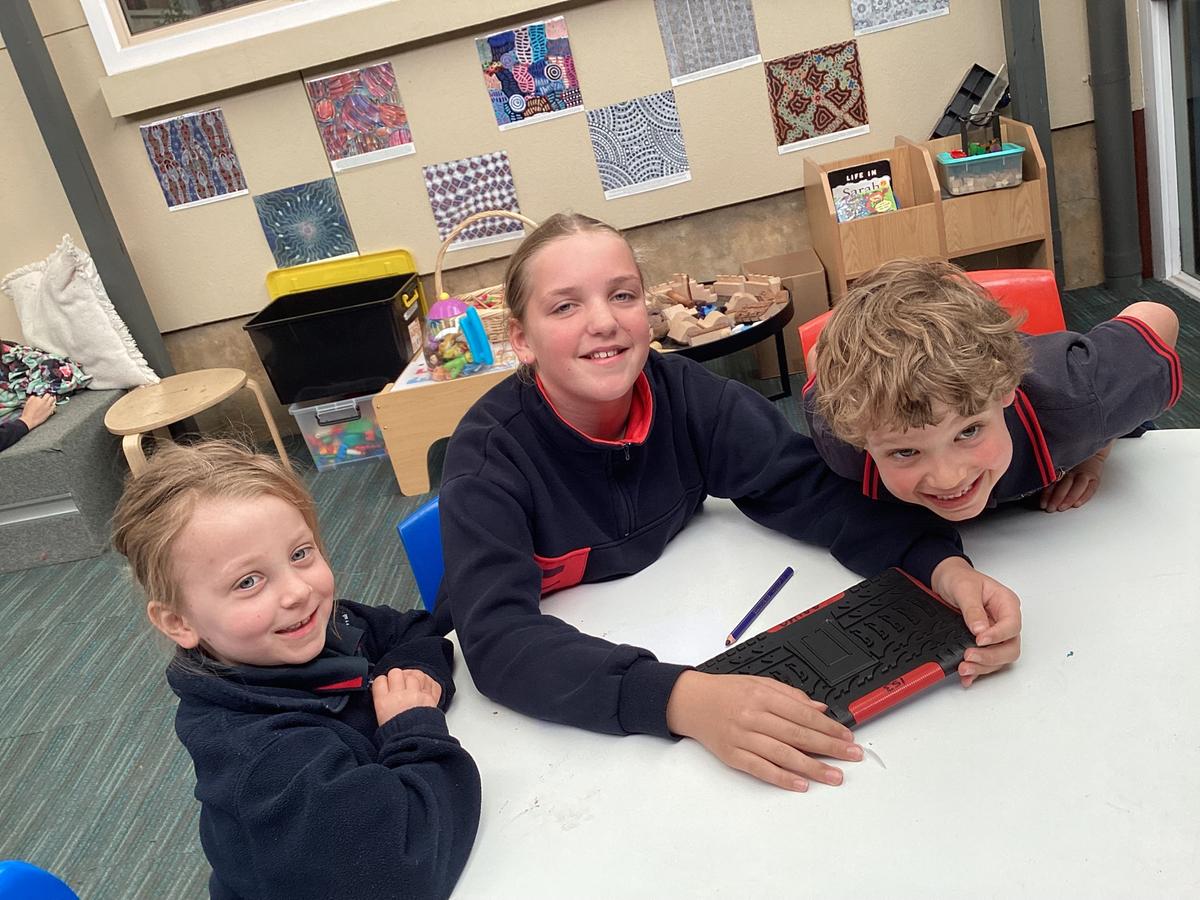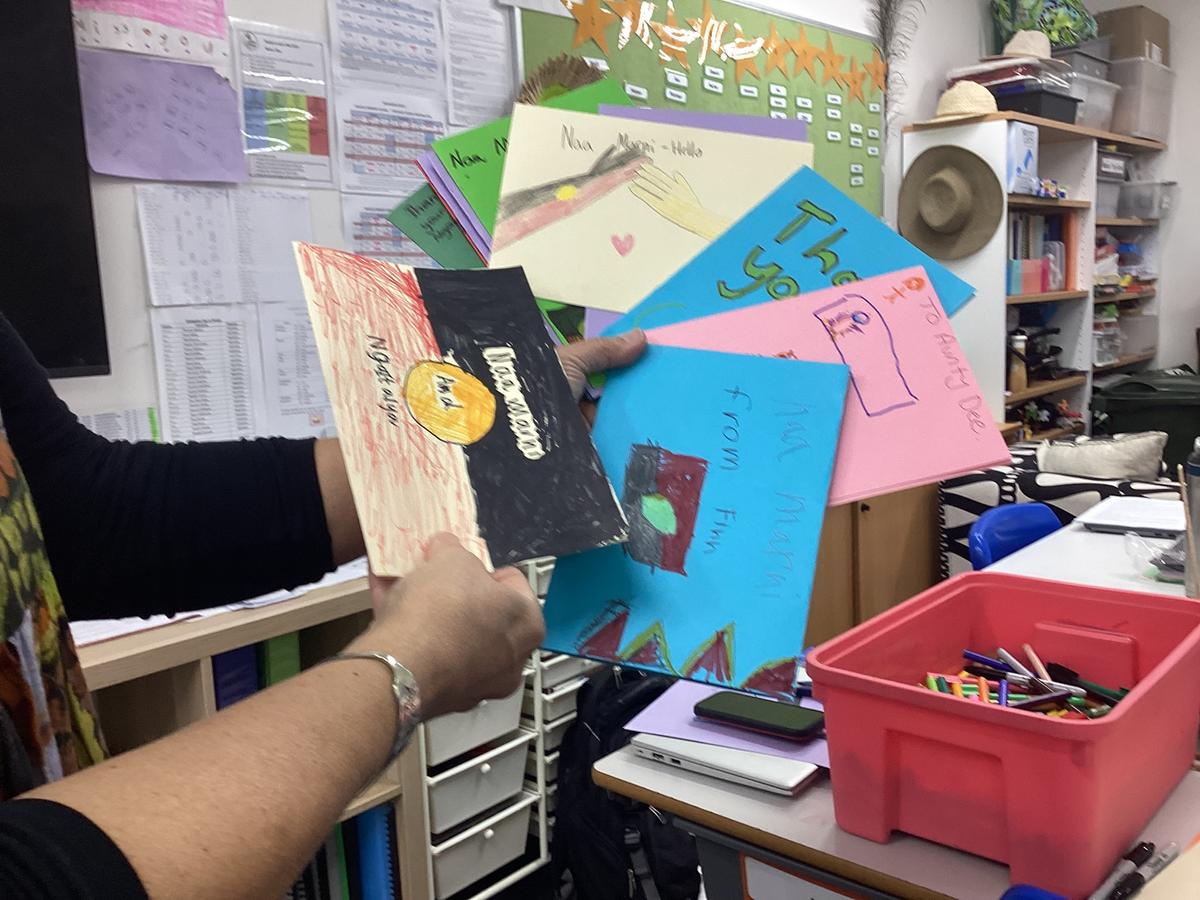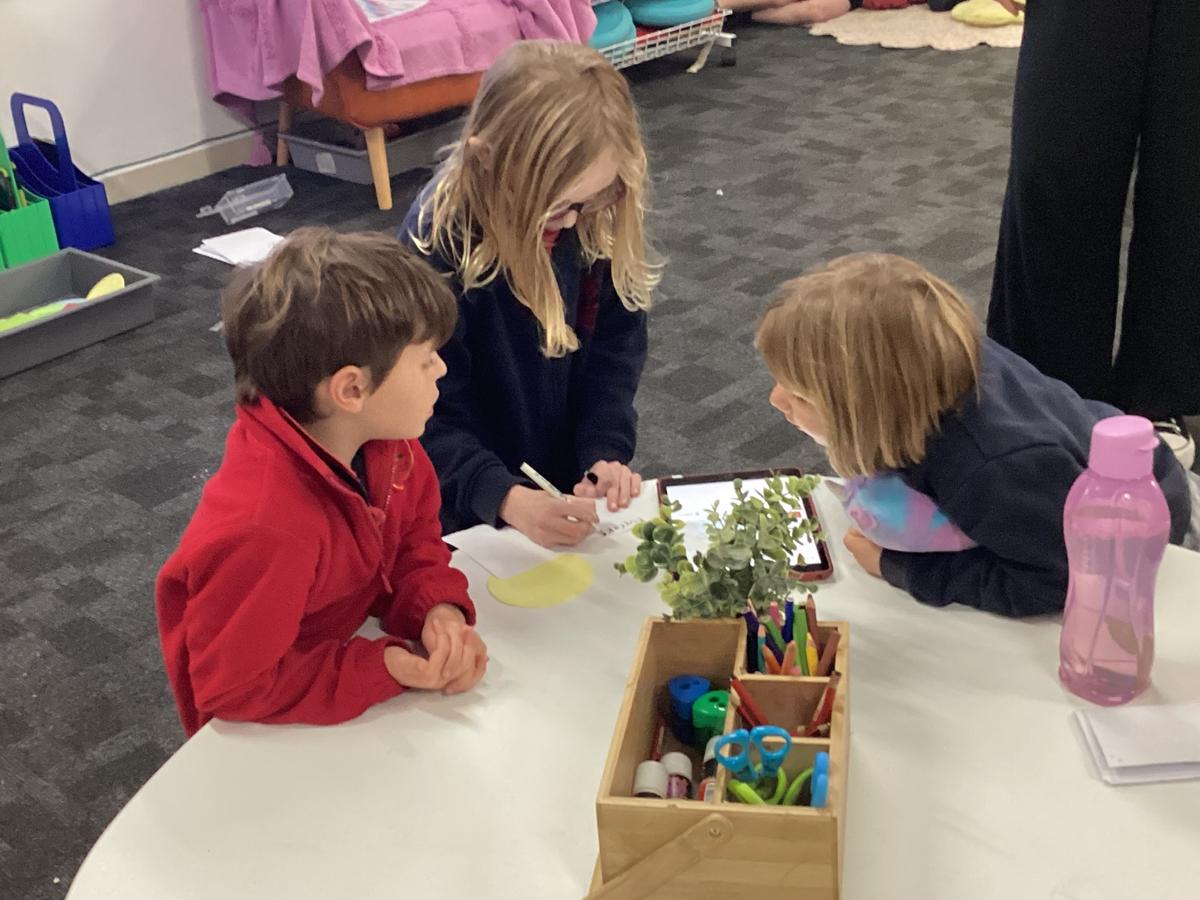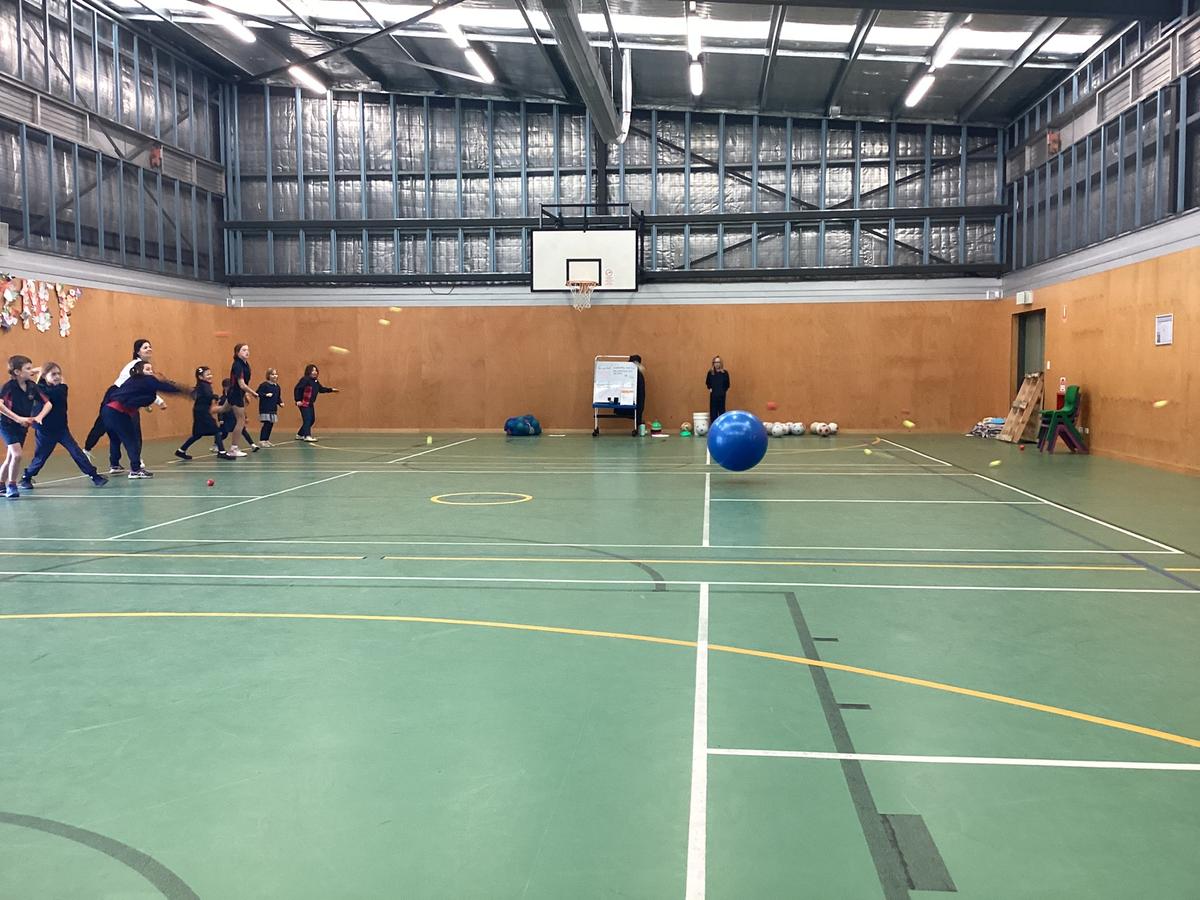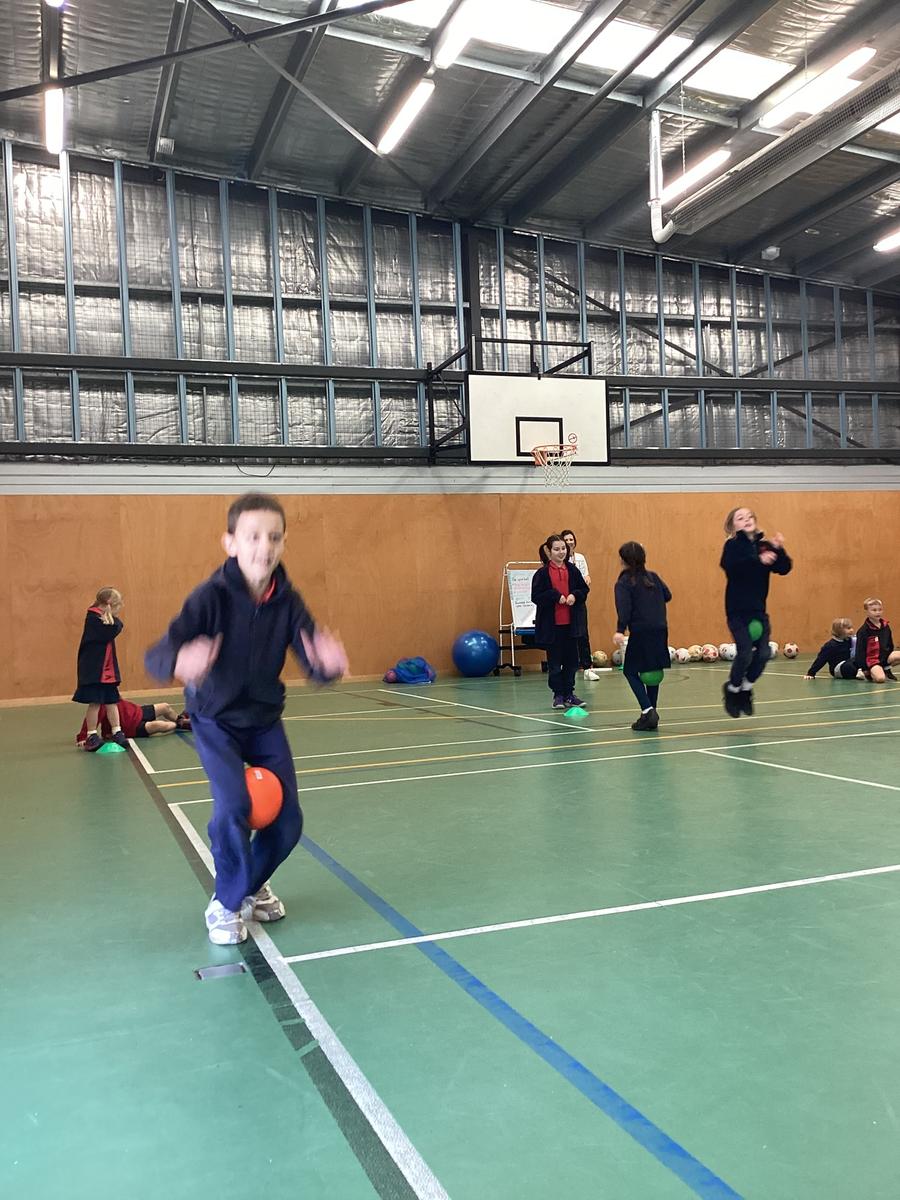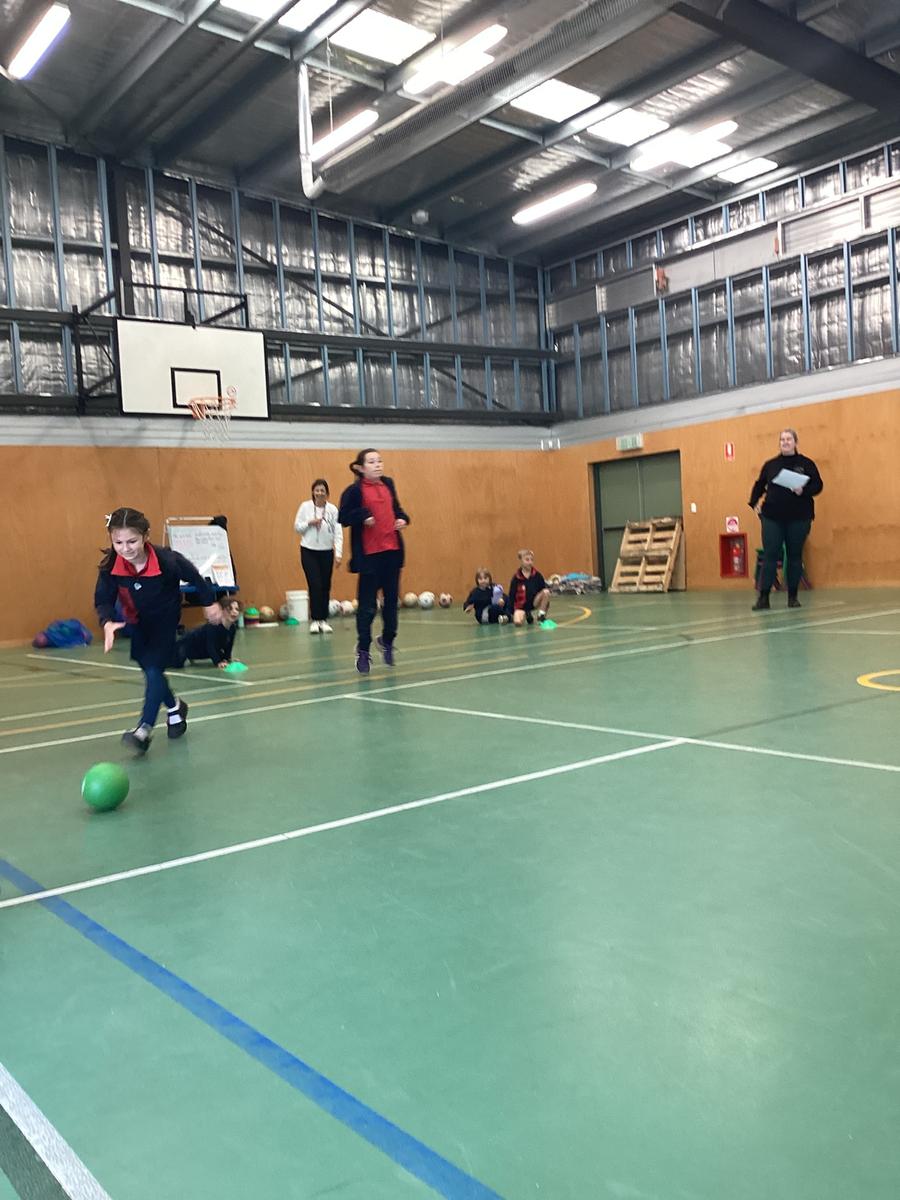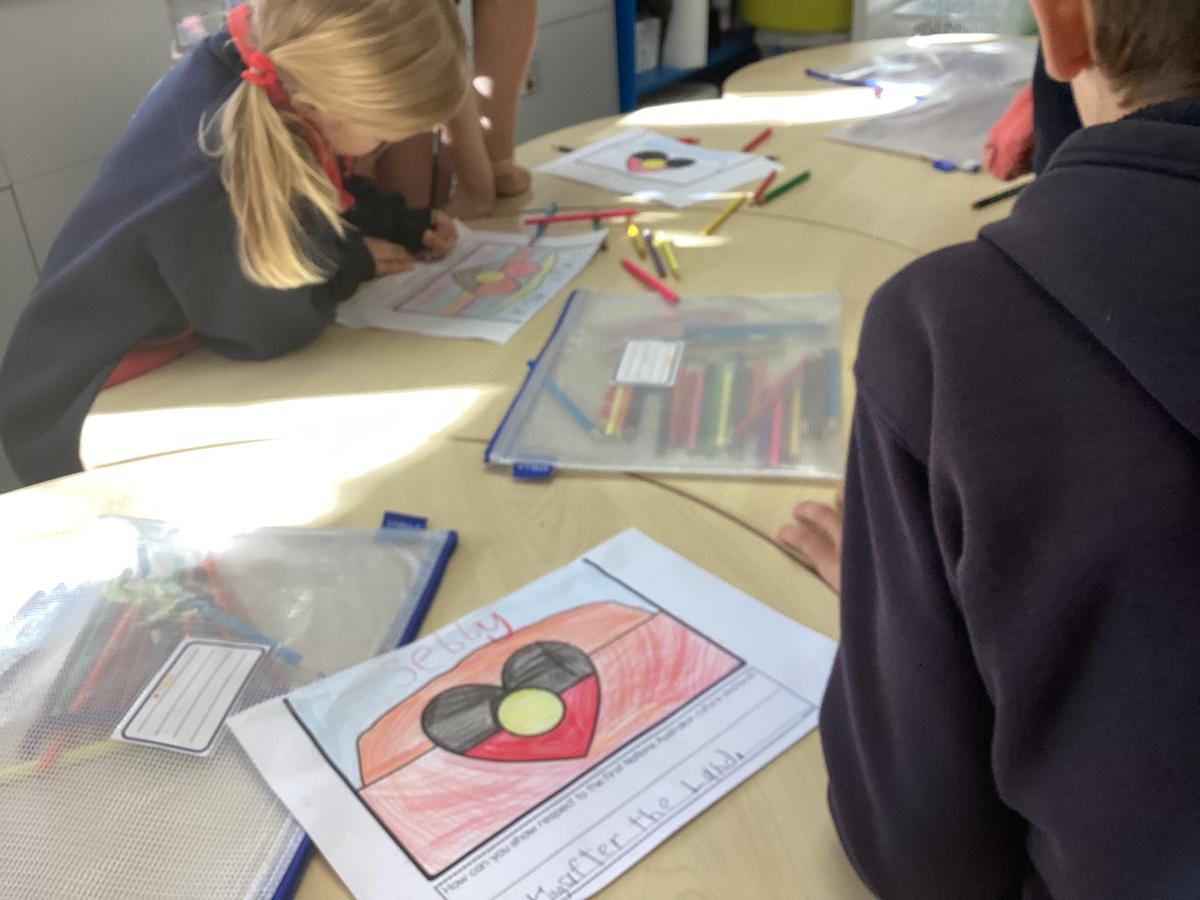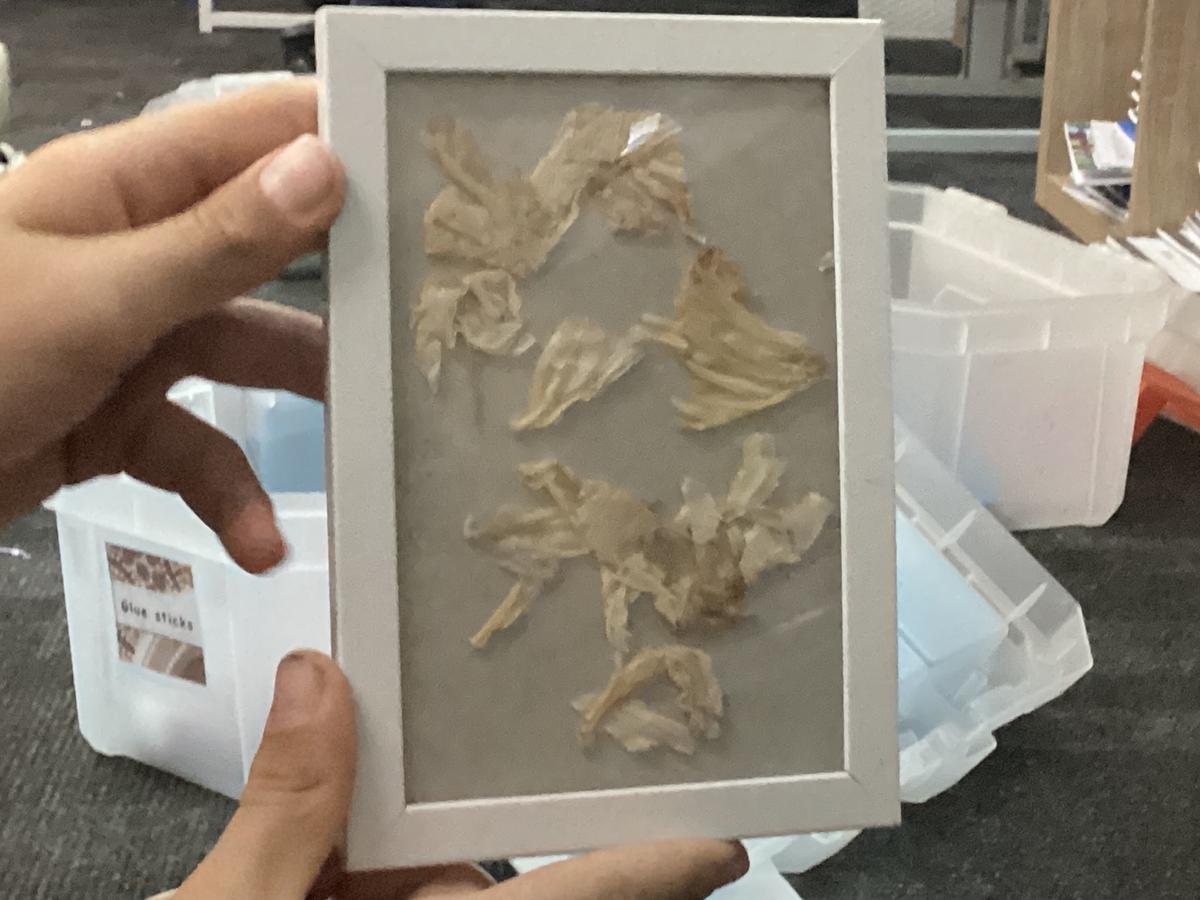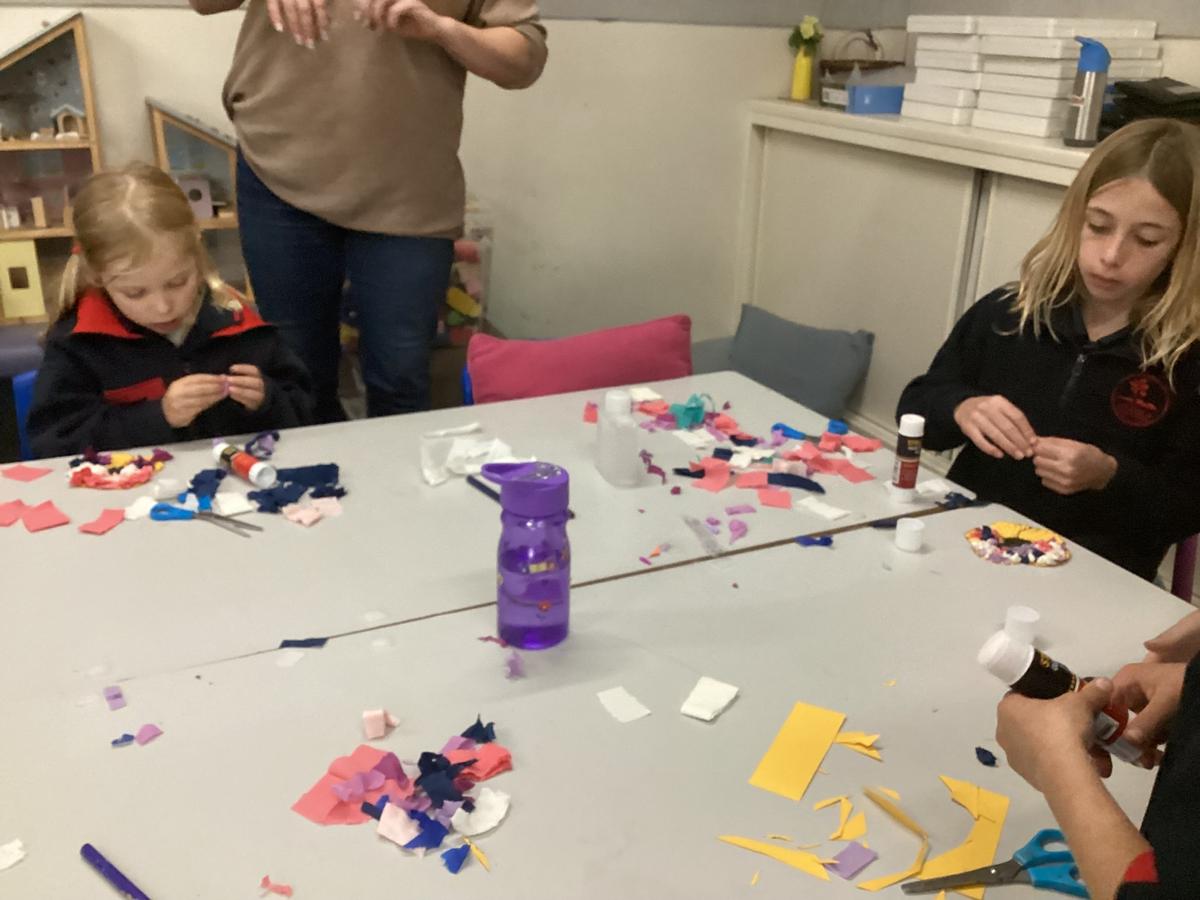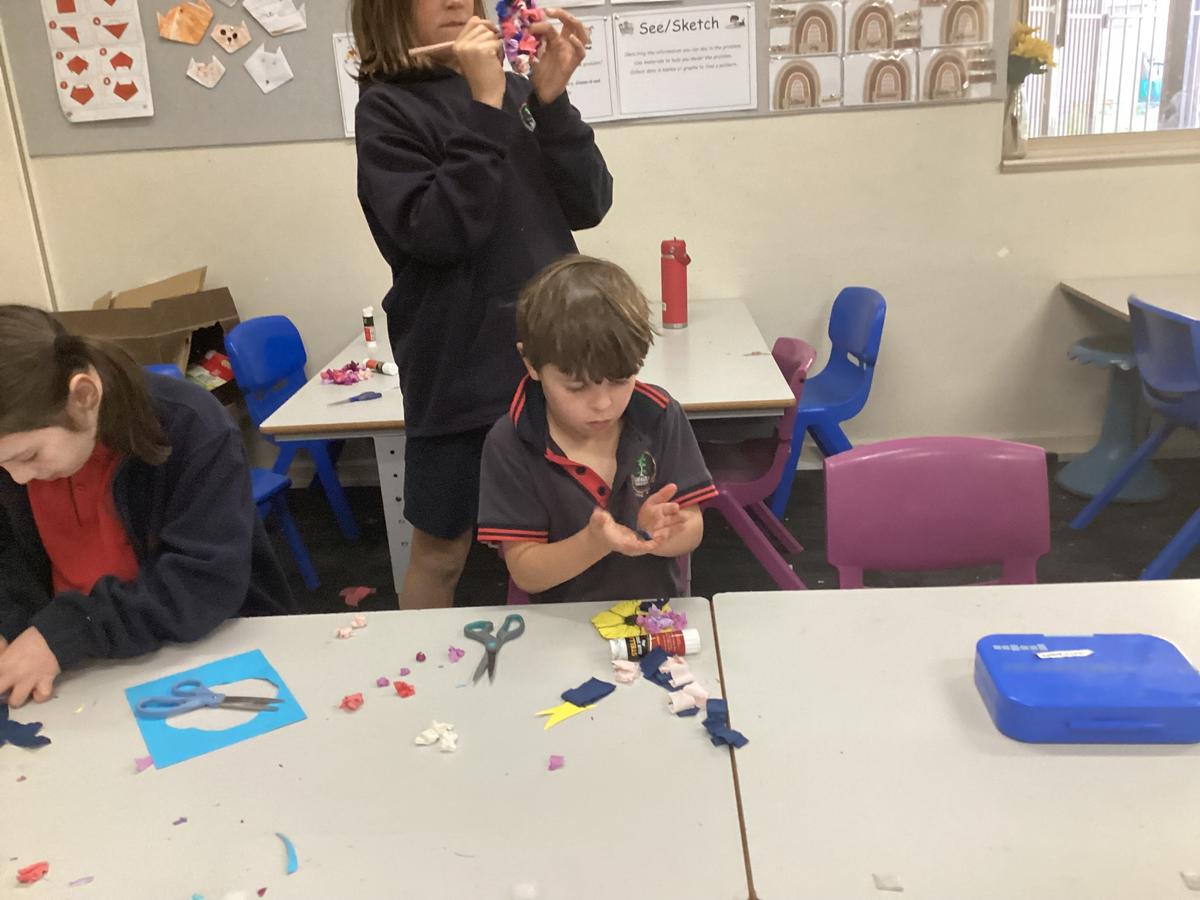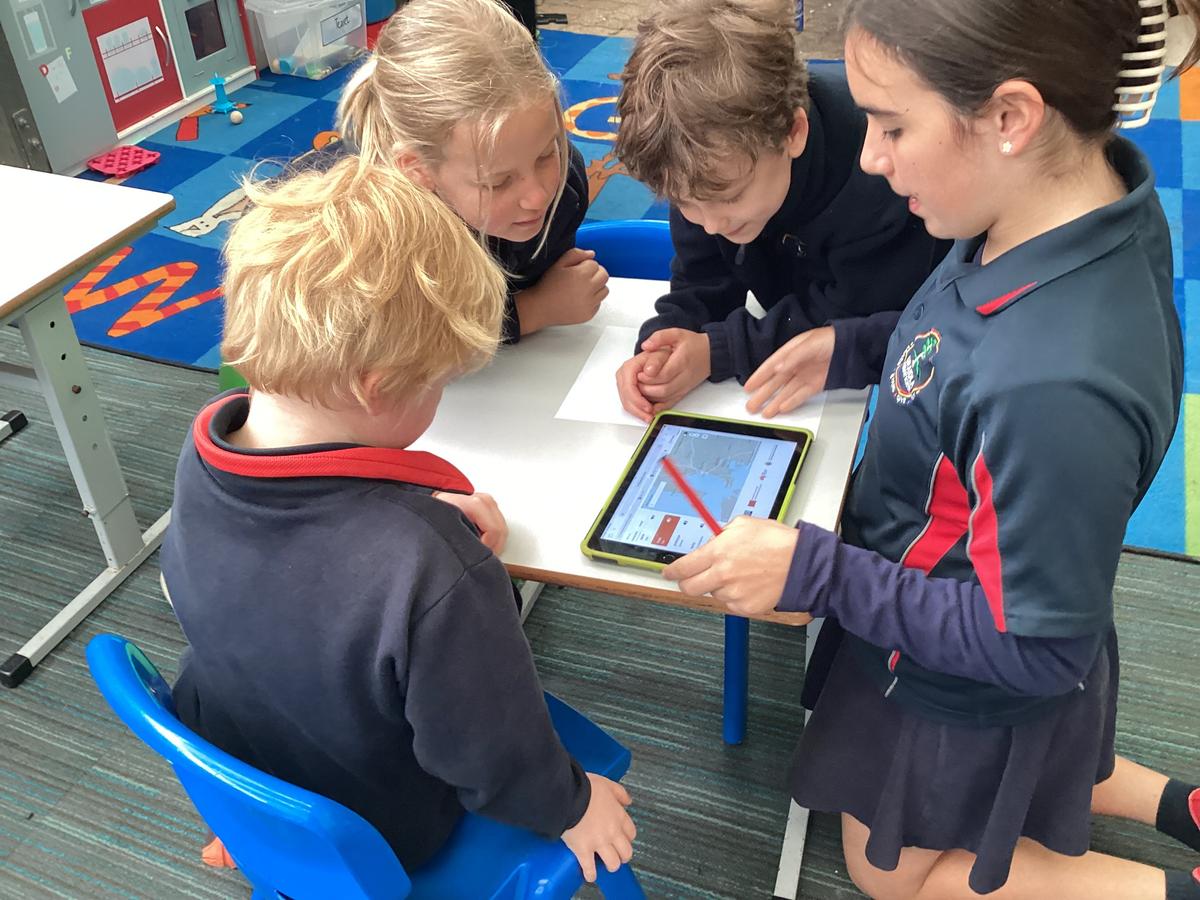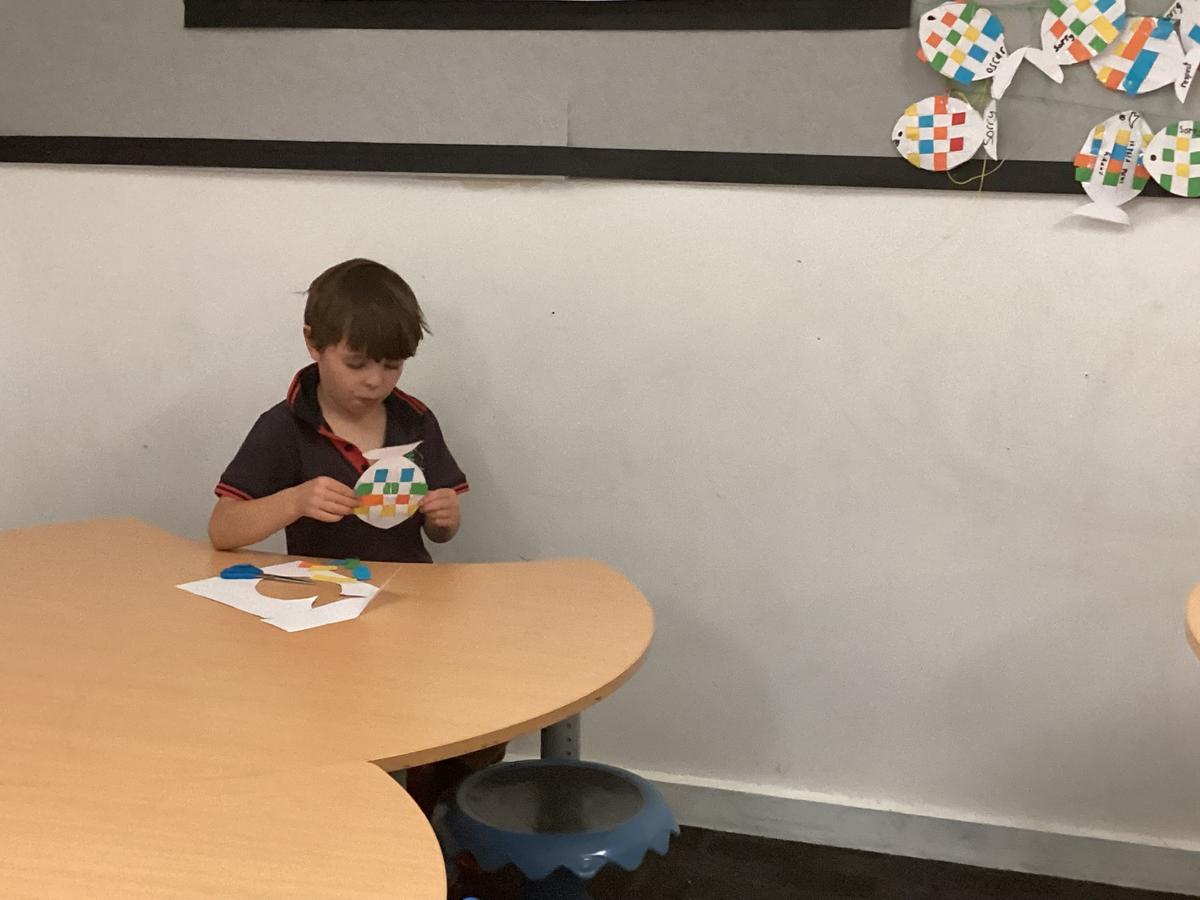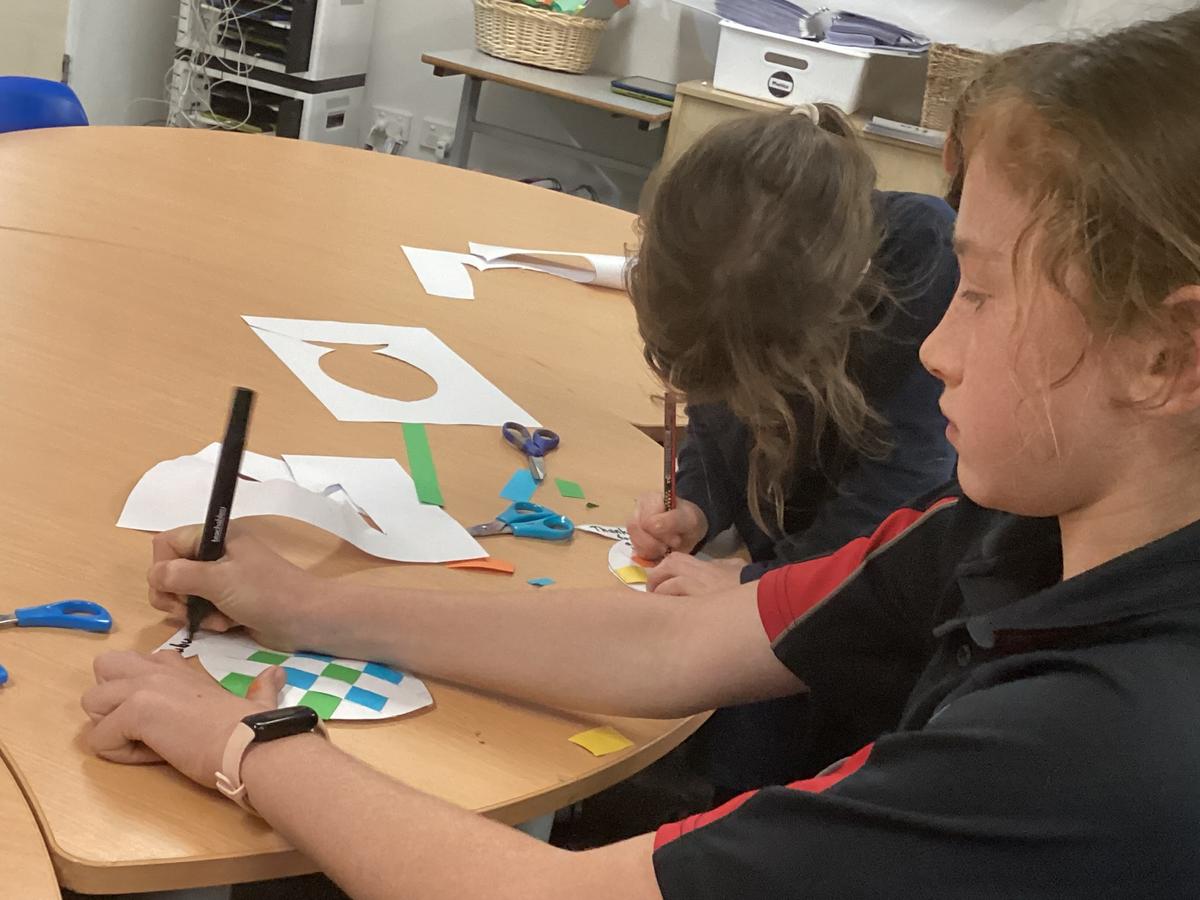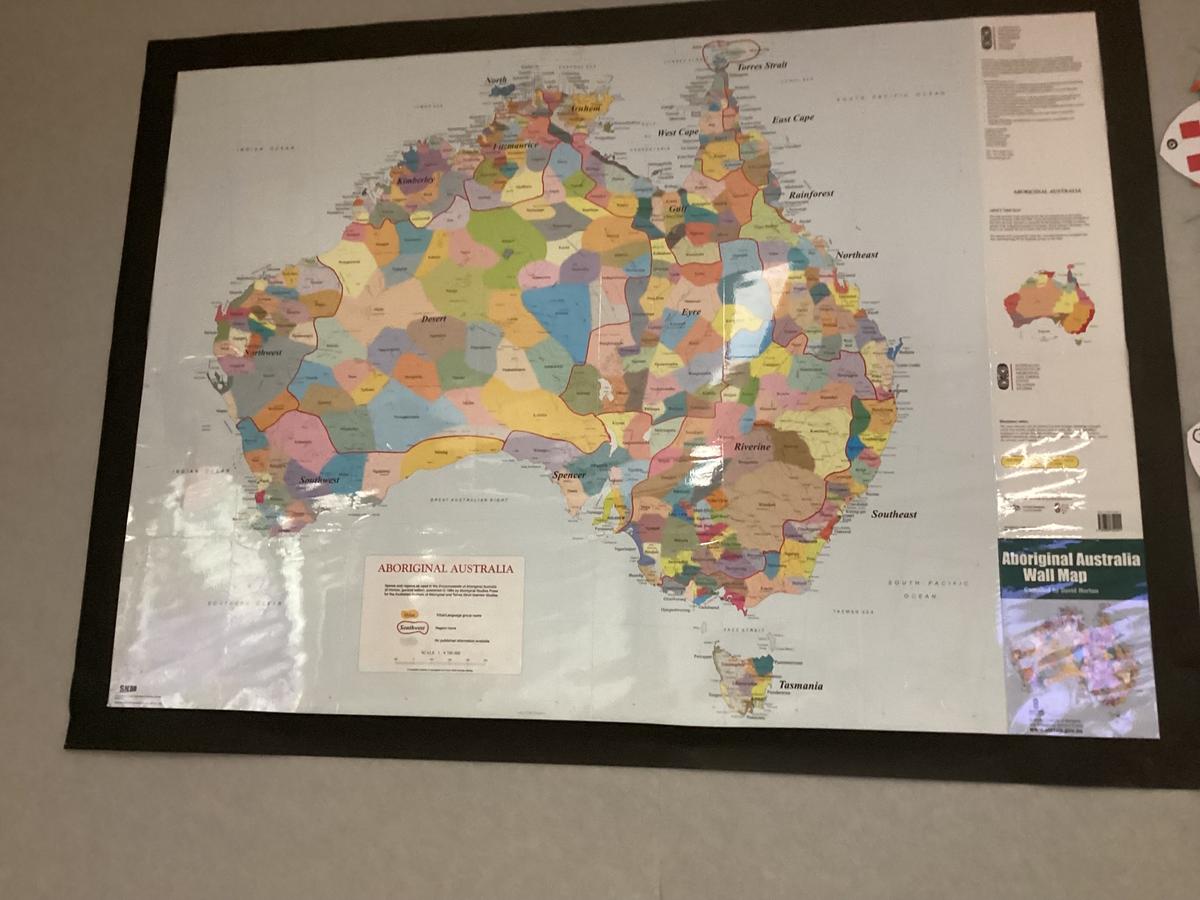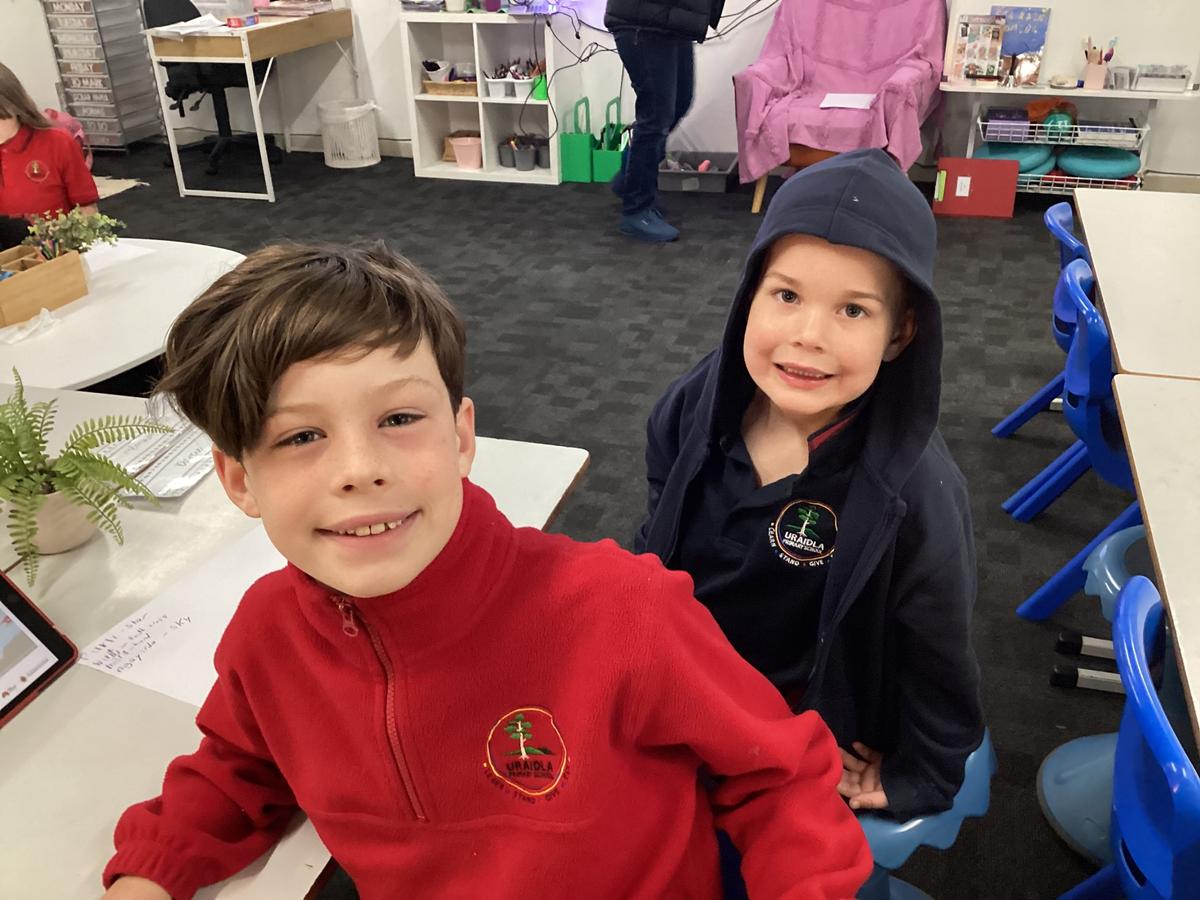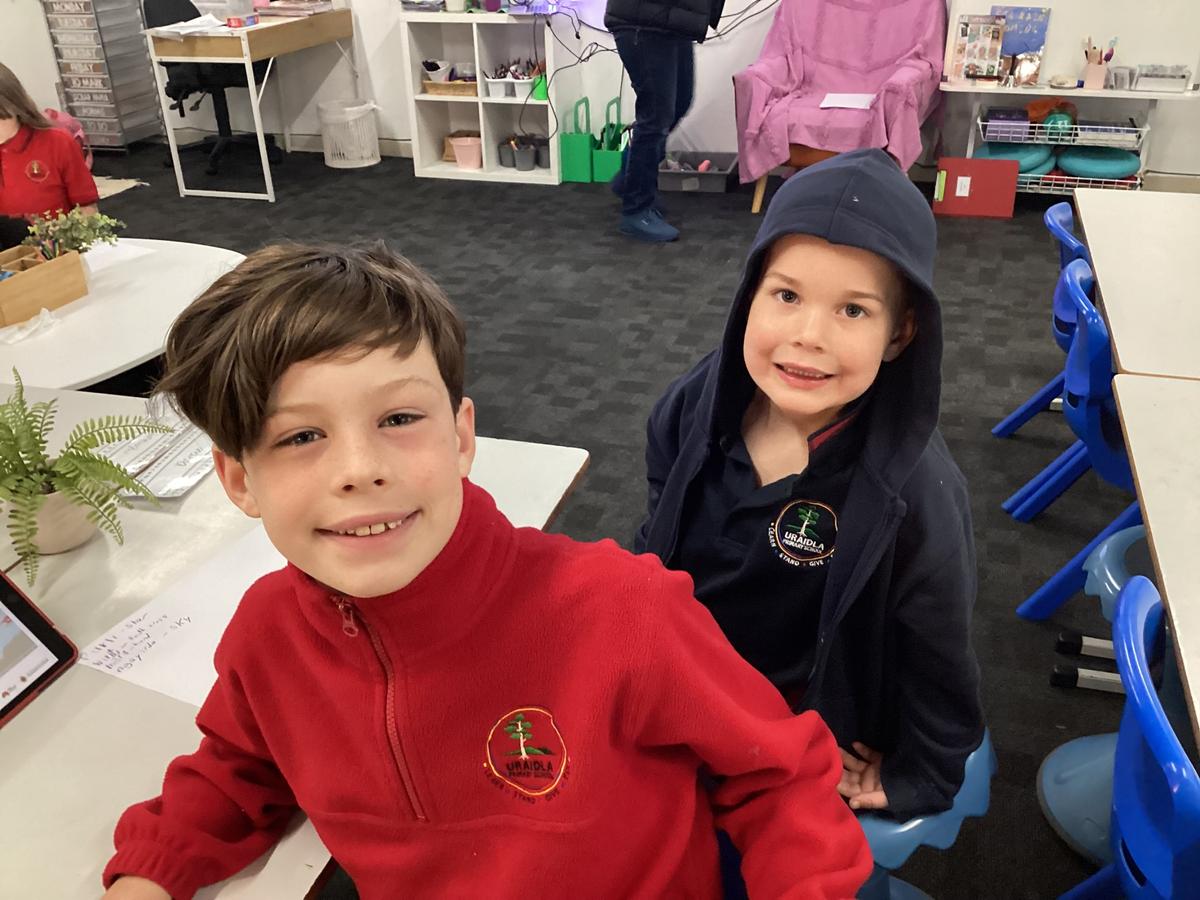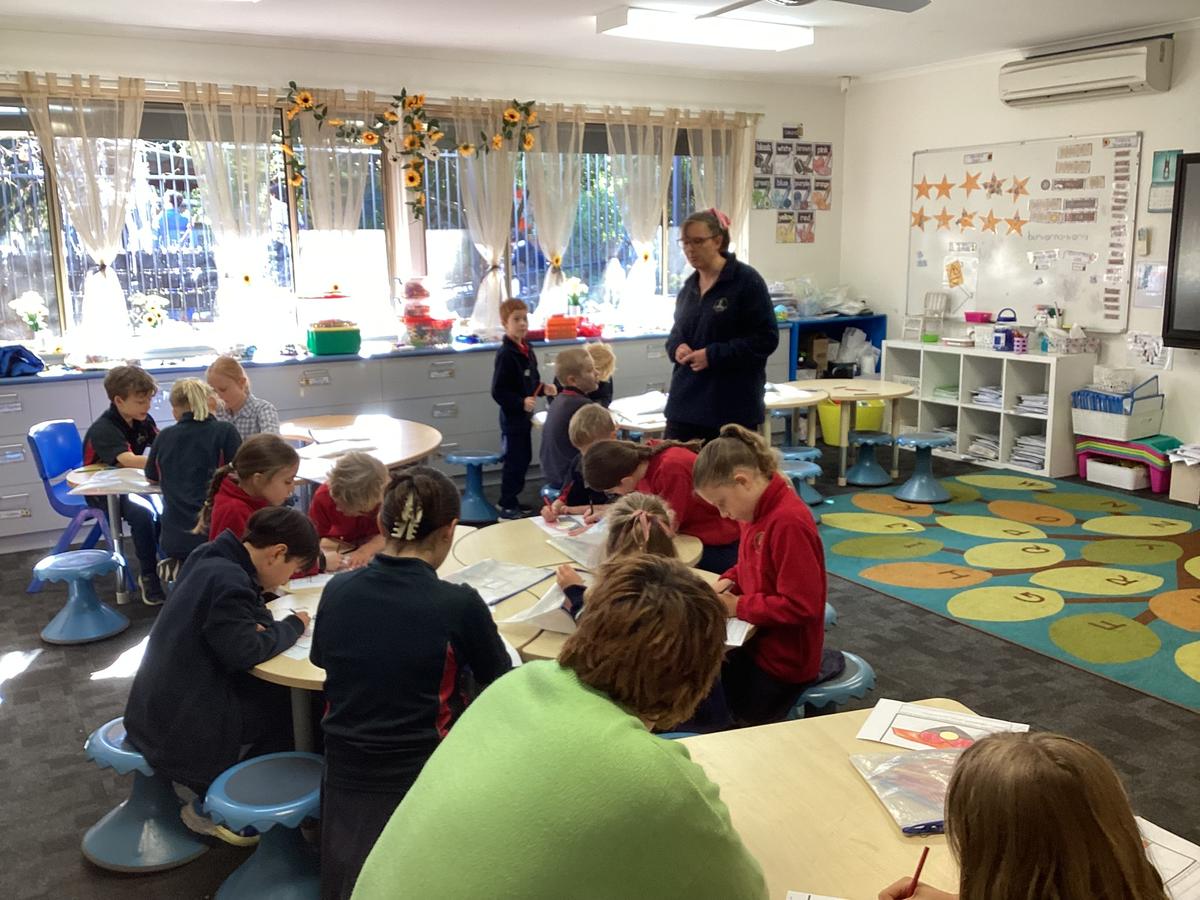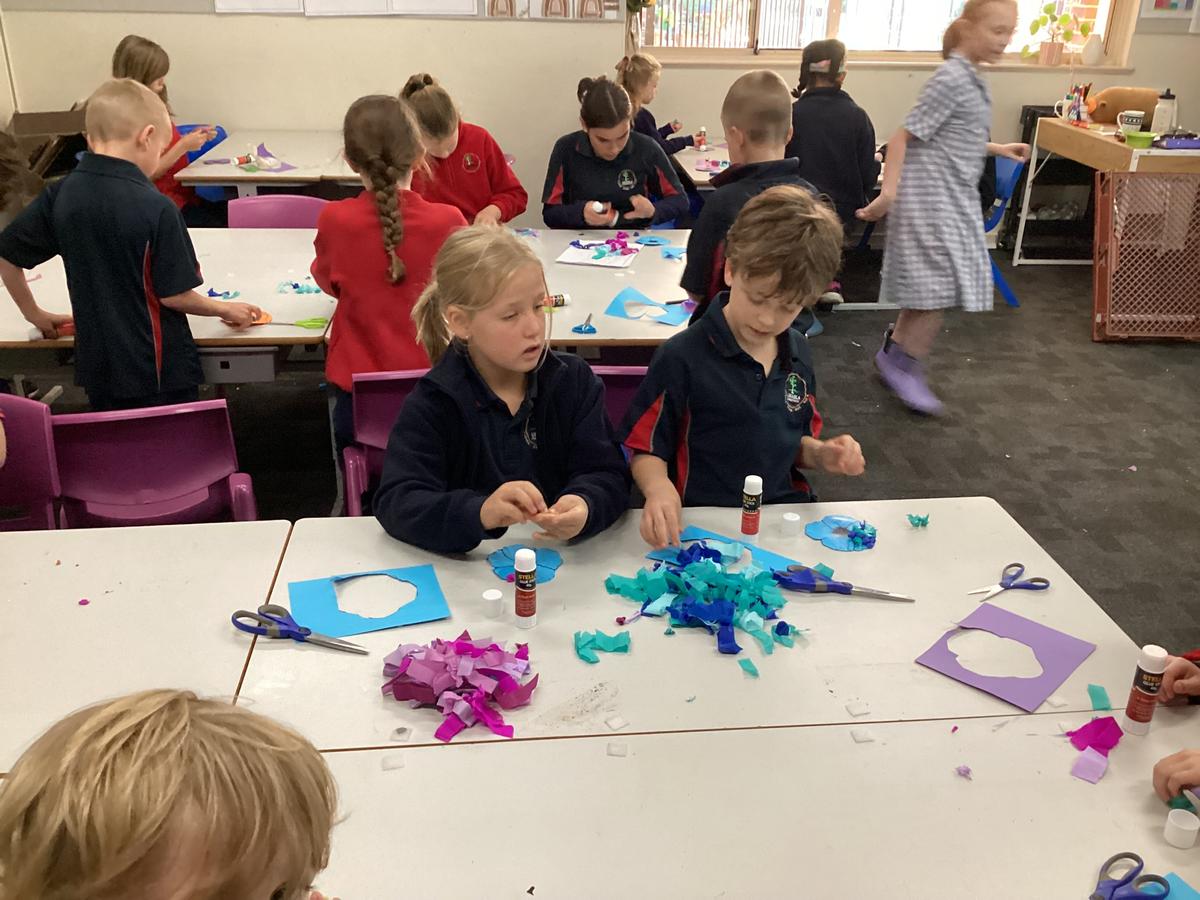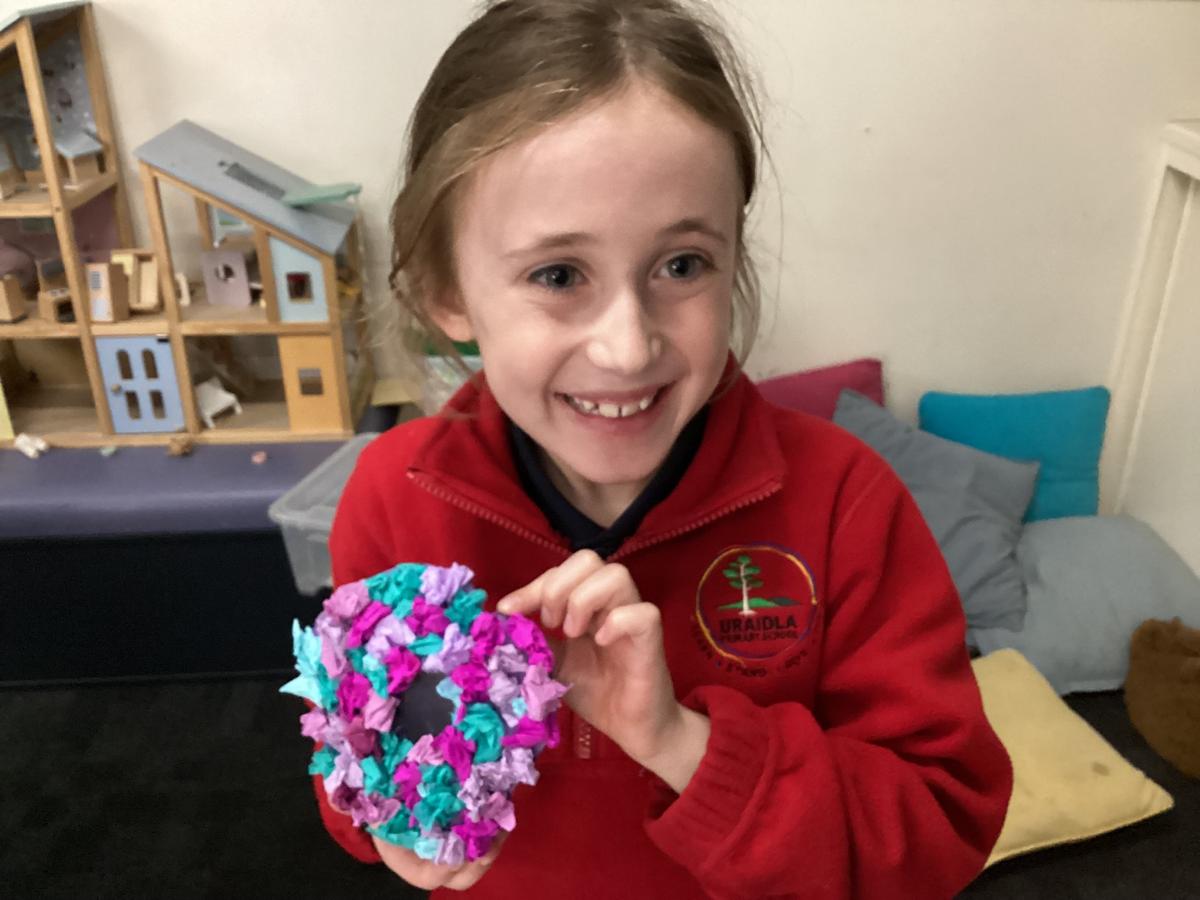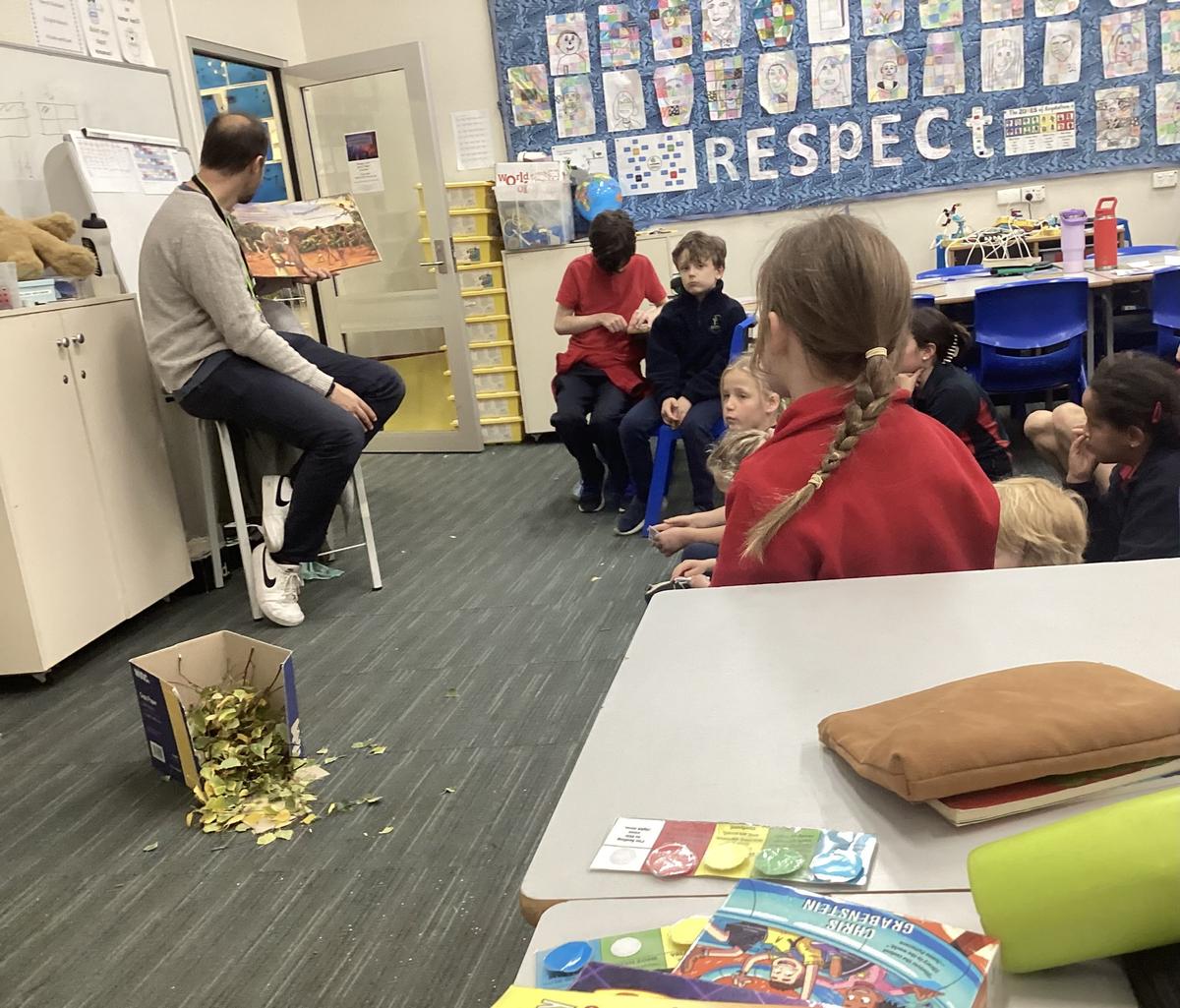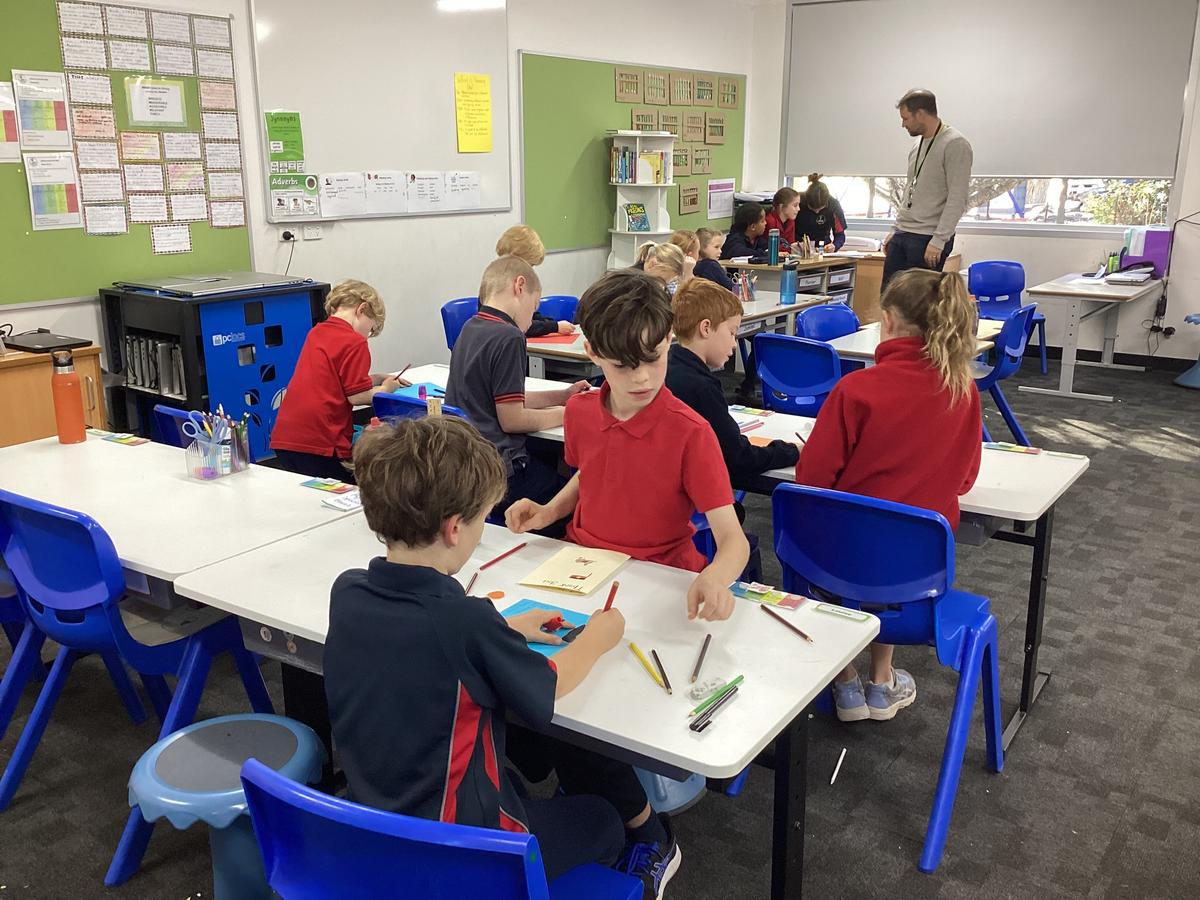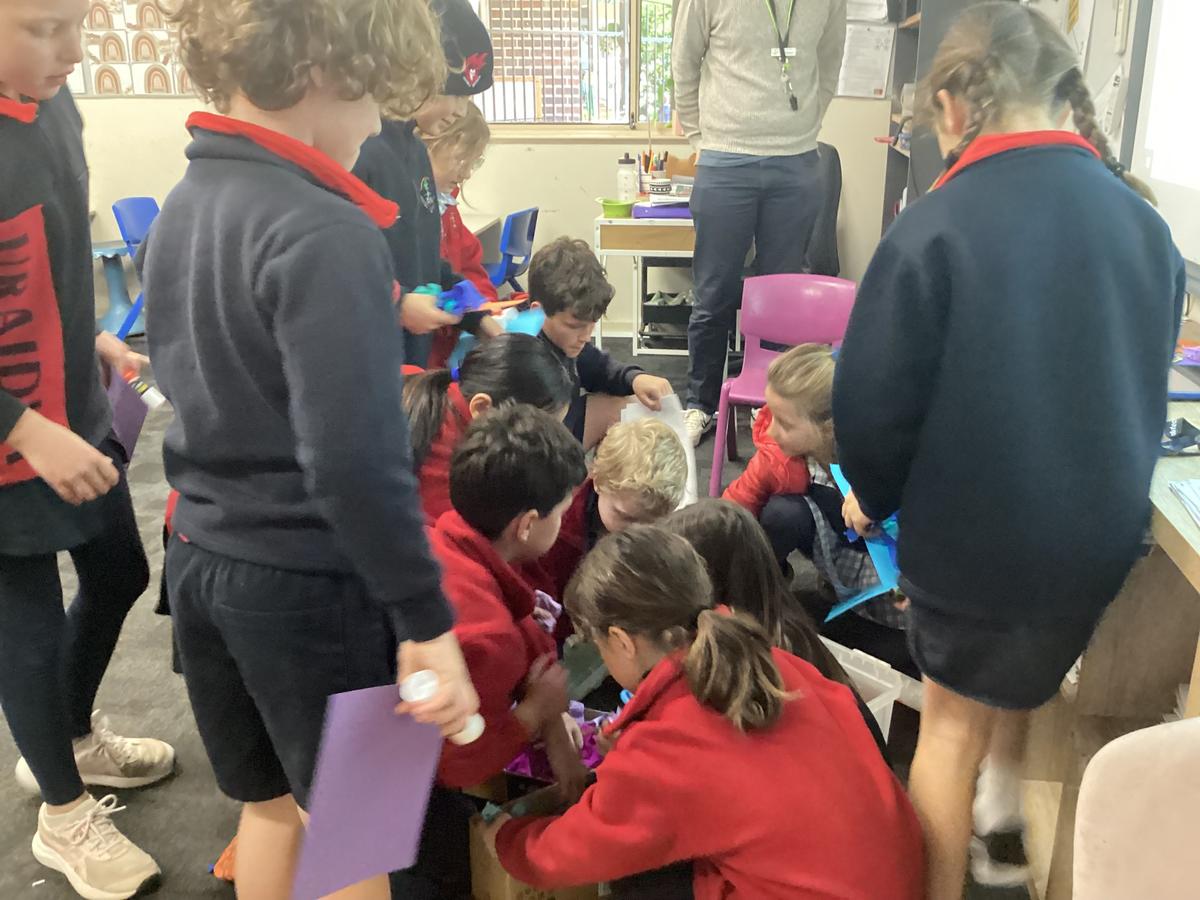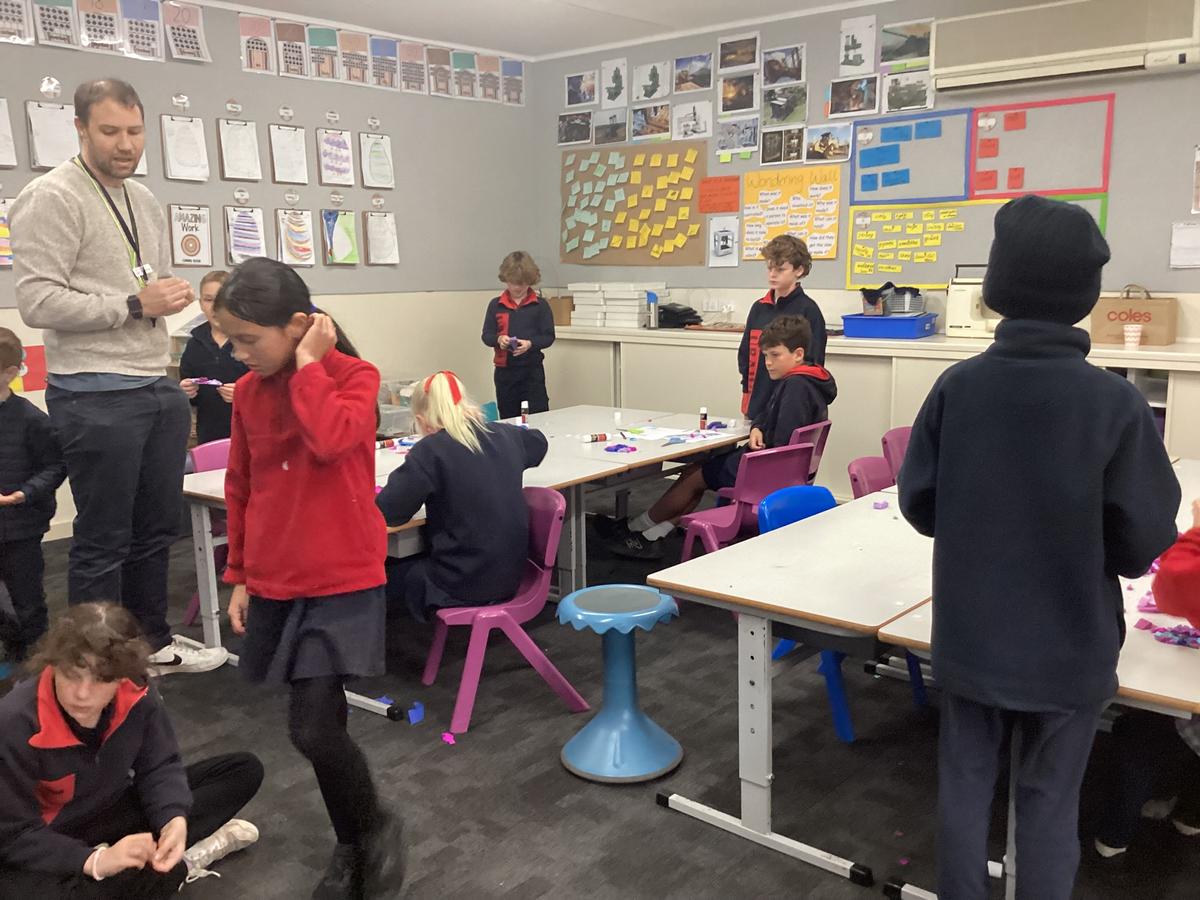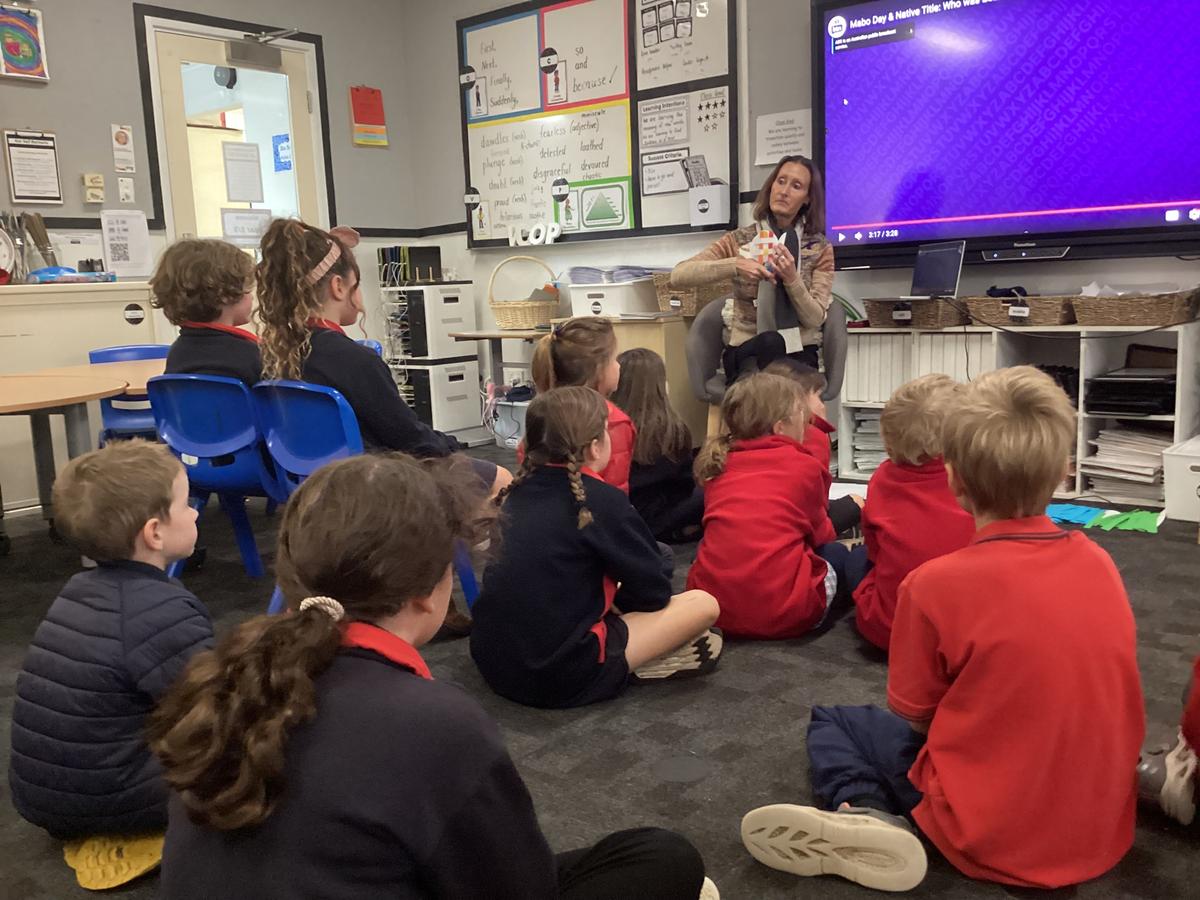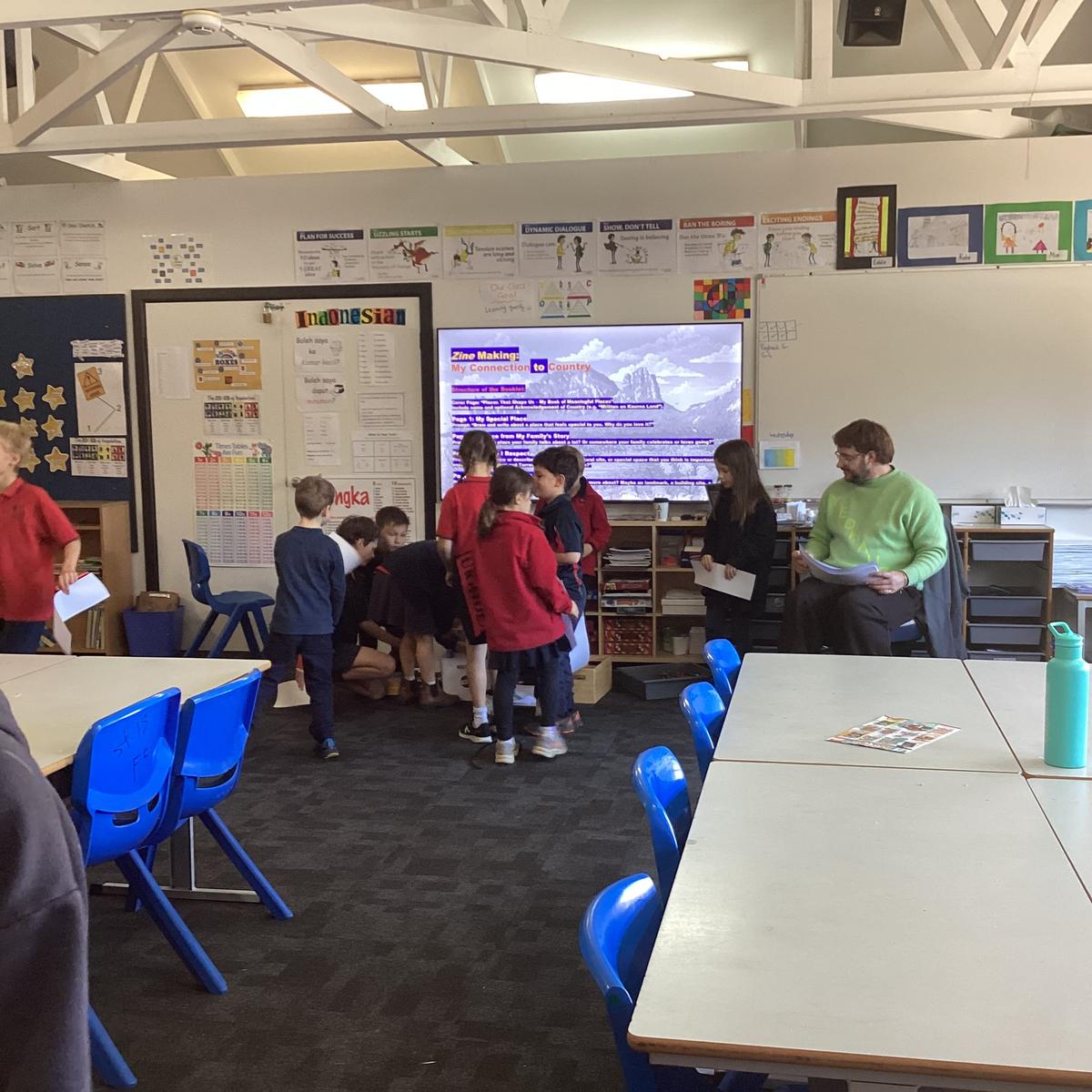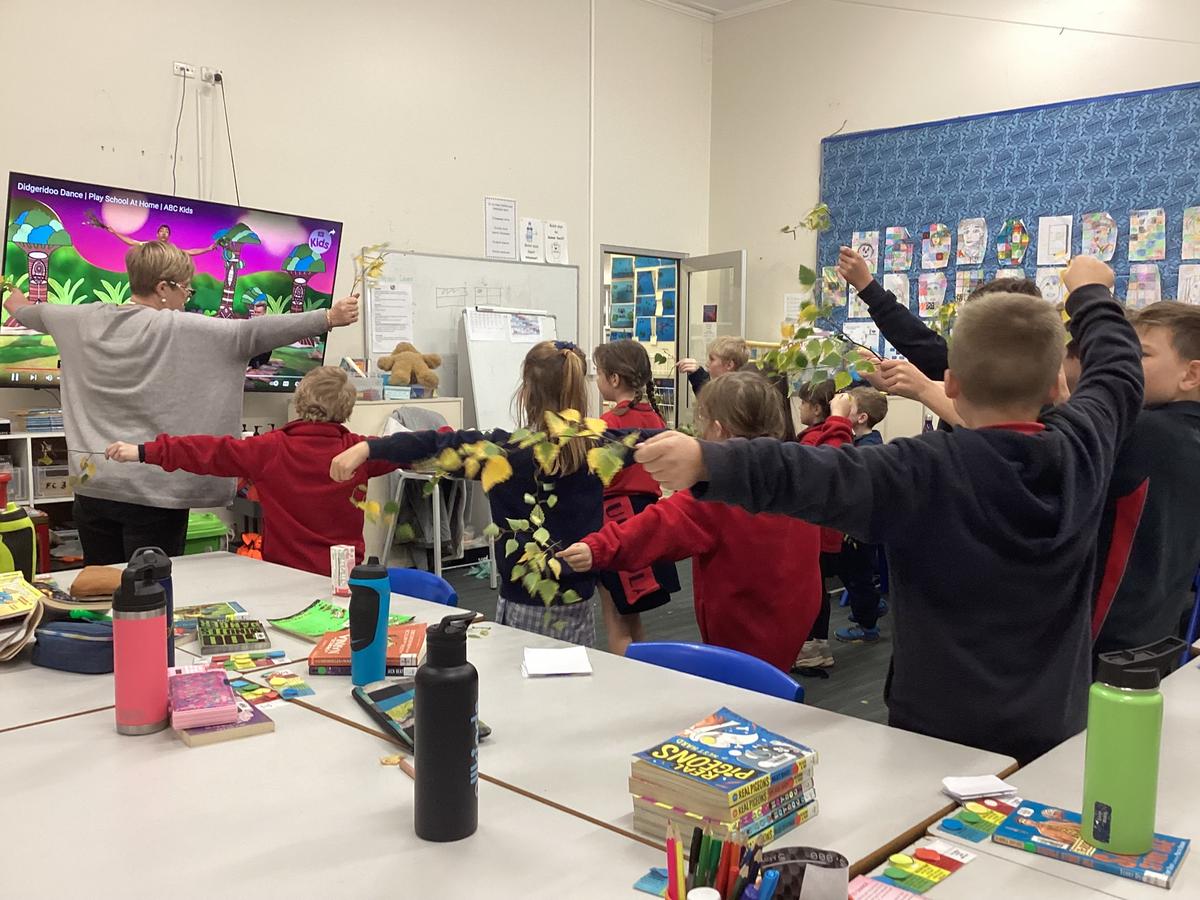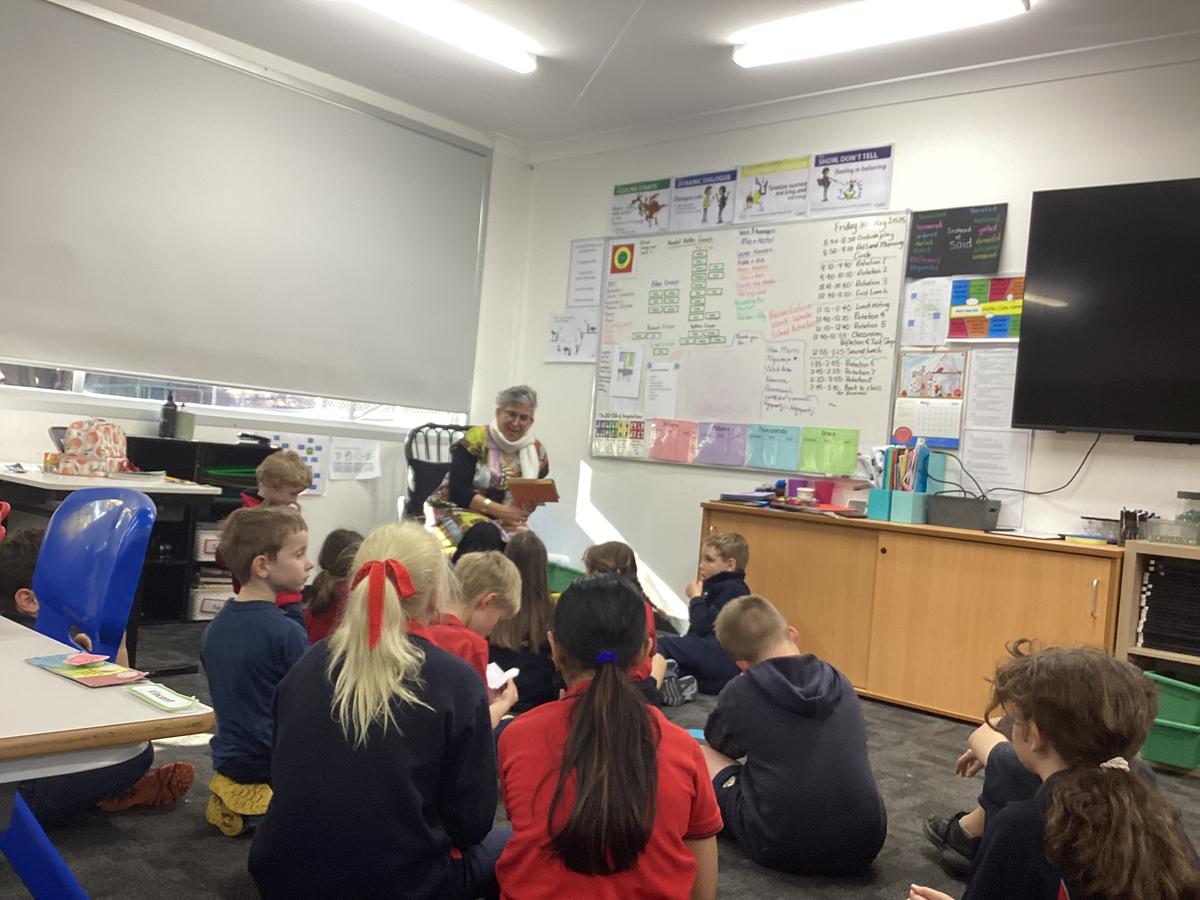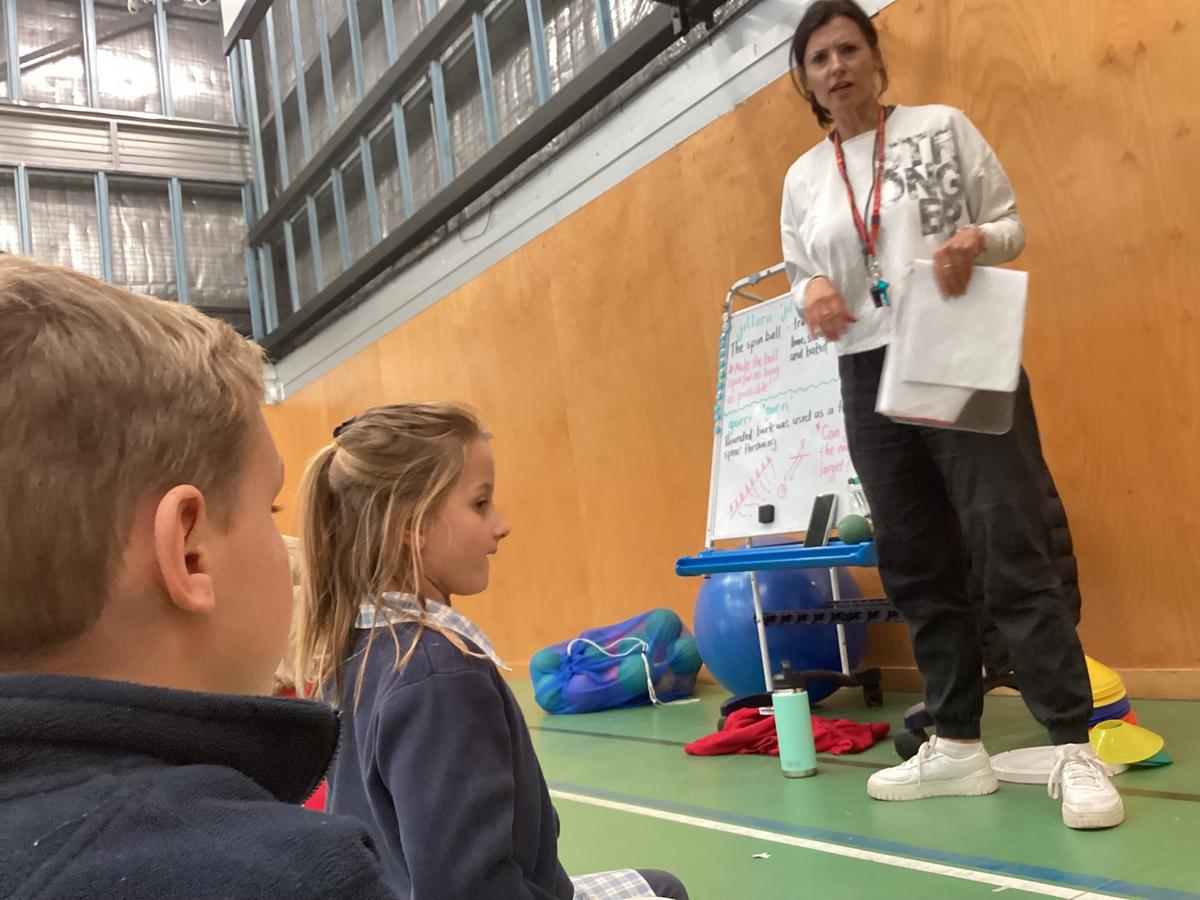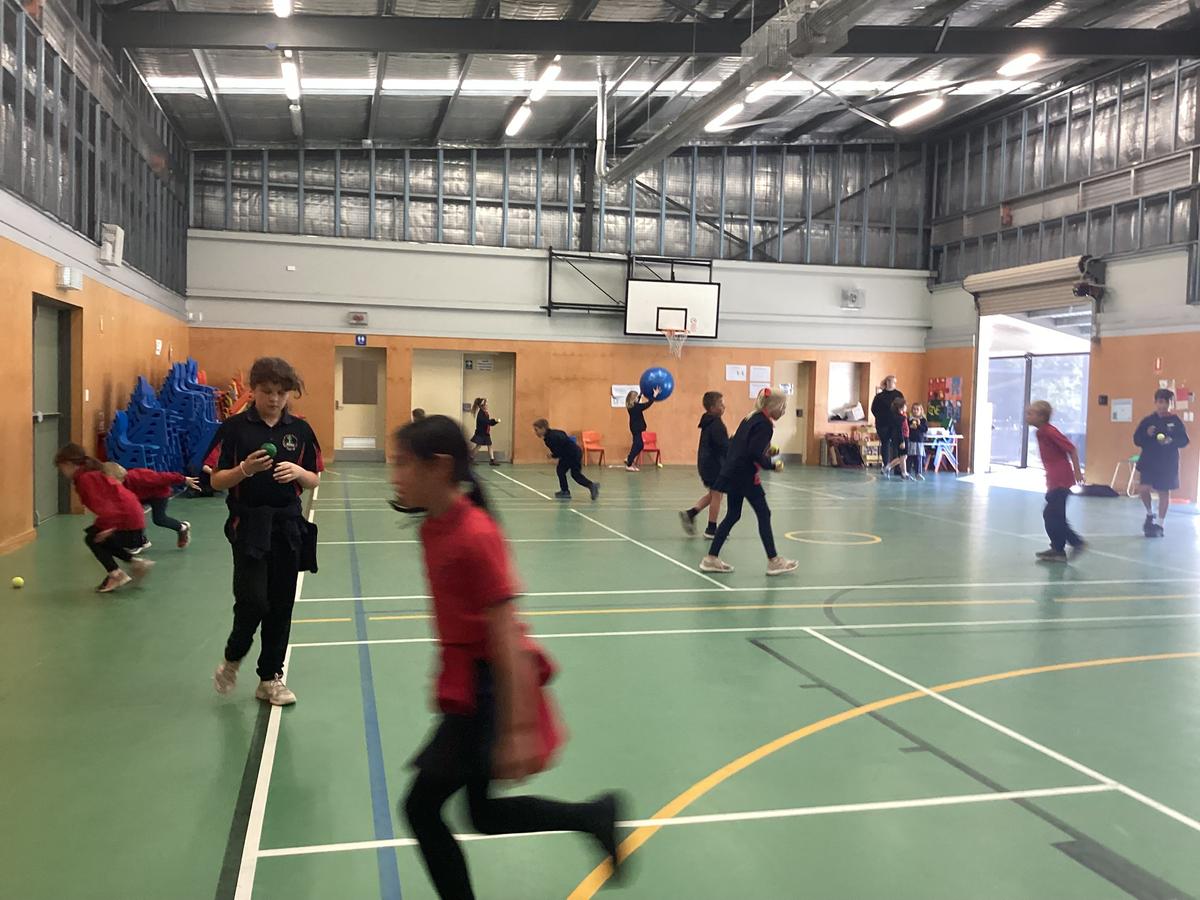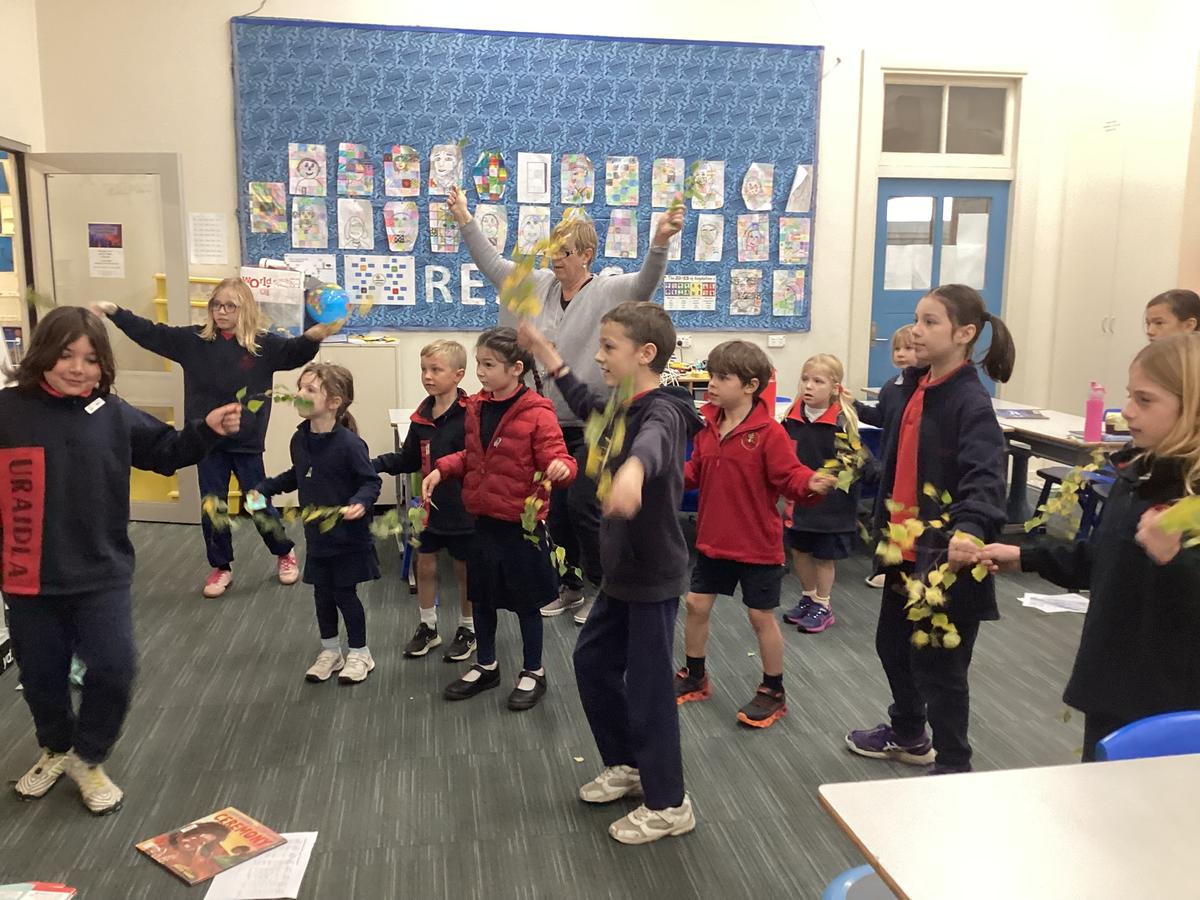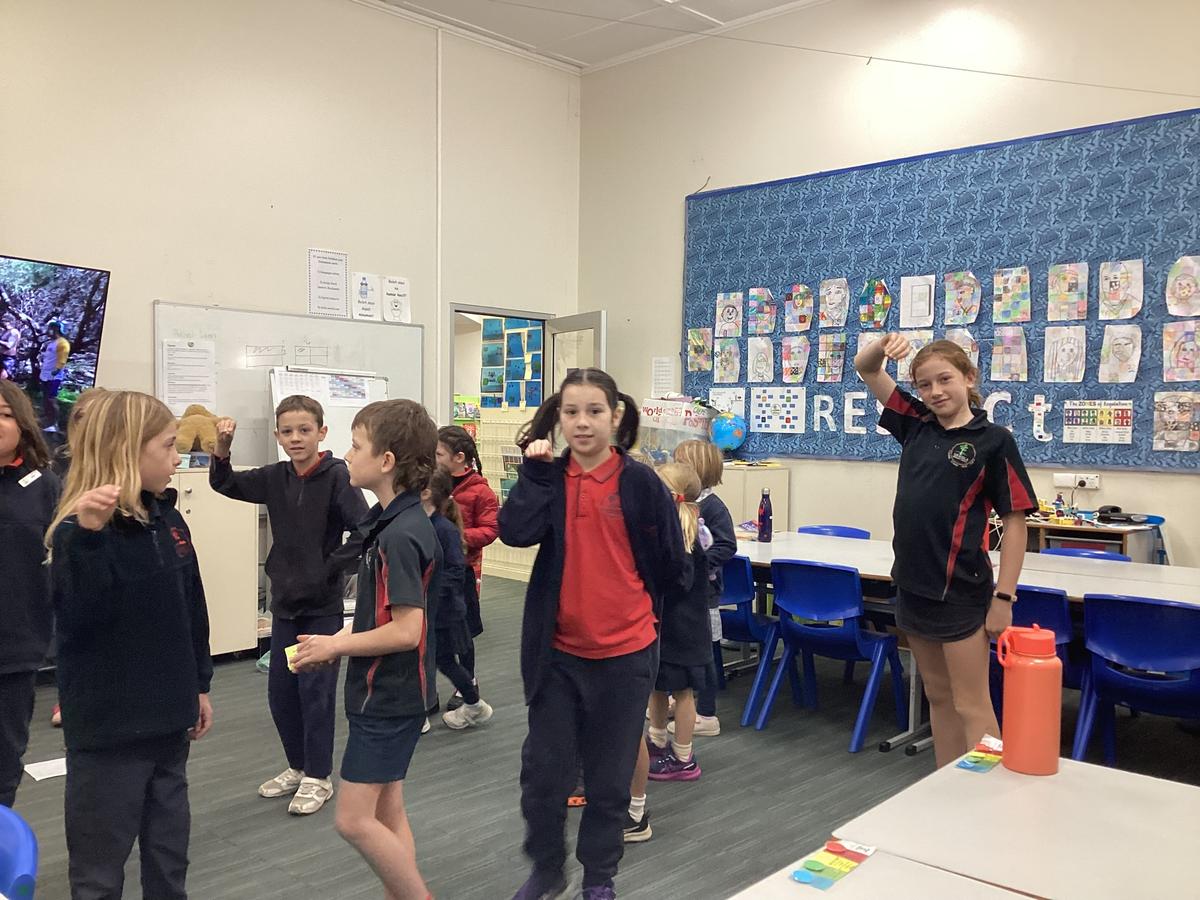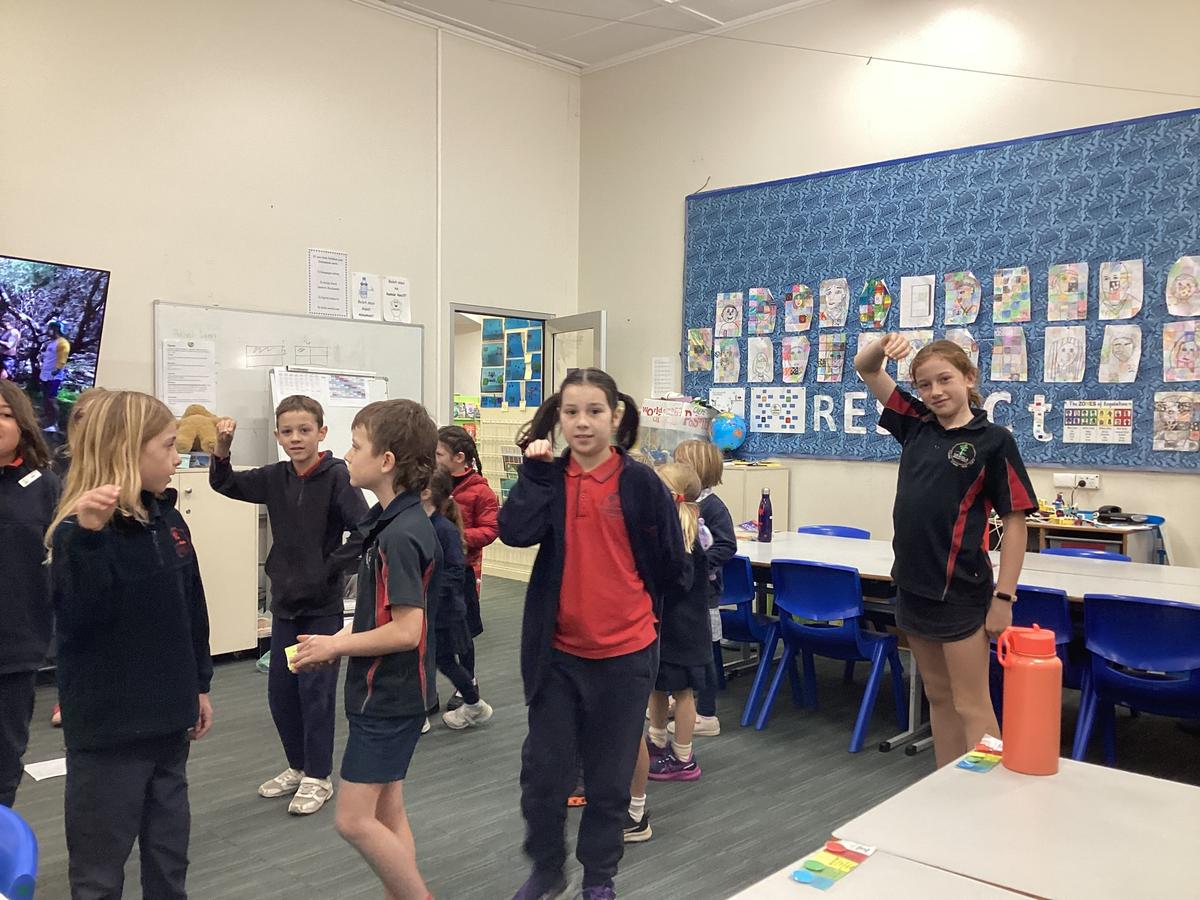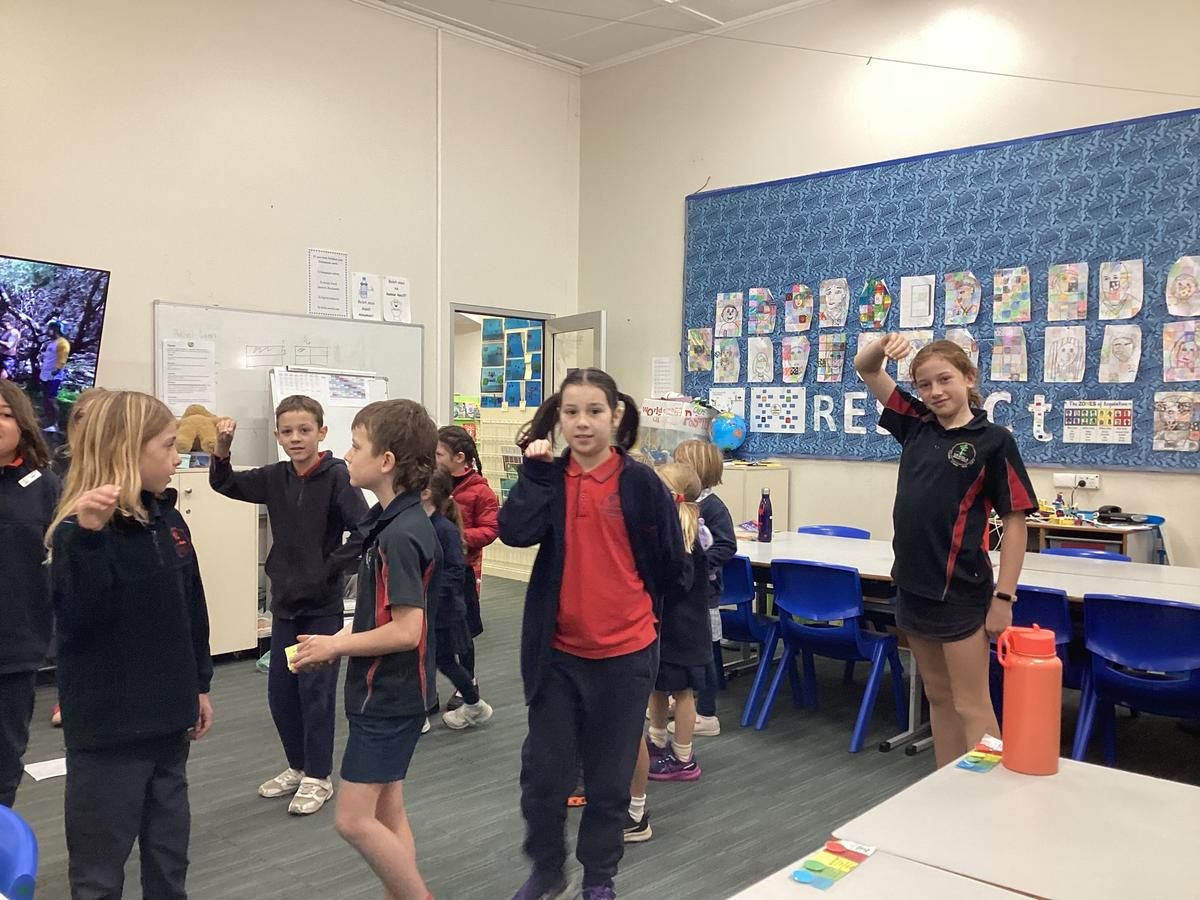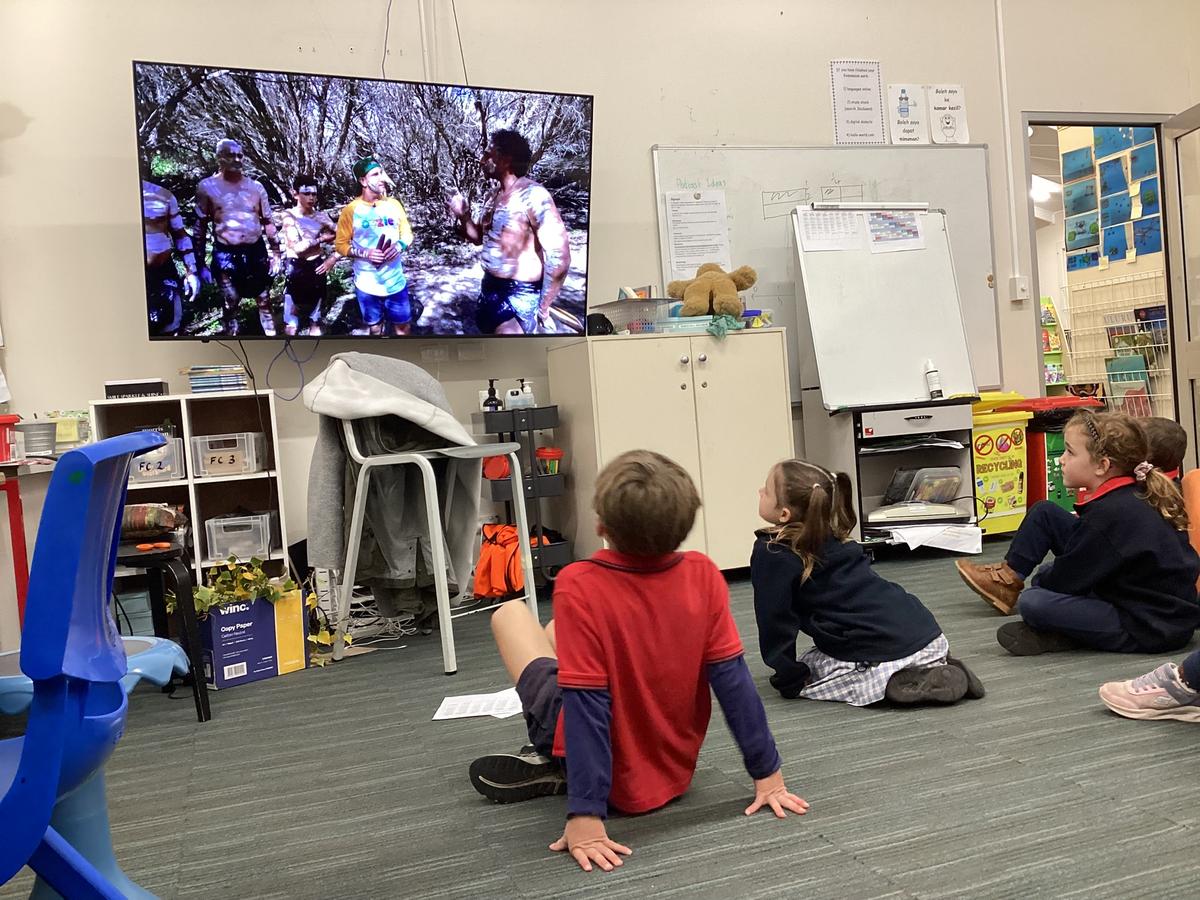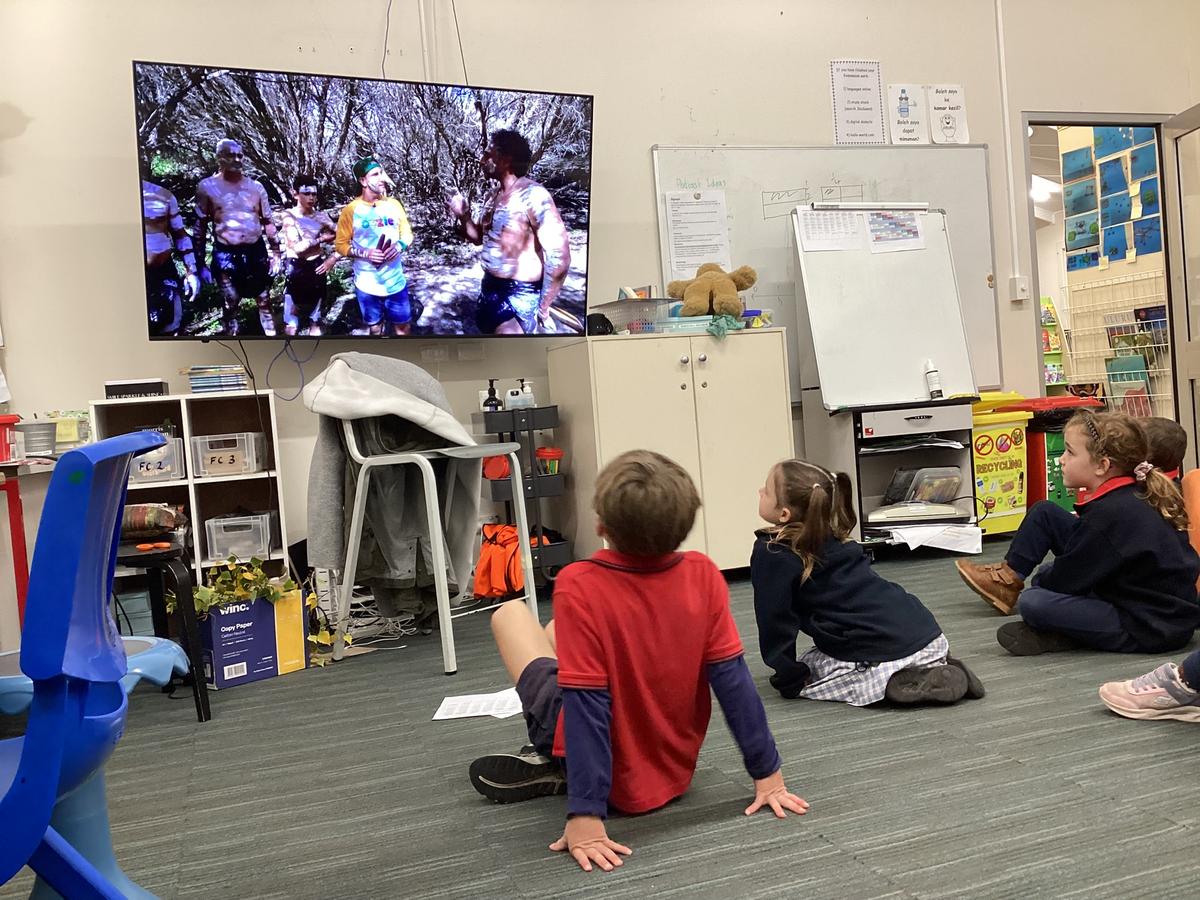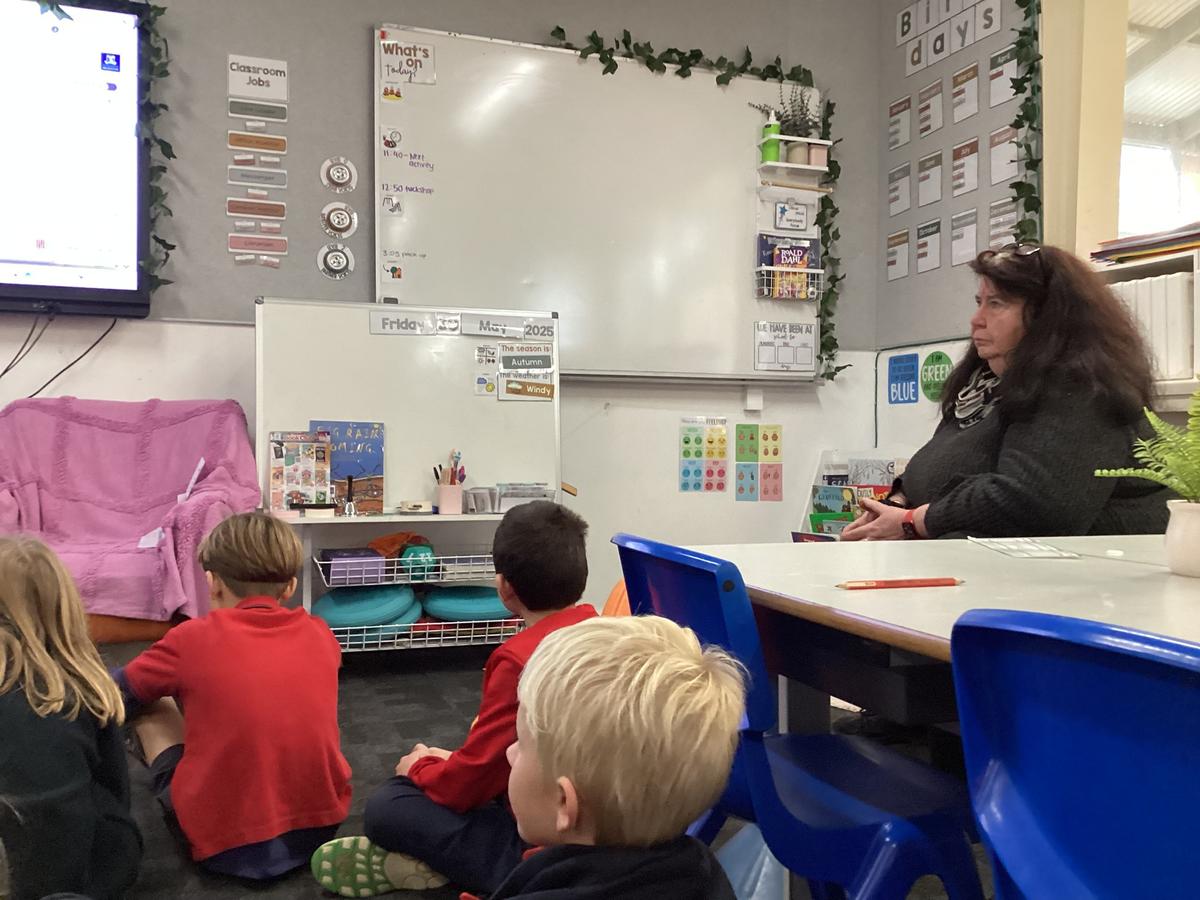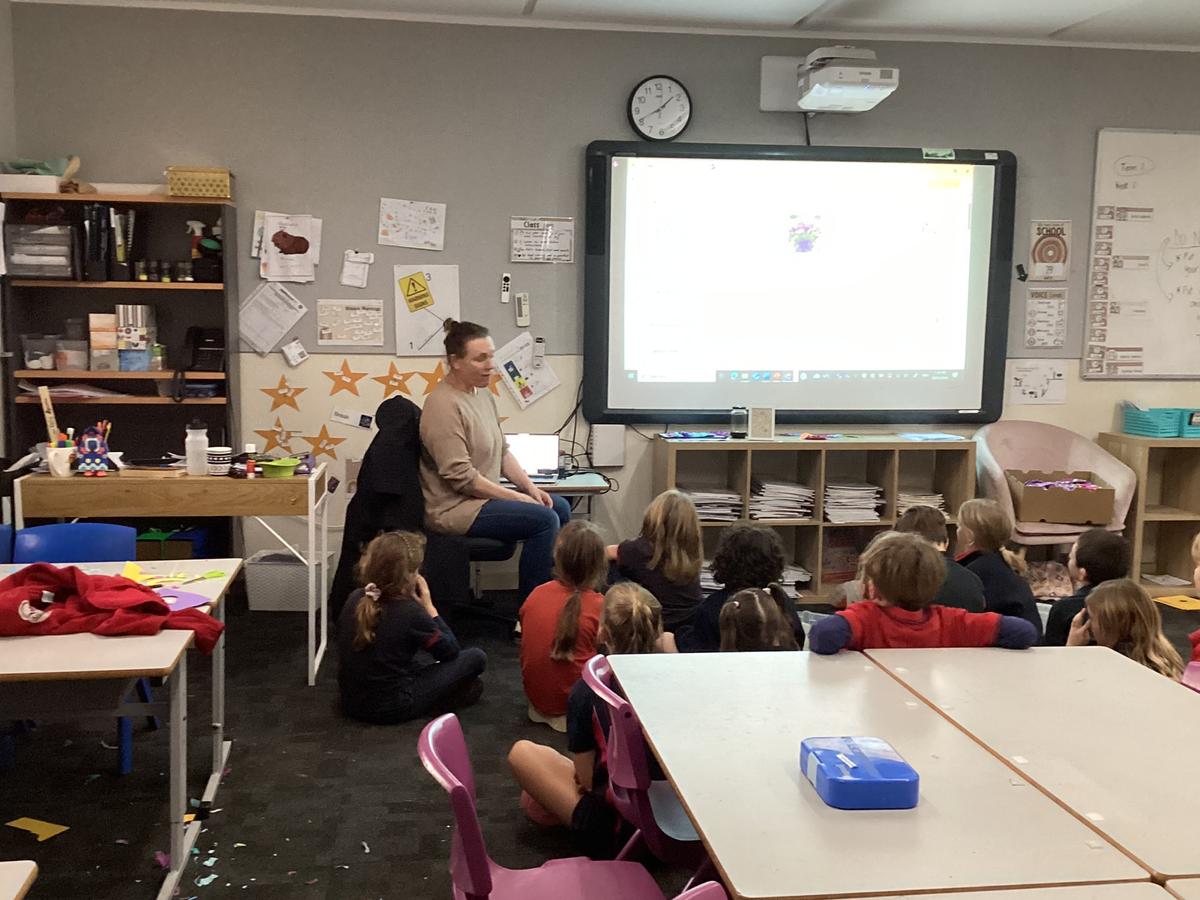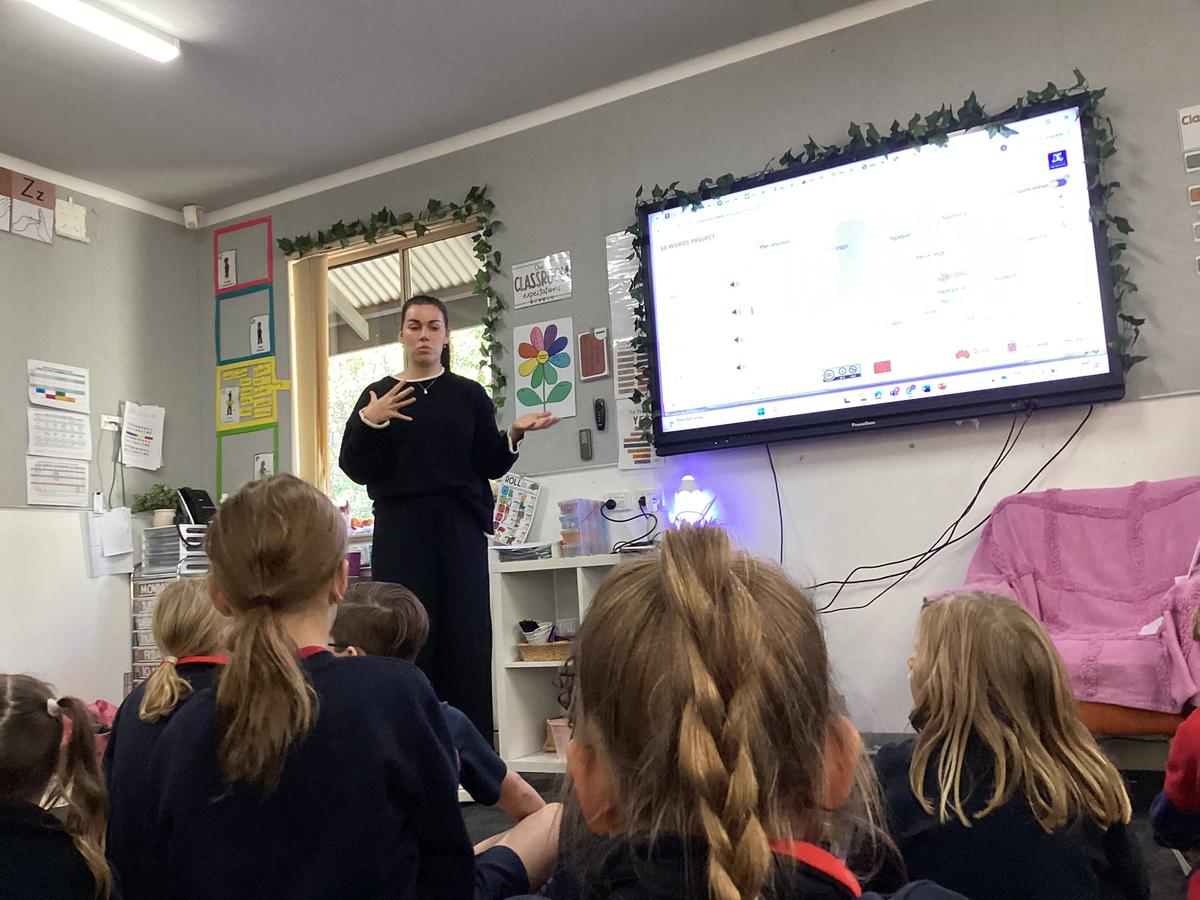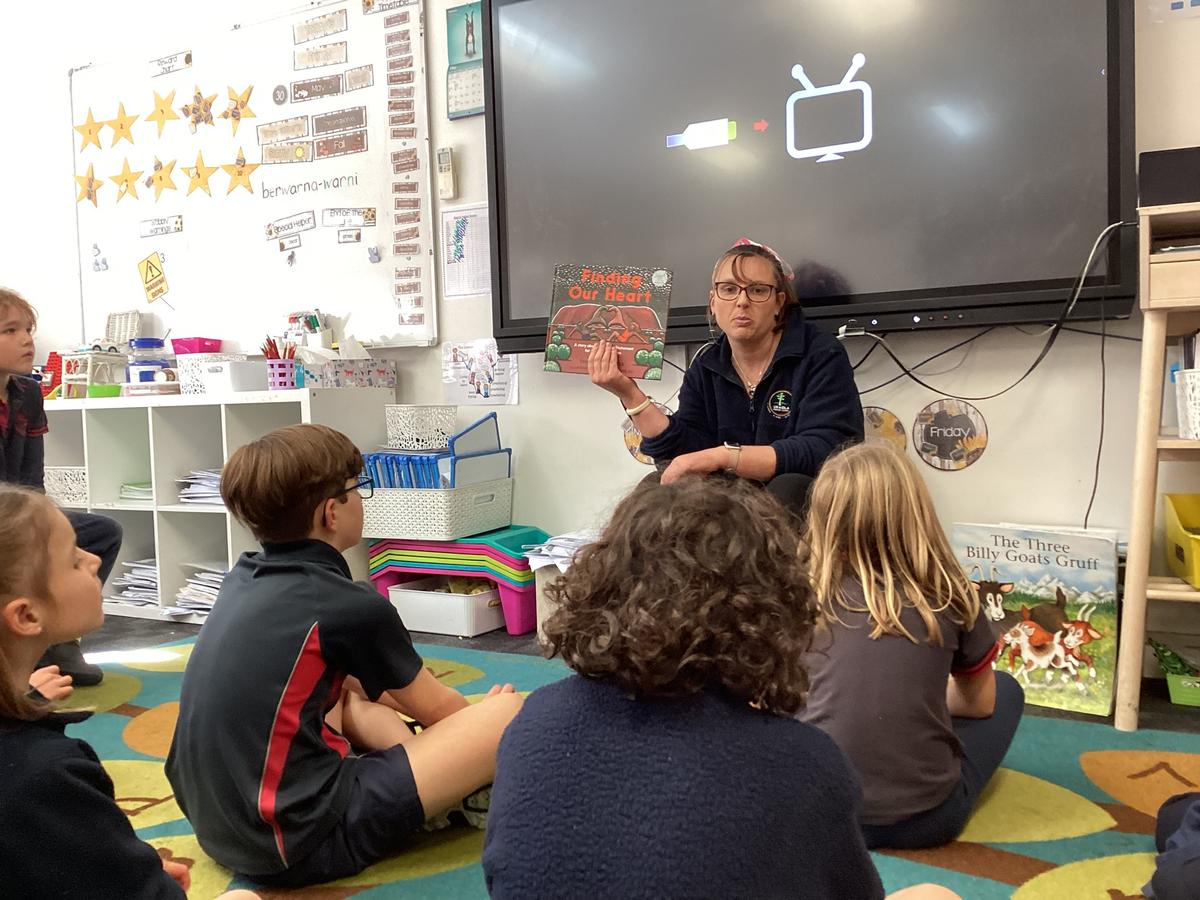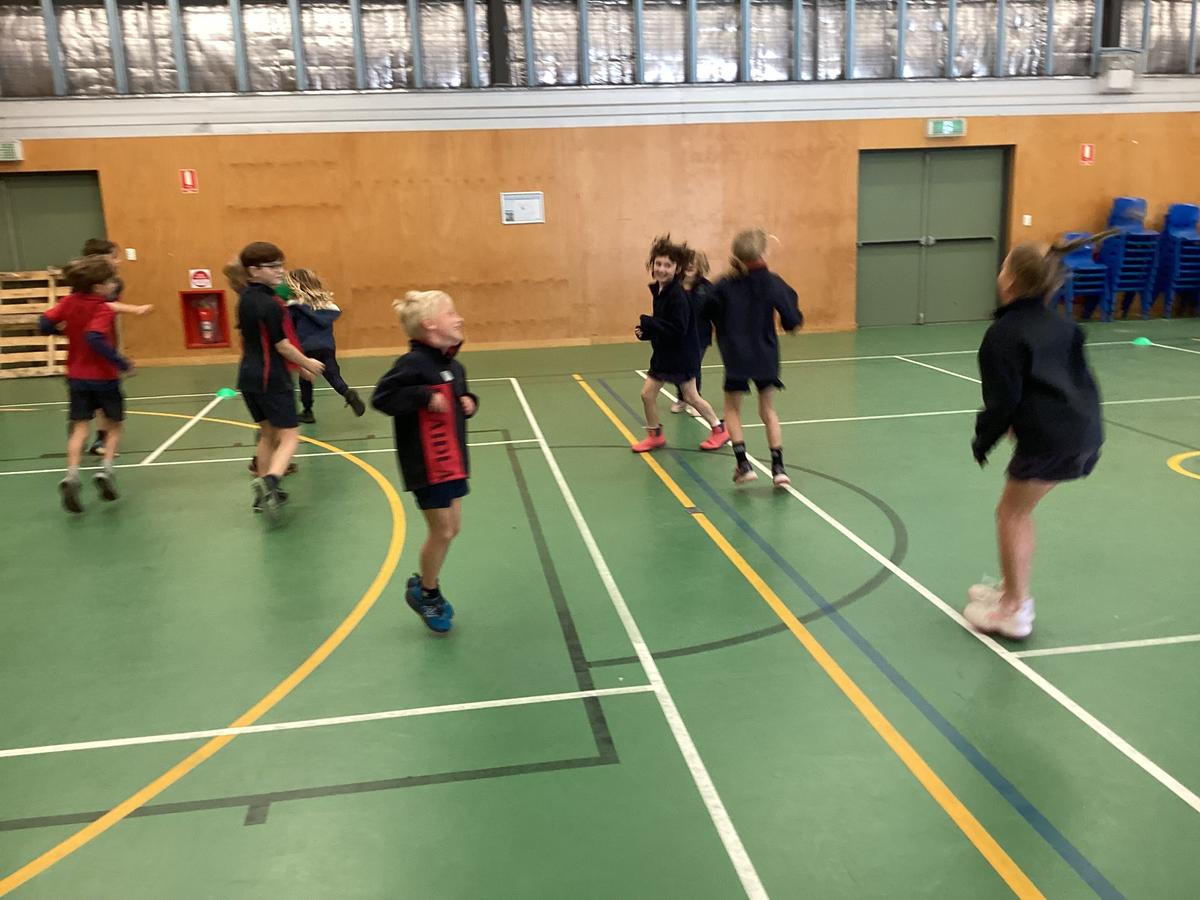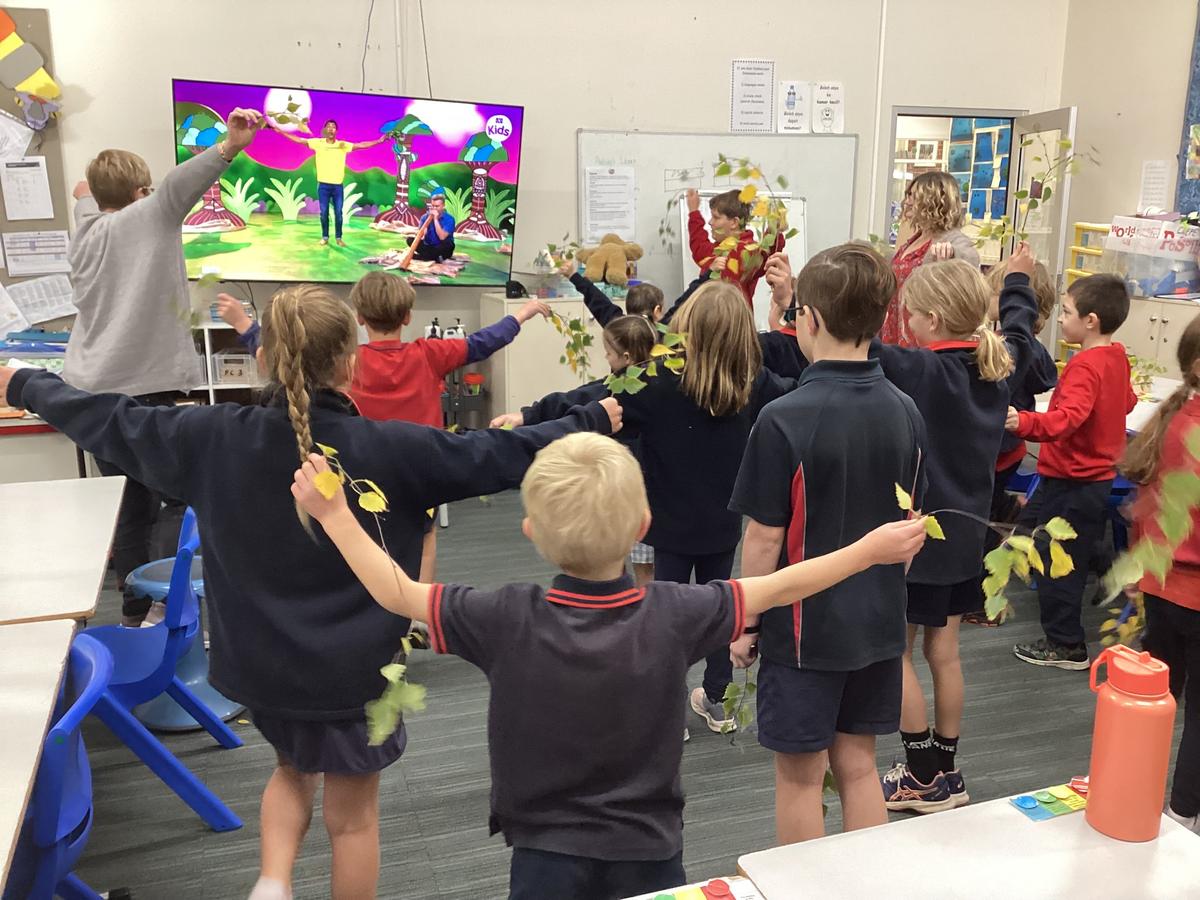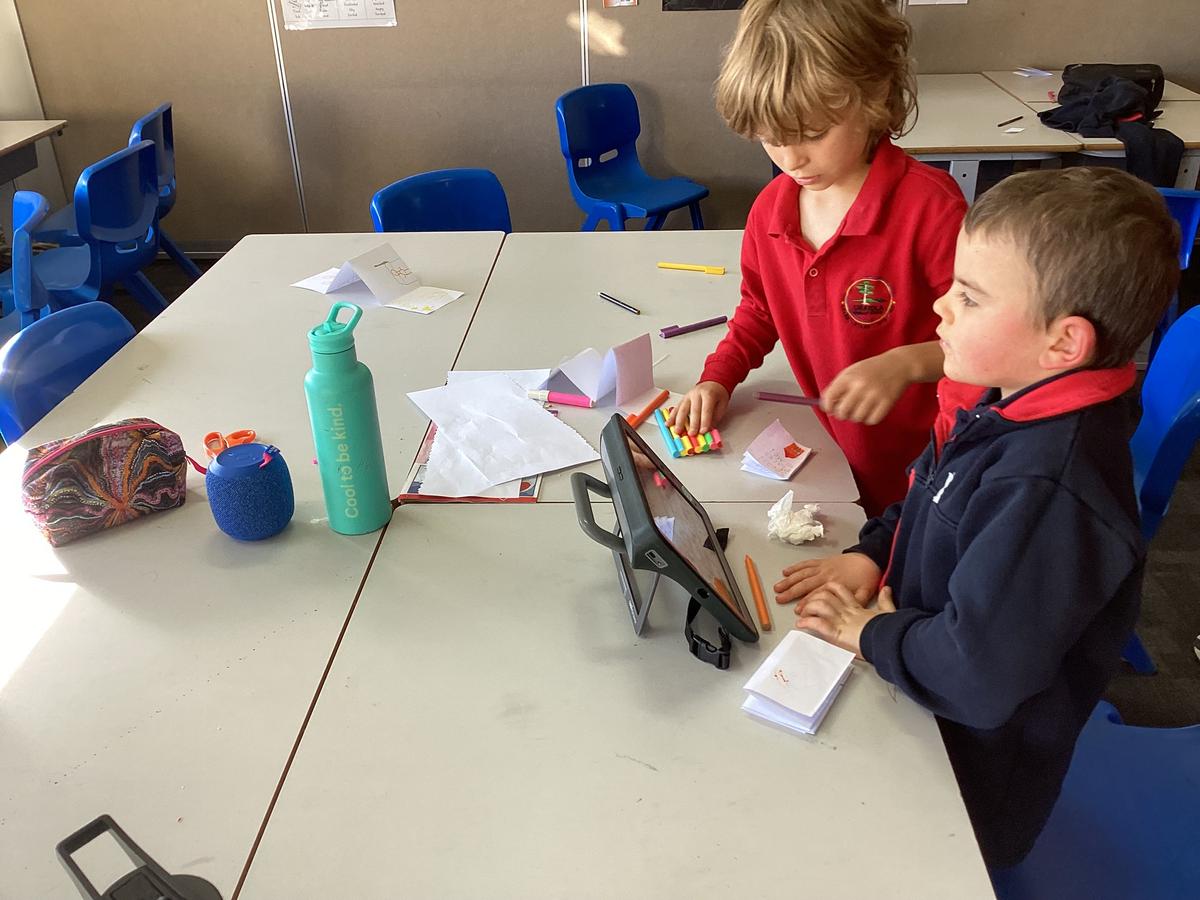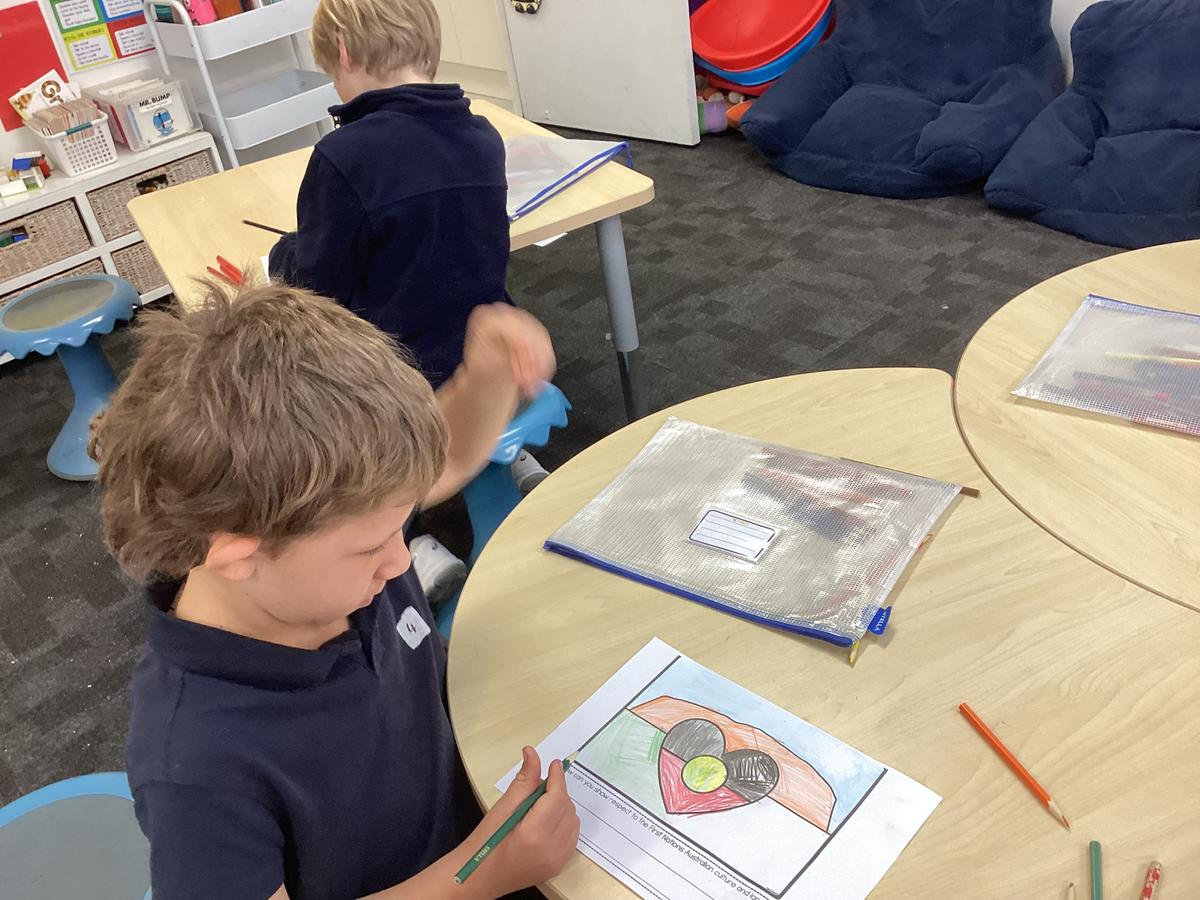Reconciliation Day
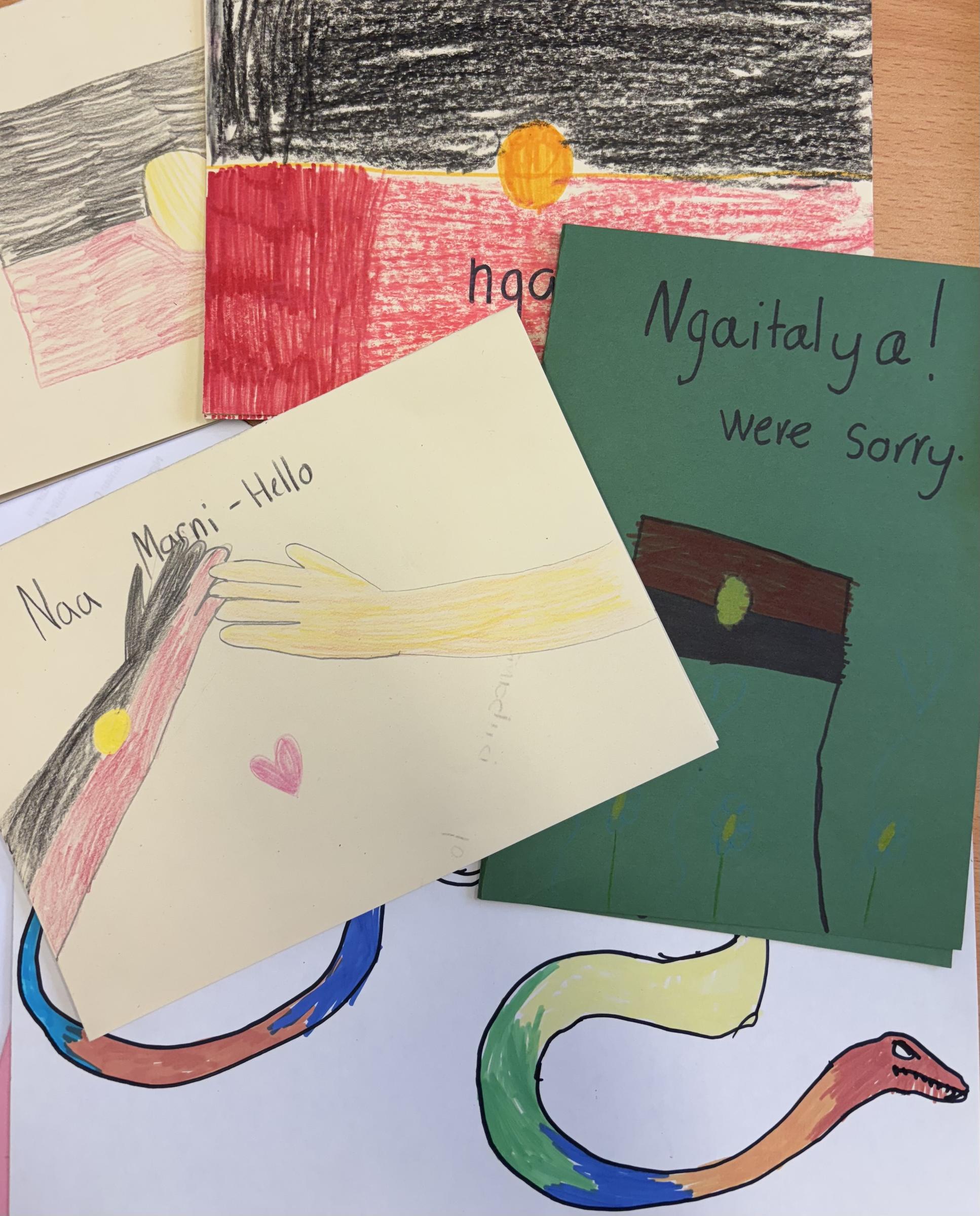
Group 1: Rachael P.E.
For Rachael's activity we played 3 Indigenous games. Jalori - where we had a netball or basketball and tried to spin the ball for the longest time. Gori - where we had tennis balls and had to throw them at a large exercise ball that was rolling down the court. The last game was Gangaroo where we had to hop like a kangaroo and then high five your team mate on the other side than they hop back. The winner was the first team to swap sides. It was really fun! -Xavier and Ashton.
Group 2: Woven Fish with Emma
In our activity, we did woven fish with Emma. It was challenging and fun at the same time because there are so many ways to design your fish. We made them by cutting out a piece of paper that is shaped like a fish. Then we had four small strands of coloured paper and we wove them through the paper. Then we moved the paper to any shape and design we wanted. Our designs are hung up in Emma/Sam’s room in a fishing net. Before we completed our fish, we watched a video on Eddie Mabo (who fought for Land Rights). He had a special connection to fish, and this is why we did this activity. Weaving is also a skill used by Aboriginal people for lots of things. By Callum and Harrison.
Group 3: Language And Songs with Jaya
We learnt some Kaurna language from the 50-word Project website. After some research, the groups wrote some Kaurna words and then presented them to the rest of the class. Aunty Dee also came in and complimented our word findings. Eg yaku=no, nii=yes, taa=mouth and mukartar-head. From Jameson, Sam and Maud.
Group 4: Native Hibiscus with Kelly
On Friday, we were in Kelly’s class working in our groups on making card flowers into hibiscus’ by gluing coloured tissue papers onto the card flower. We glued the tissues in certain patterns to make it stand out like a flower. Hibiscus flowers are often worn on Sorry Day to symbolise white people taking over Aboriginal land. Hibiscus flowers are often purple, yellow, orange or pink and you can use them to make syrup. Innes, Ellie S.O. and Eloise.
Group 5: Music and Dance with Sallie
This was our first activity of the day. Firstly, we read book by Adams Goodes; the books name was Ceremony. While we were reading the book, there was some digeridoo music playing. Then we watched a video of First Nations people dancing to the digeridoo with white ochre painted on their face. They were acting out Australian animals such as emus, lizards and kangaroos. After having all that fun watching the video. We then danced to the best show ever ...Play School. We were dancing with branches in our hands acting as if we were a bird and we all had a great time! by Harry and Sophie
Group 6 - Places Zine with Andrew
In Reconciliation week we made place Zines with Andrew. The Zines were about the special places that made us feel connected to the land. The first page was about our own special place, and the second was about our families and the third one was the place you respect. The fourth, your favourite place. This was a thoughtful way to reconnect to the land and to understand how Aboriginal people connected to the land. On the cover or on the inside we were encouraged to write “written on Kaurna land”. Thank you to Andrew!!! Ellie and Arlo.
Group 7 - Finding our Heart Story with Katie
In our group, you could really tell that it was Reconciliation Week. We started off reading a story called Finding Our Heart by Thomas Mayor and Blak Douglas. It was all about the different people that make up Australia, but understanding the First Nations people were the first. Then individually we did some creative designs based on the Aboriginal flag and at the bottom, we had to write about how we can respect and support Aboriginal people. Everyone worked well together, and it was really fun. From Jessica and Louie.
Group 8: Gratitude Letters with Margie
With Margie our group wrote Gratitude Letters thanking the First Nations people for the land we are on. It included thanking them for the teaching us to care for this amazing land, for the music, their dances and all the things they have given up or lost since white settlers came to Australia. We put some Kaurna words into them as well, and we thanked them for the language. We decorated them with Aboriginal pictures and symbols. By Kiara, Eddie and Mac.
